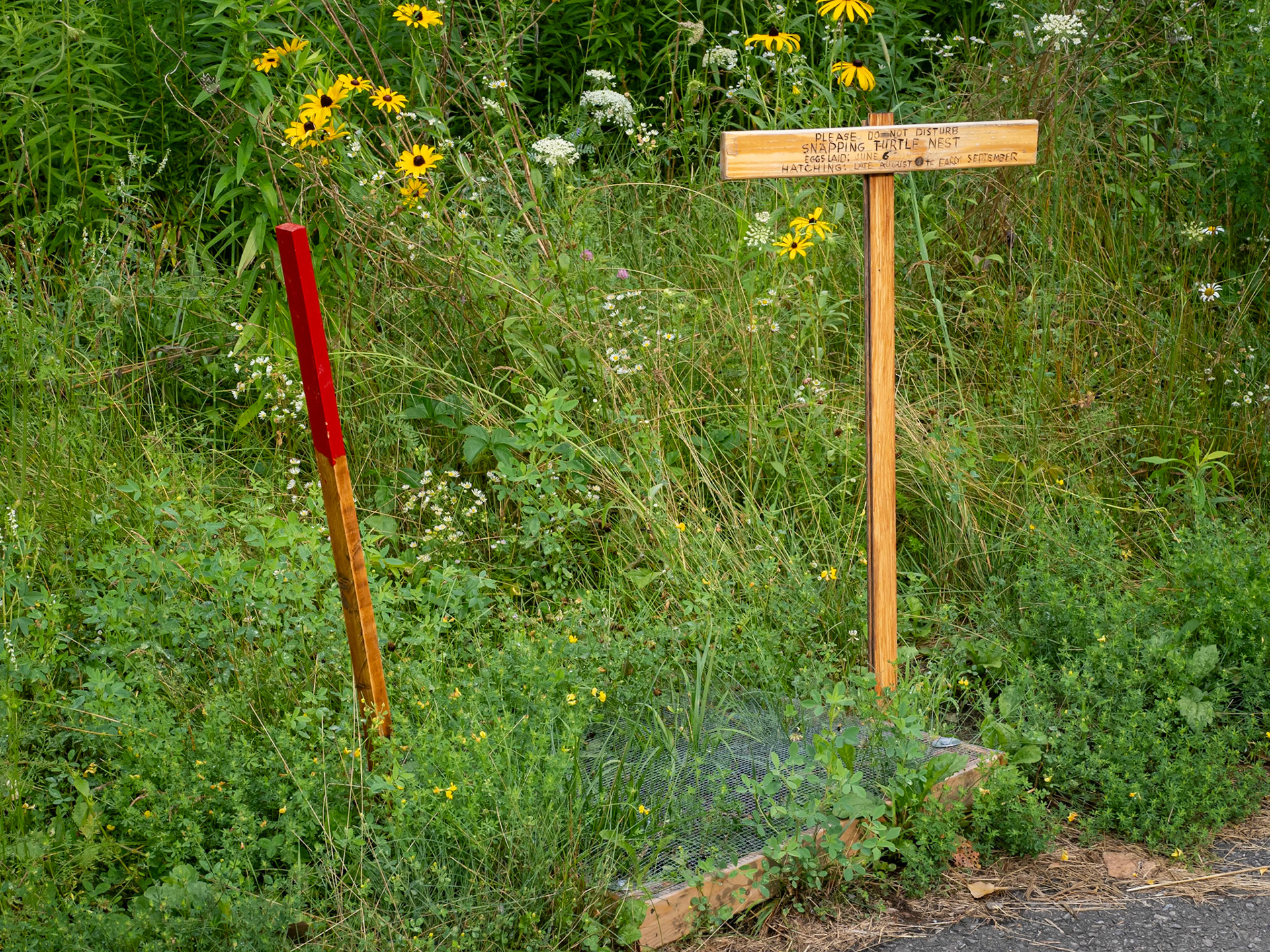Somewhere, approximately under "KS on the Keys", there is a "portal" (City of Ottawa terminology) that directs overflow water from the Sawmill Creek into the storm water settling ponds just west of South Keys Plaza. (The official plans say three ponds, but even City staff agree there are really four). There is another much smaller pond south of Hunt Club called the "Duck Pond", behind Produce Depot.
Walking west through the Trillium Line tunnel next to Walmart and the turning right brings you to the channel carrying the overflow. When the level is low the mallard ducks enjoy relaxing on a sandbar.
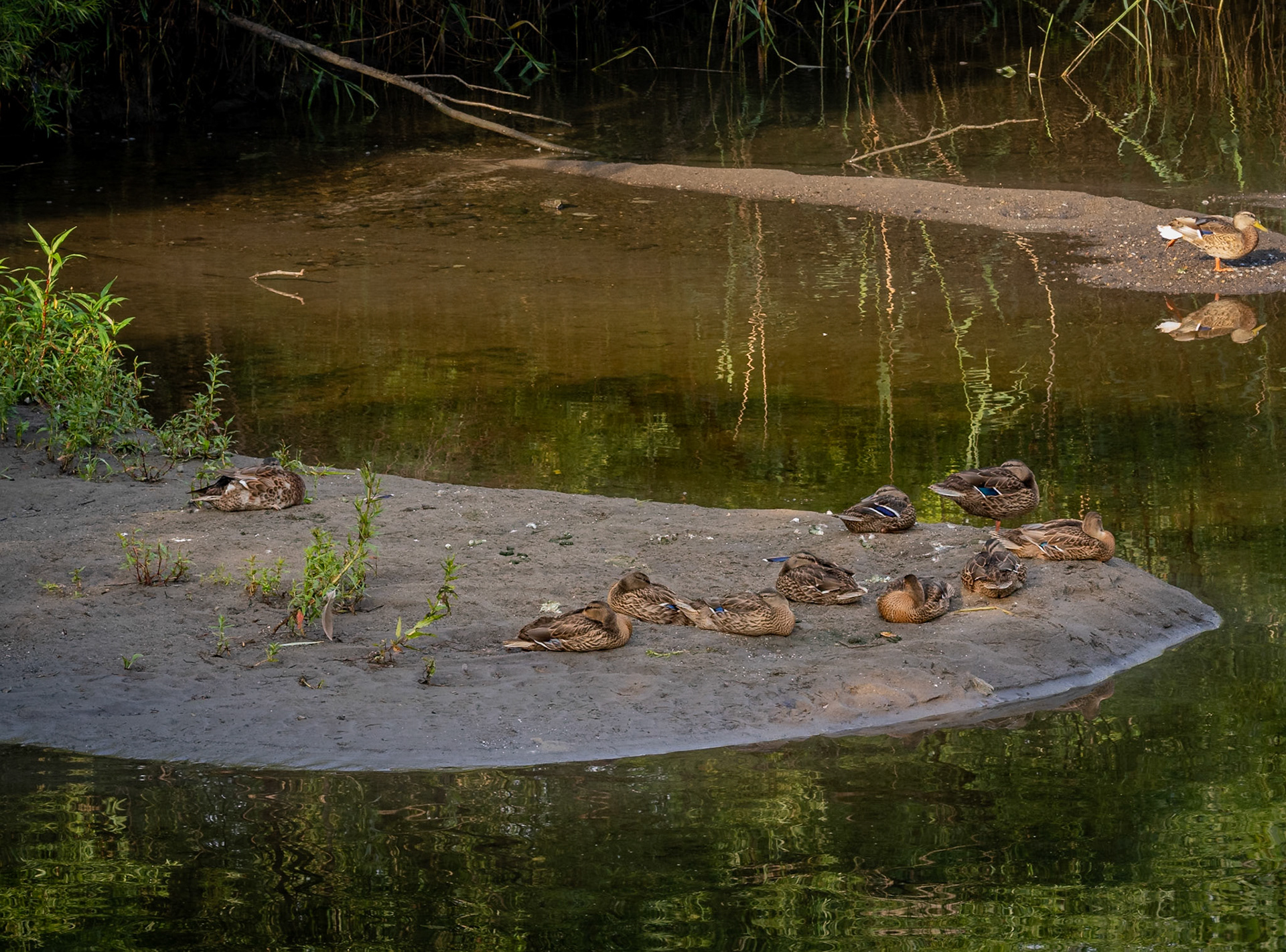
The channel, looking south and north from the small bridge going out towards the Airport Parkway
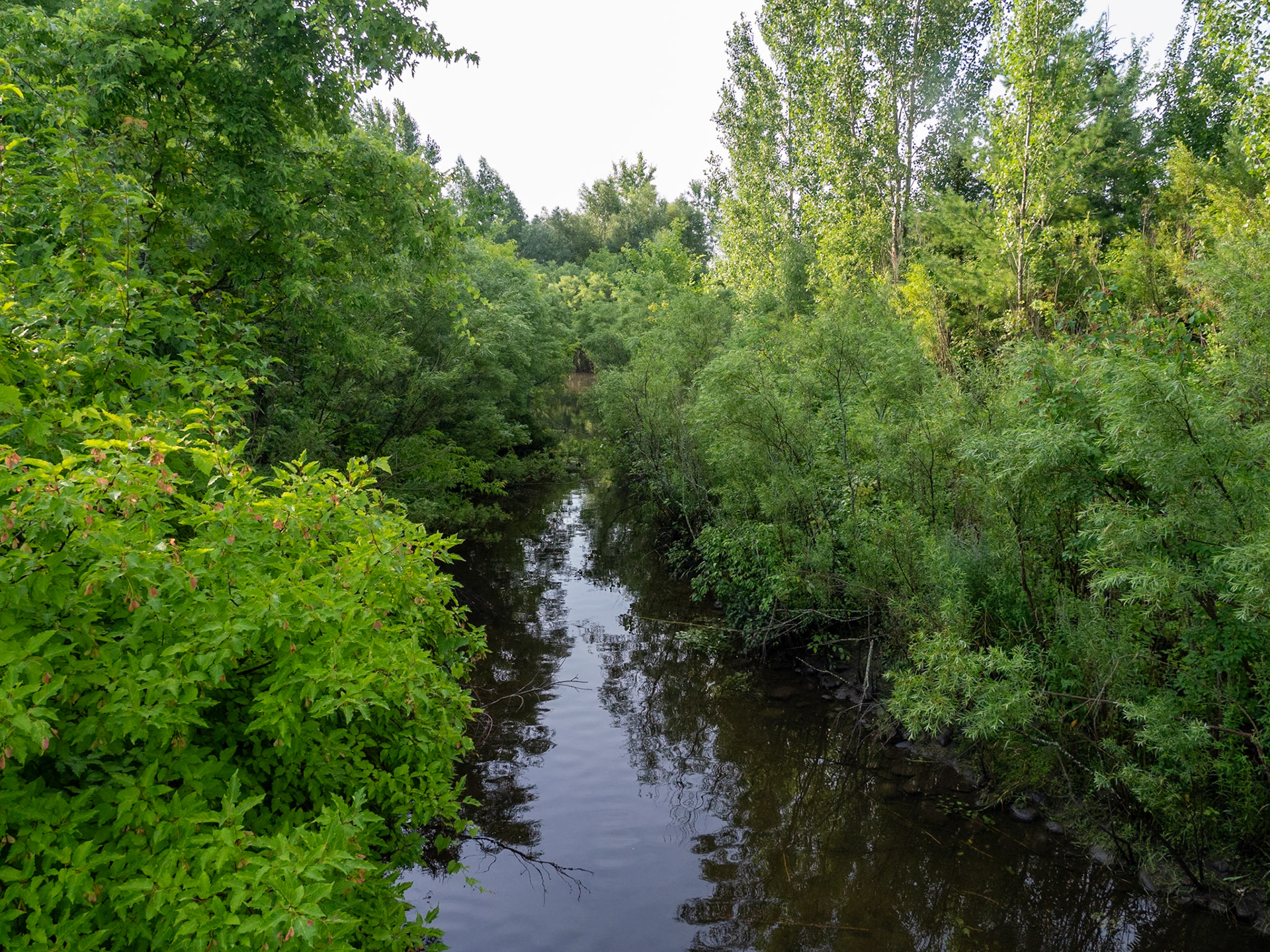
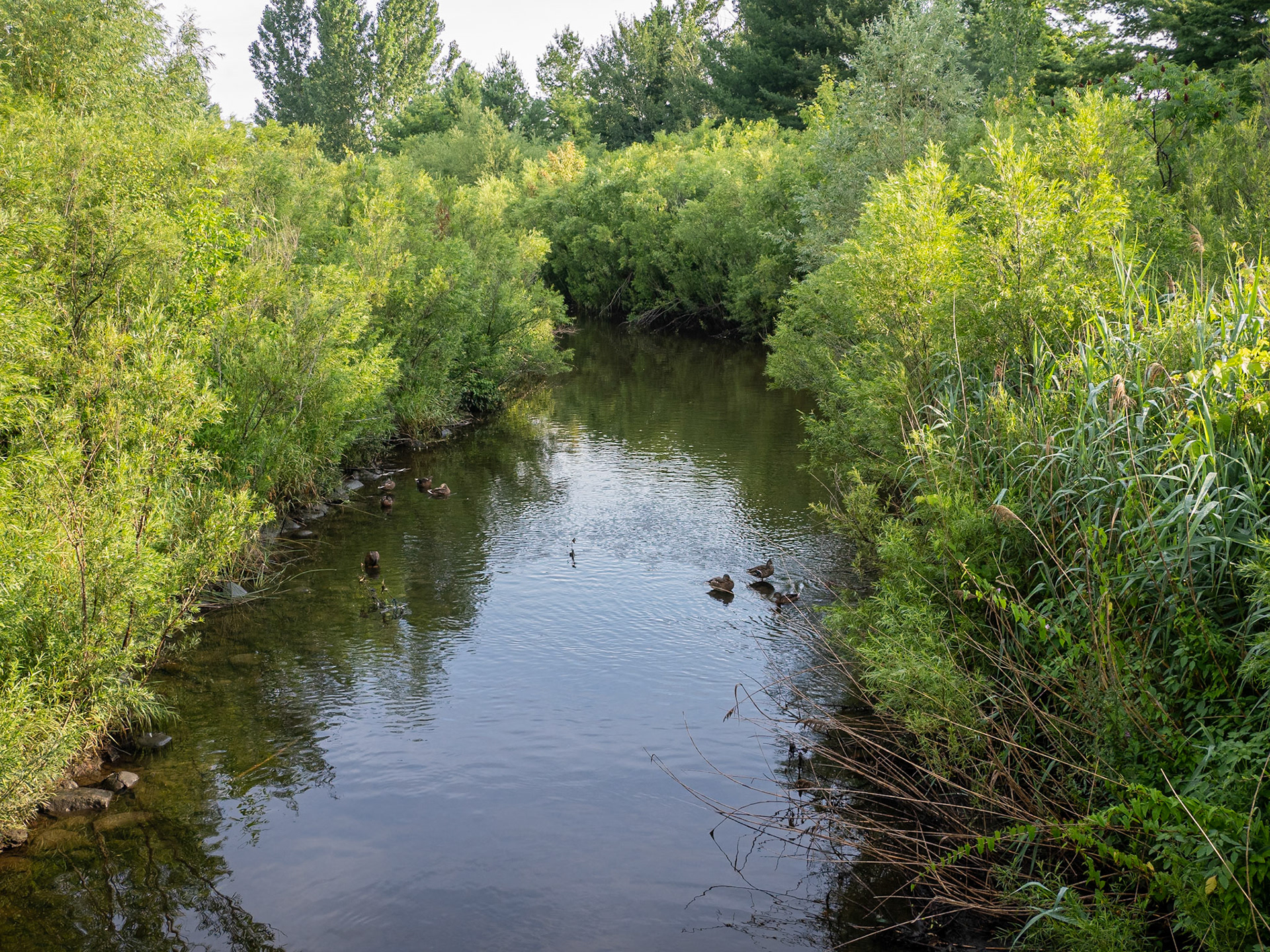
There are mallards, a few wood ducks and occasionally a merganser or two on the ponds. One female mallard had some quite young ducklings; a late brood, or a second clutch??
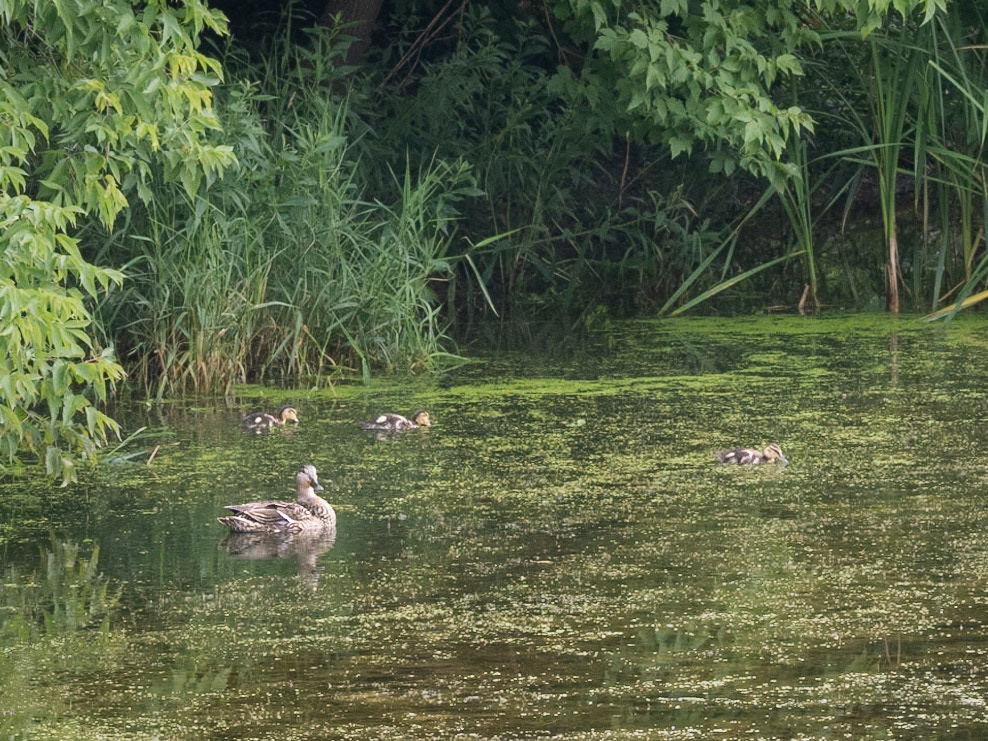
The vegetation had been growing very quickly and encroaching on some of the swallow nesting boxes someone placed along the pathway several years ago
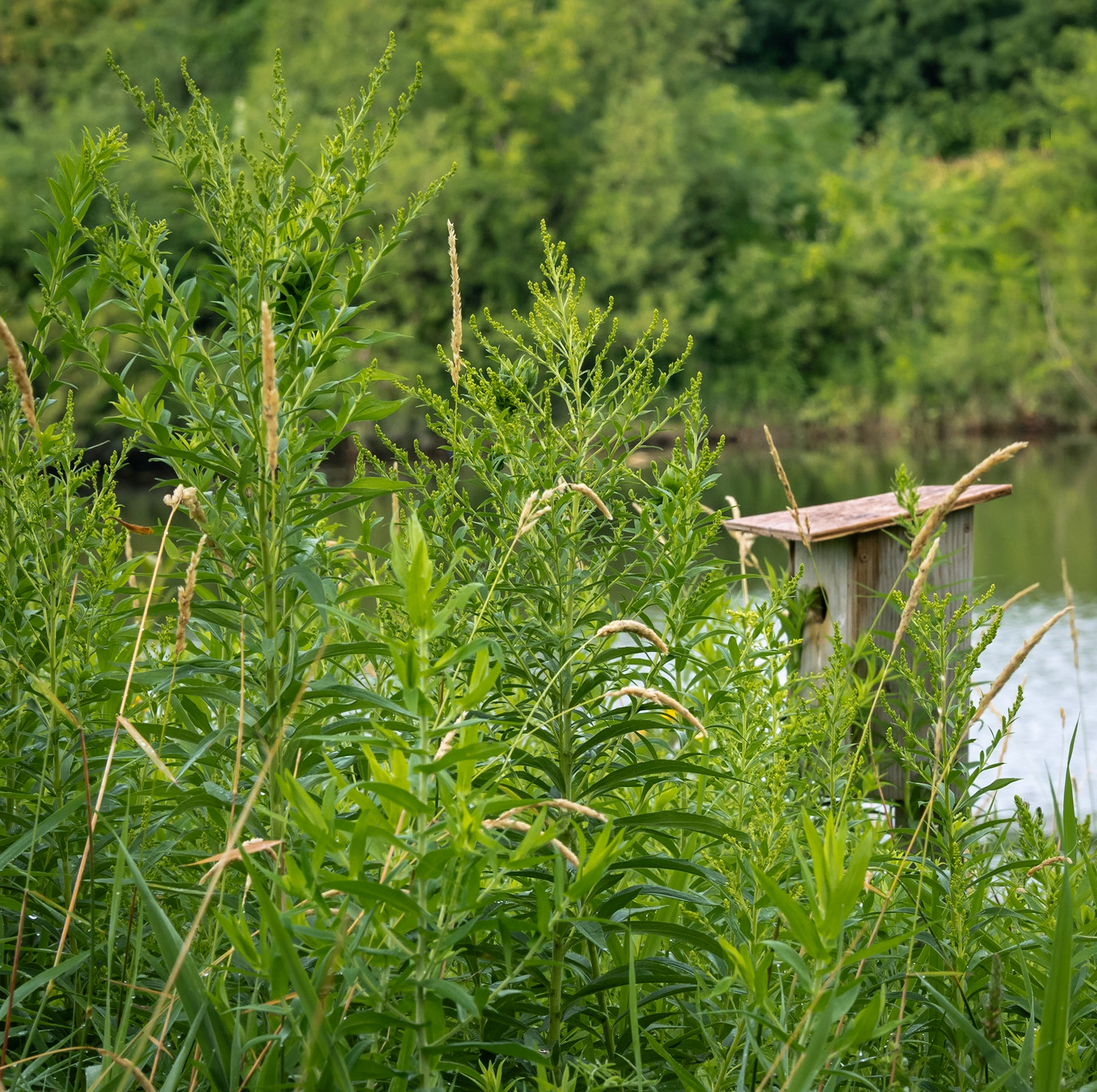
But at least two of the boxes were still in active use. Presumably with second broods.
Incoming mum with a mayfly brunch and outgoing mum removing fecal matter from the nest.
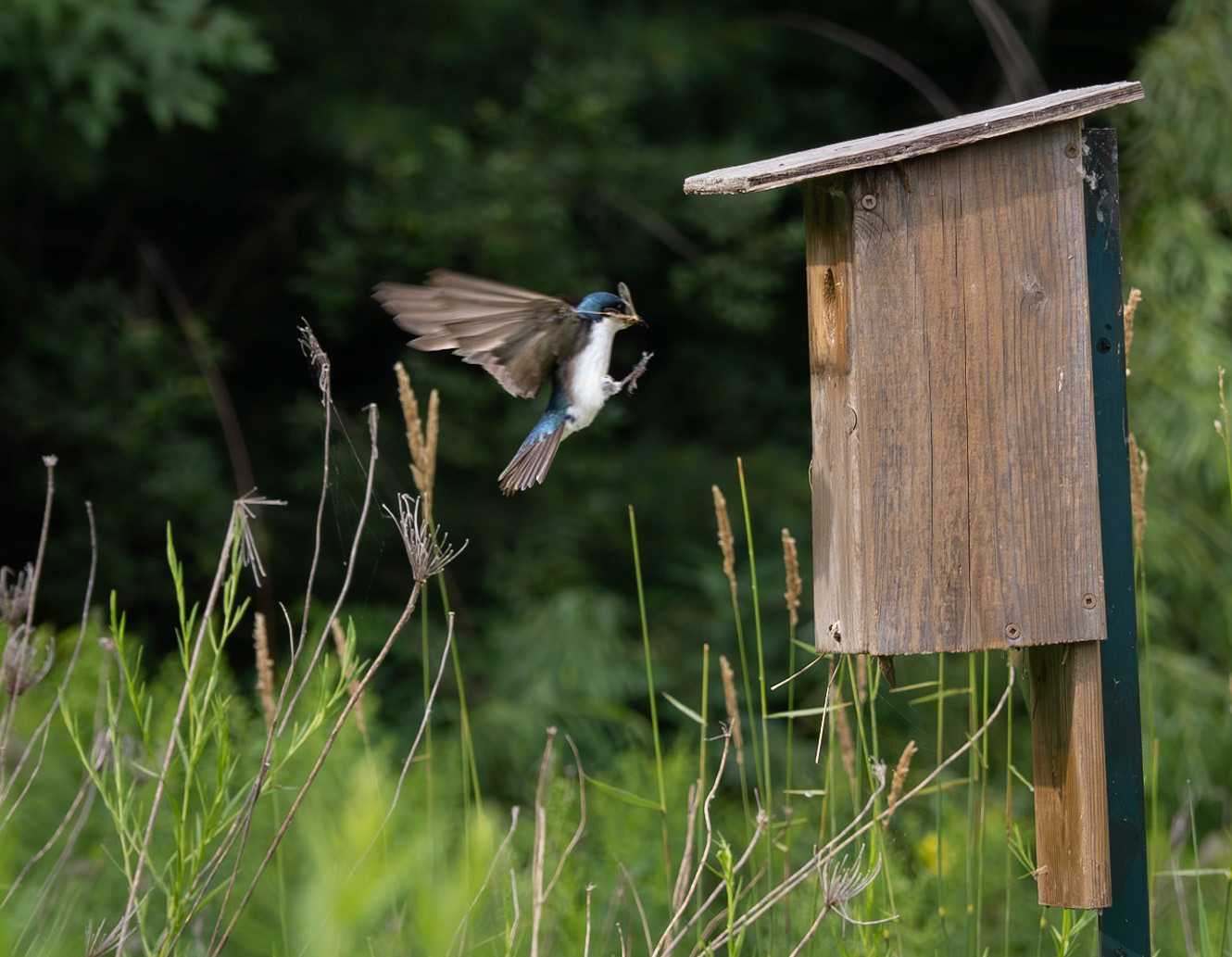
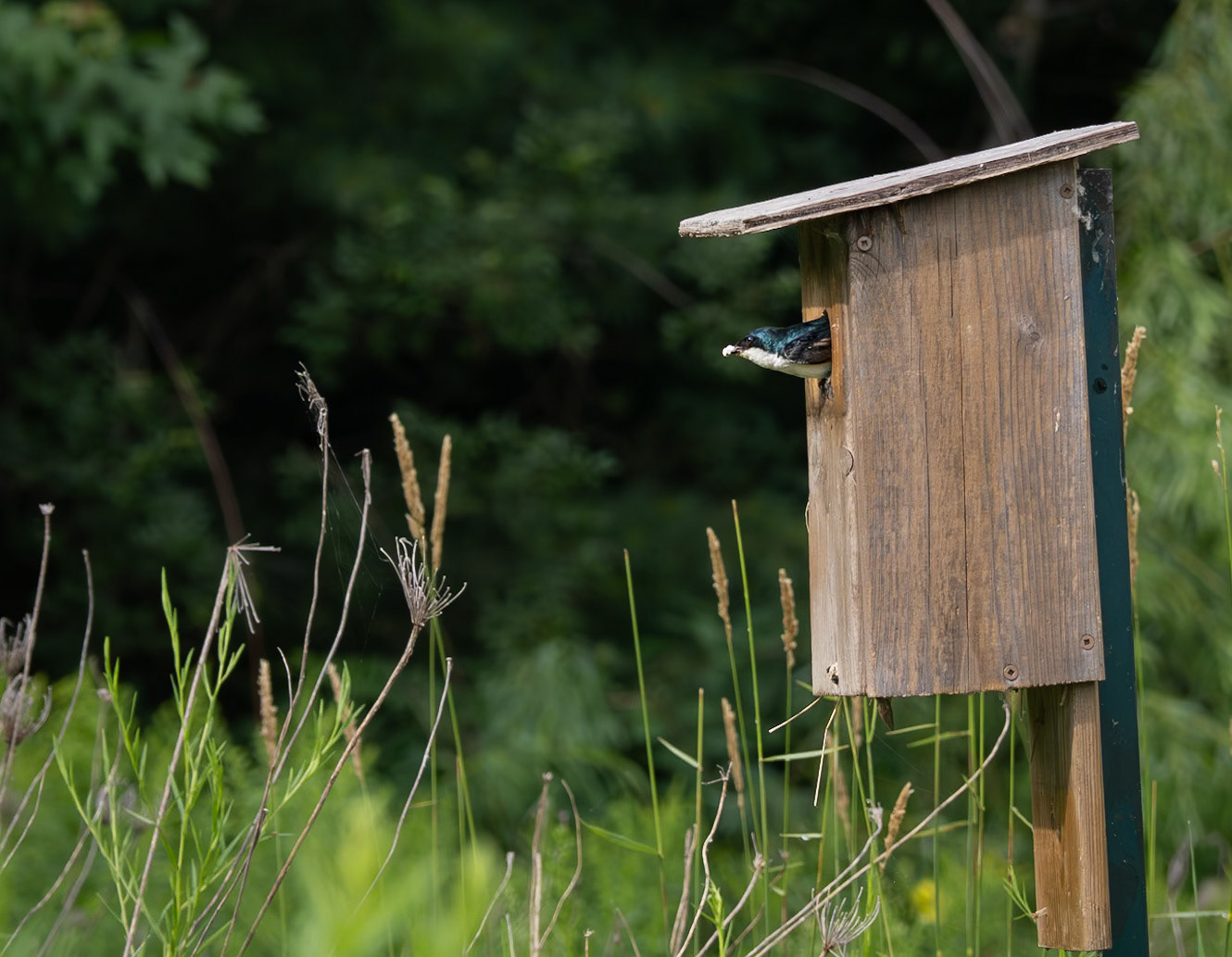
A phoebe had been building a nest at the north end of the third pond in early May. A phoebe was still around in the same area this visit.

Not having my long lens I missed a presentable photo of a black-crowned night heron flying over quite high, but I did salvage a barely presentable record shot of an egret flying about in the ponds
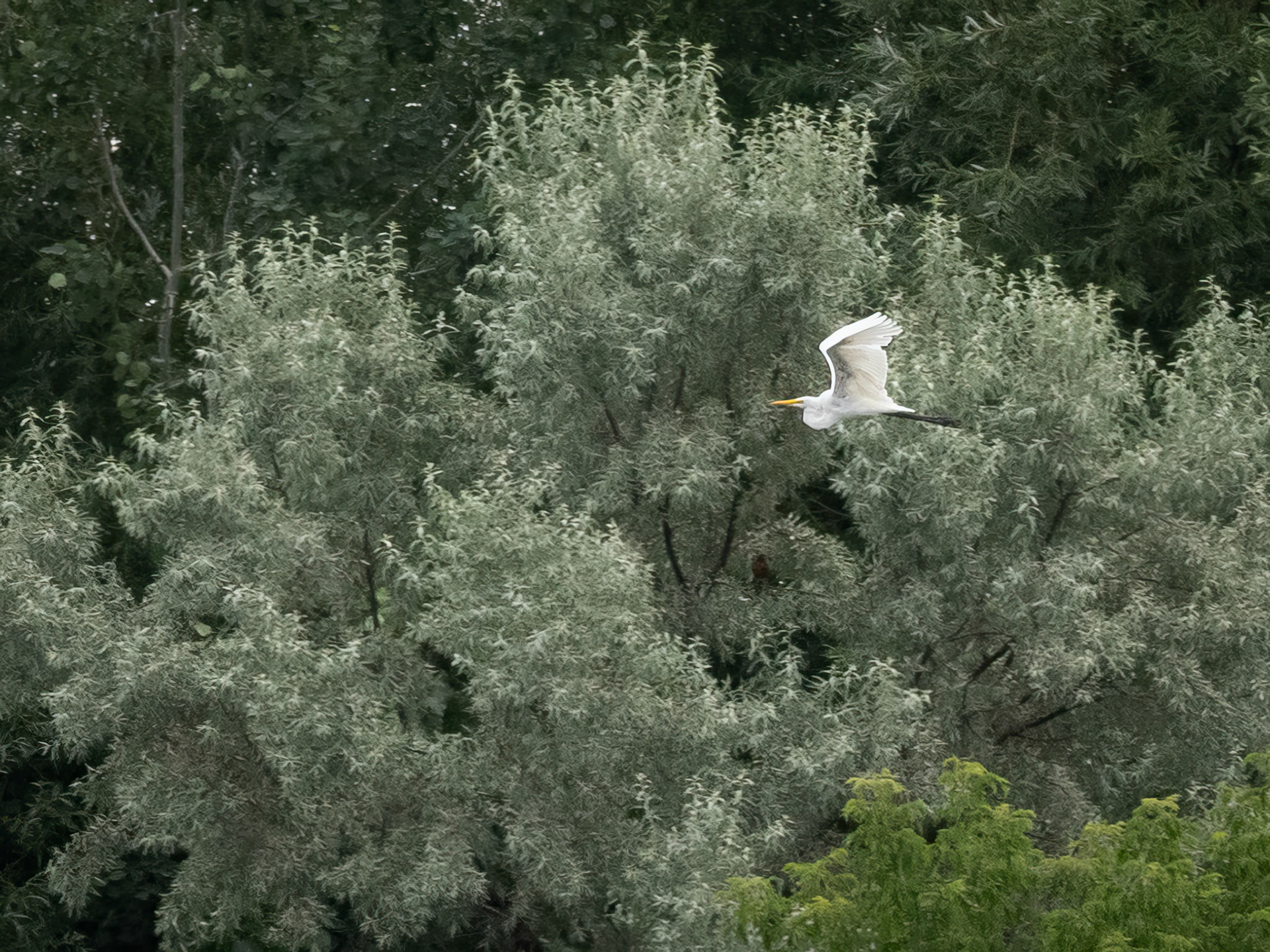
Queen Anne's Lace lined the pathway in most places, aided and abetted by black-eyed susans.
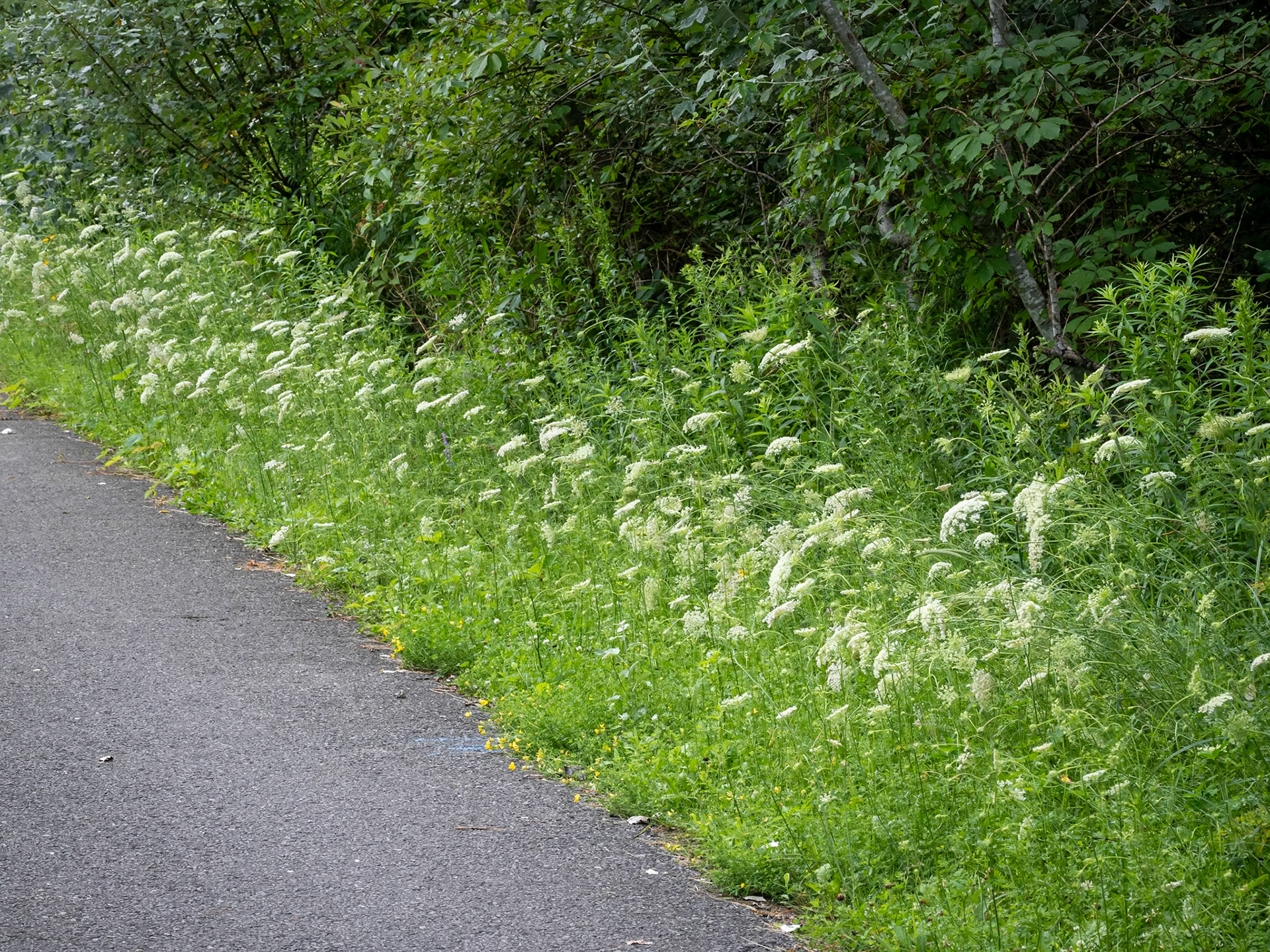
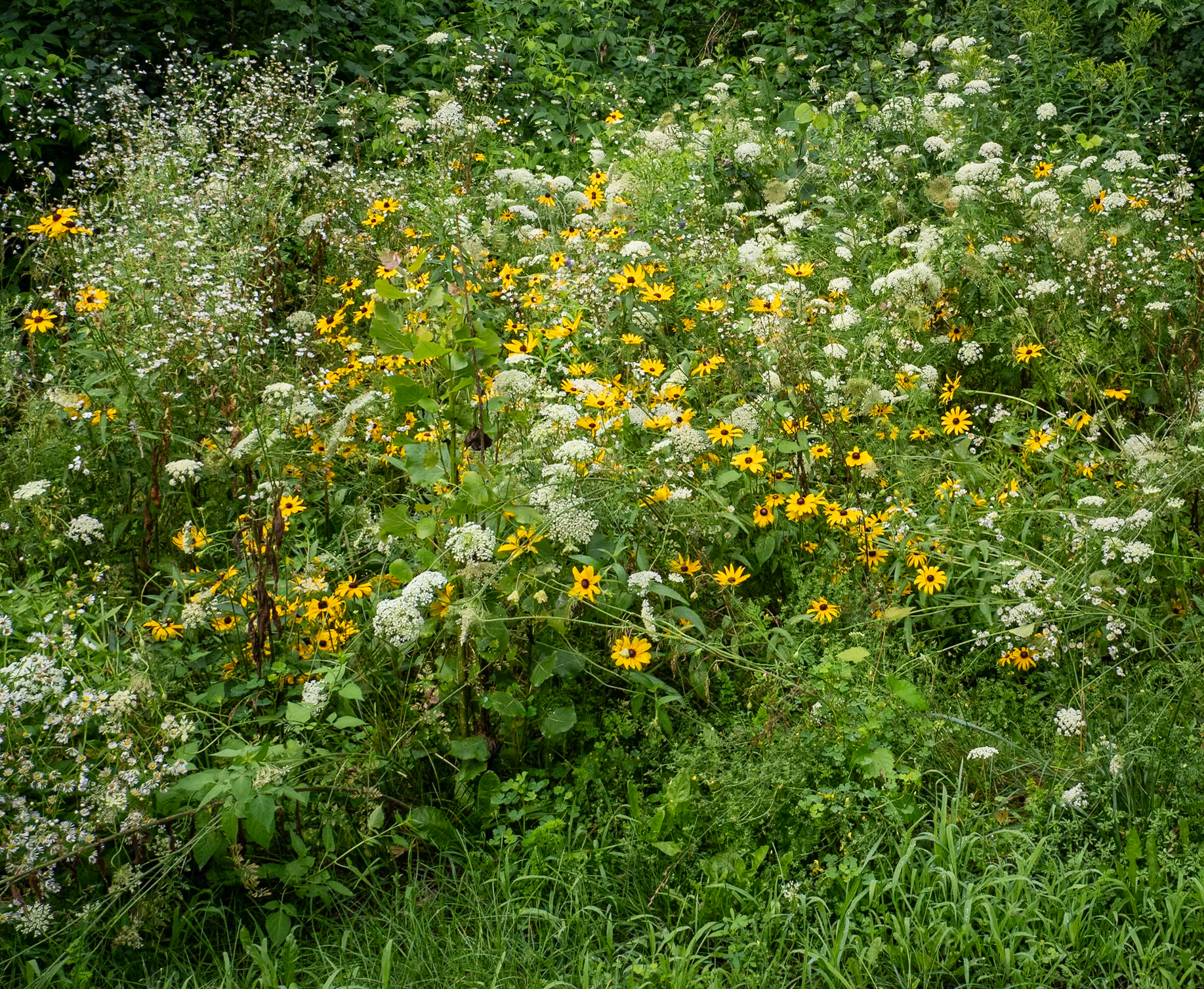
A few samples of plants in bloom. (Scroll over for ID)
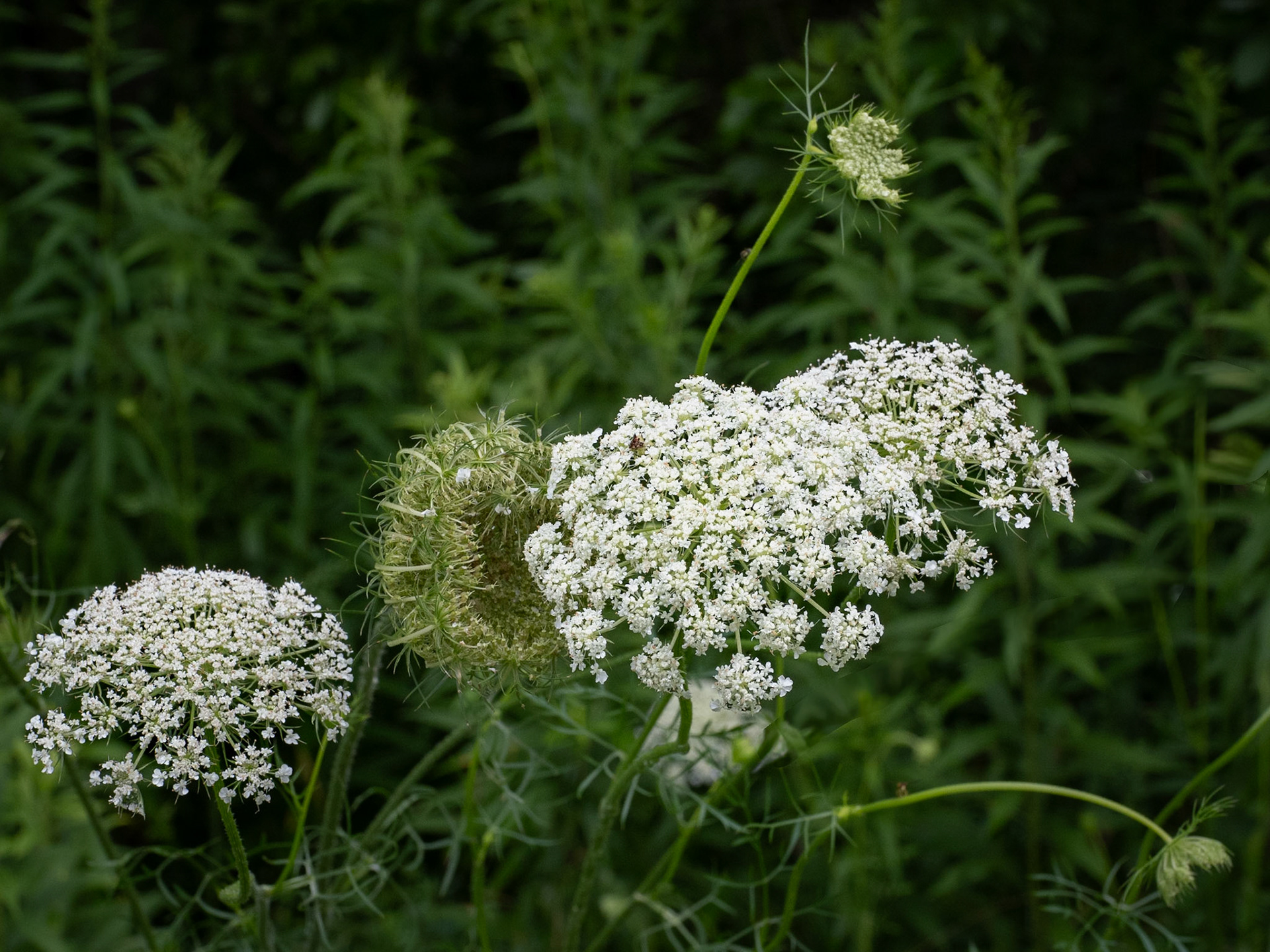
Queen Anne's Lace, opening bud to finishing blossom
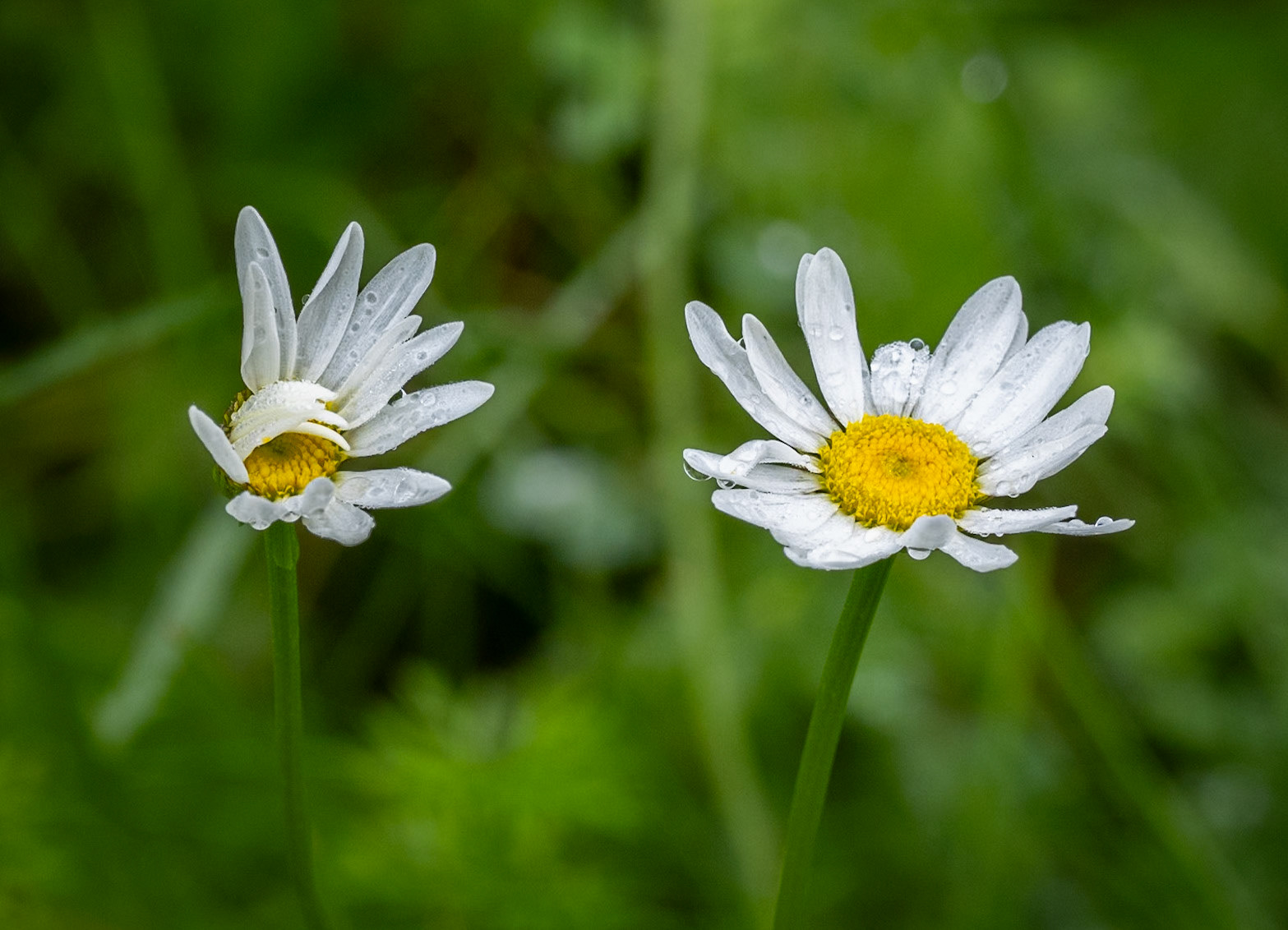
daisy
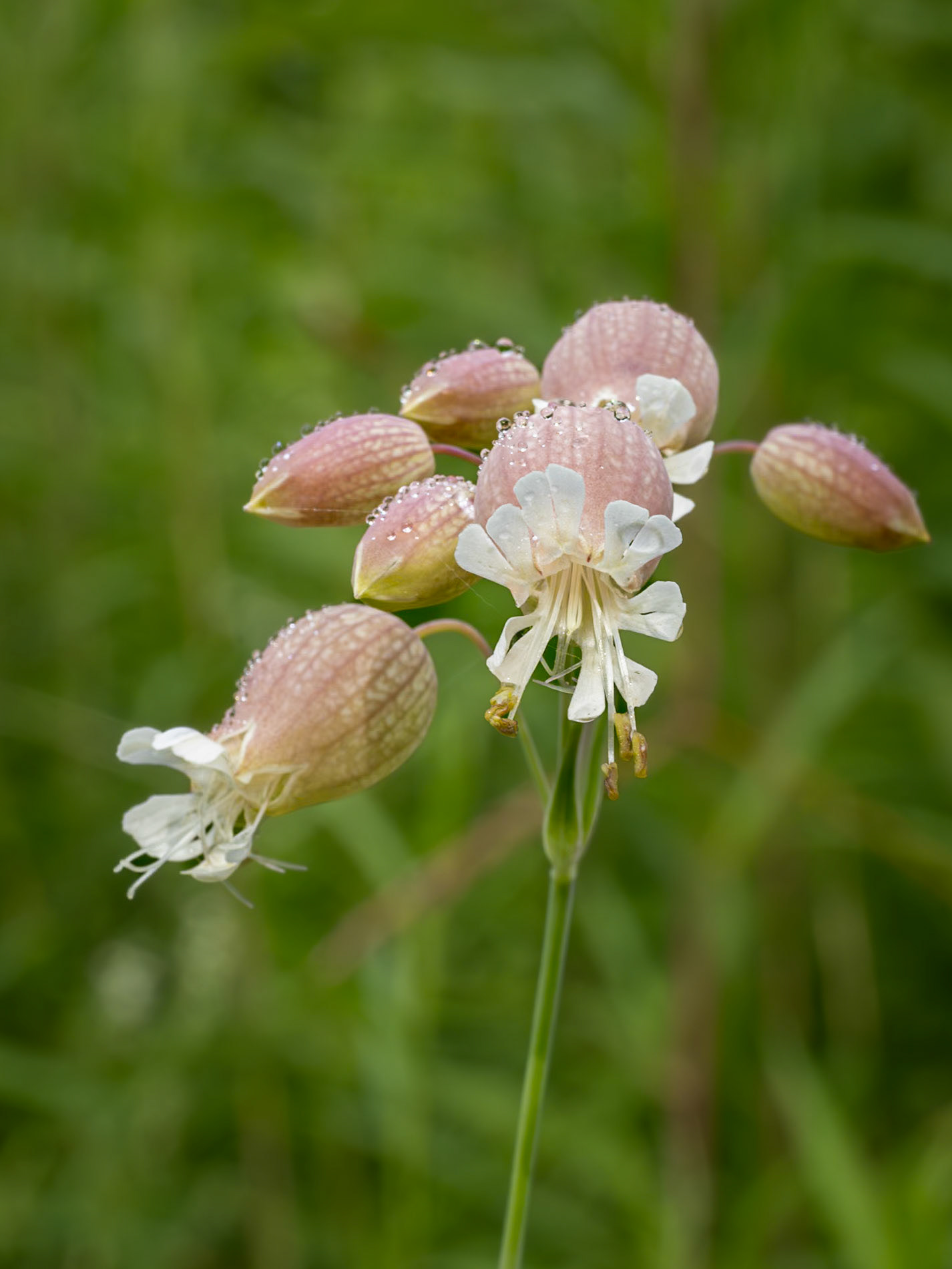
baldder campion
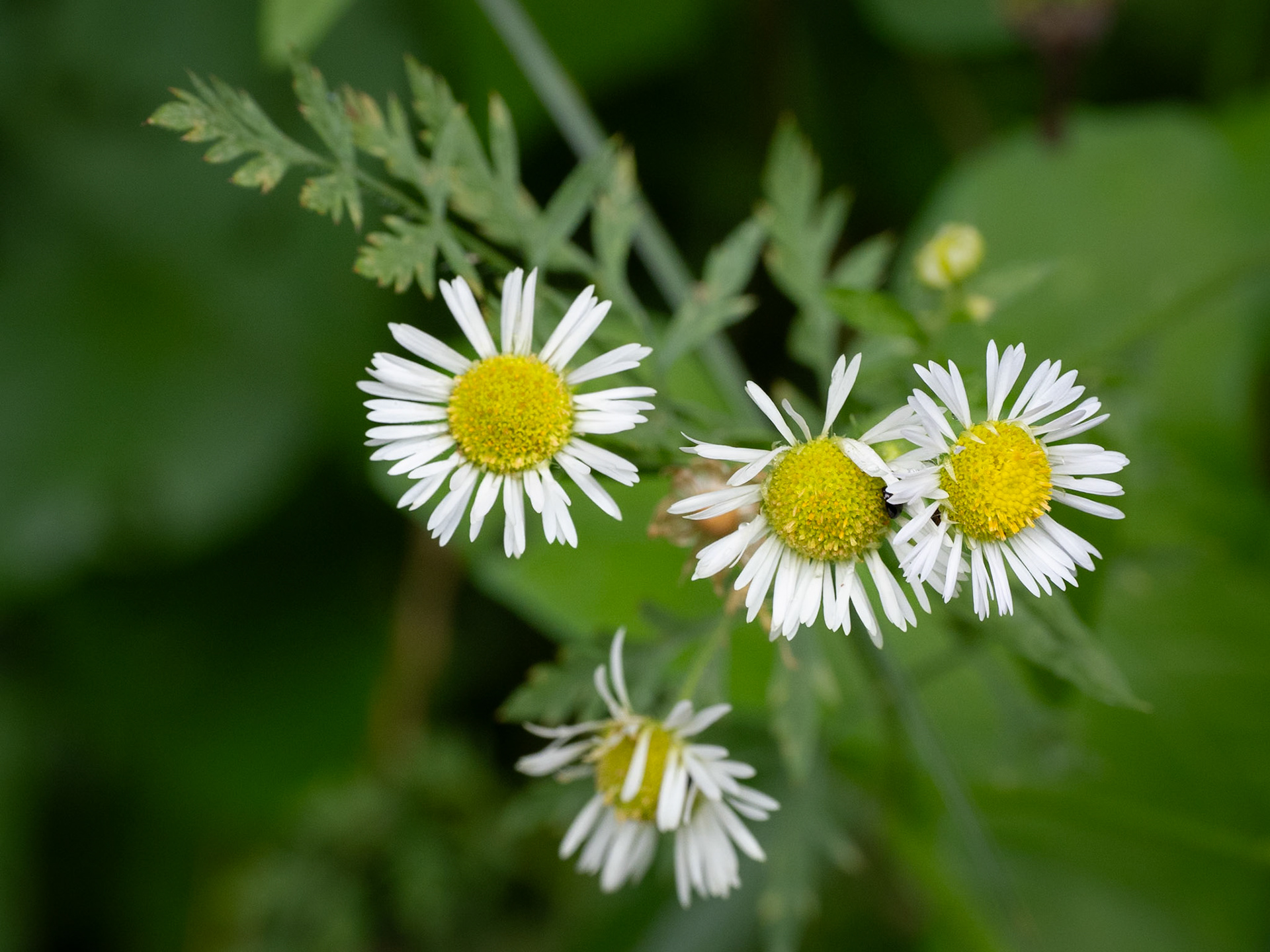
fleabane
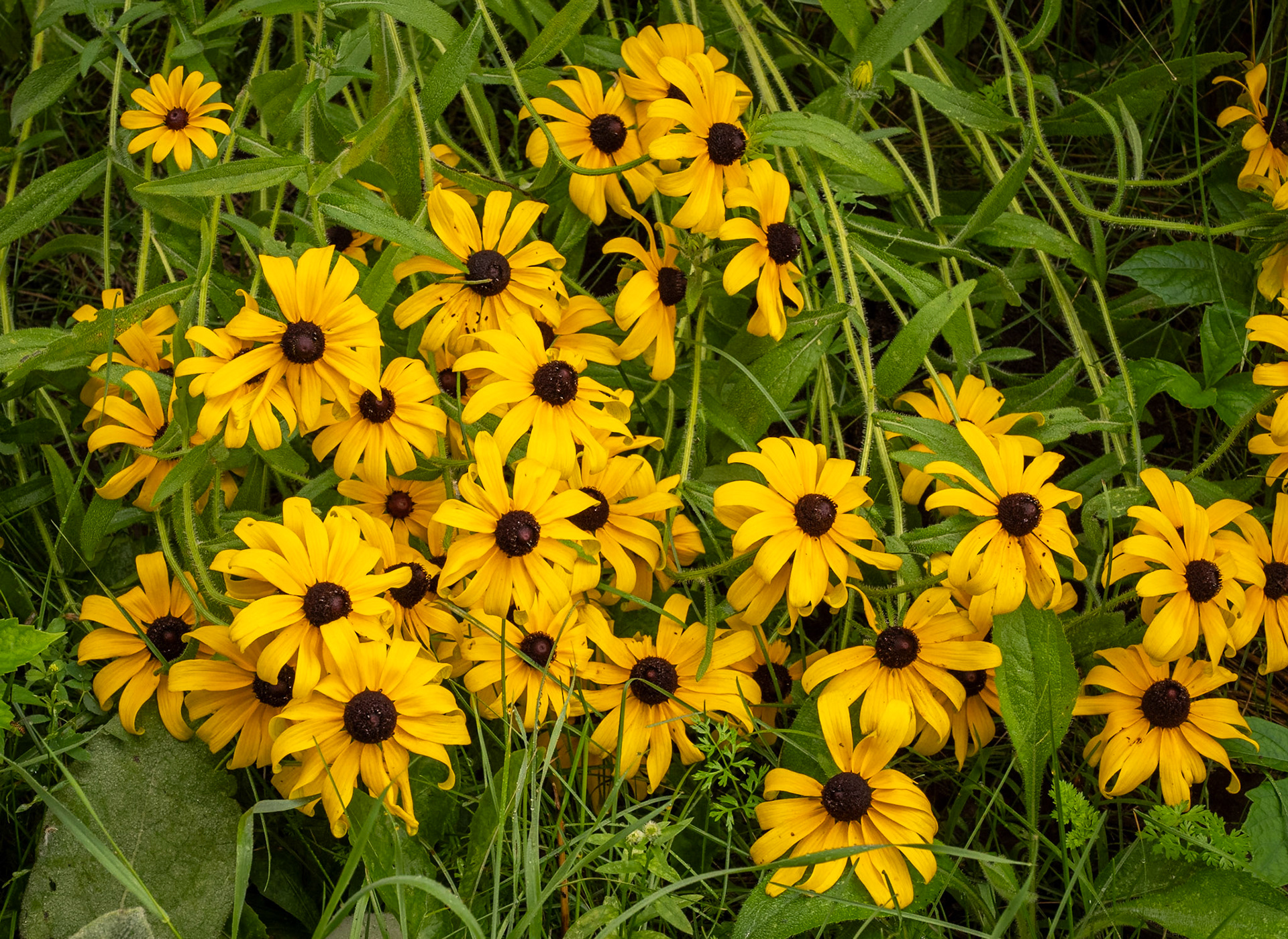
black-eyed susans
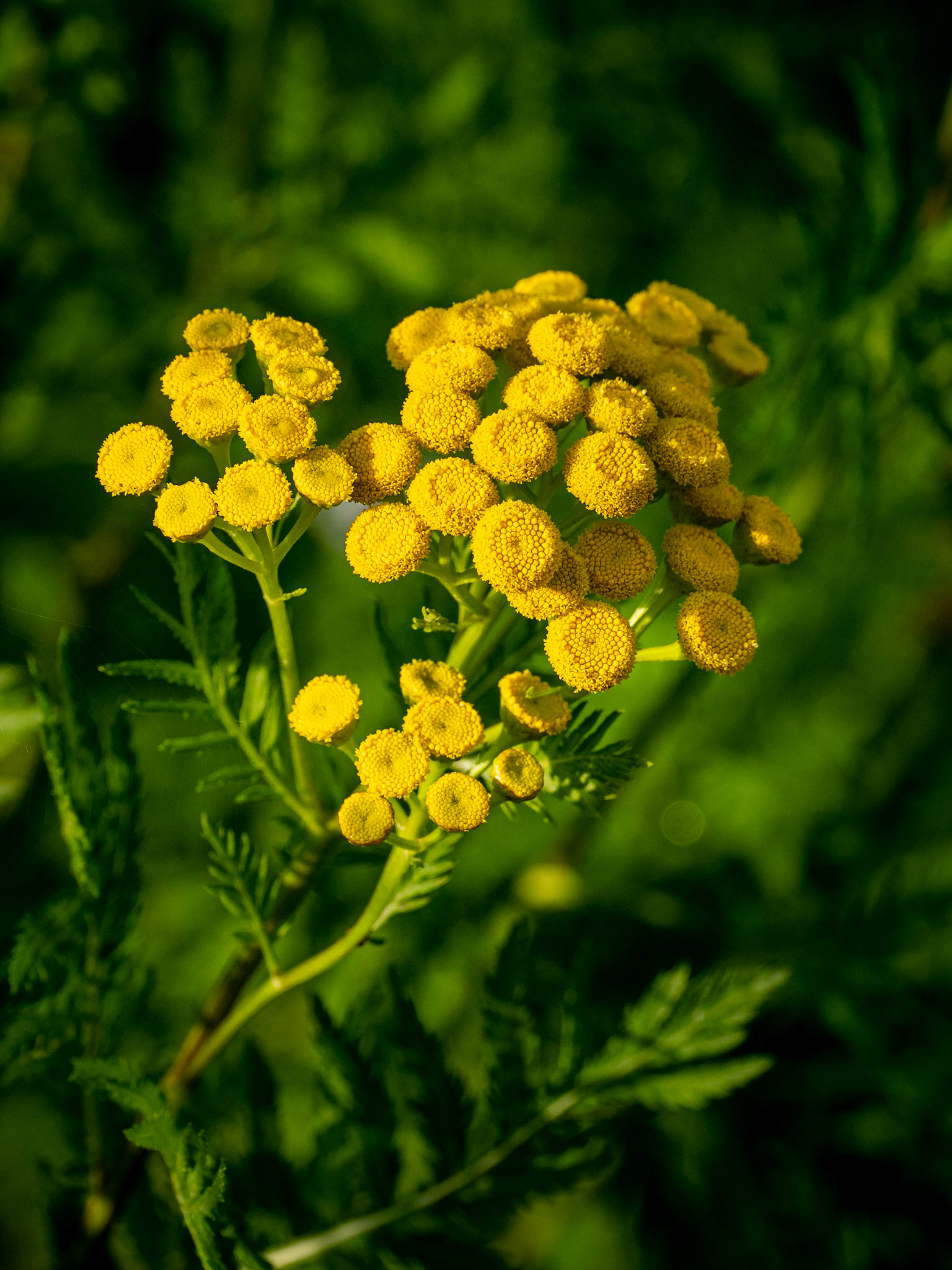
tansy
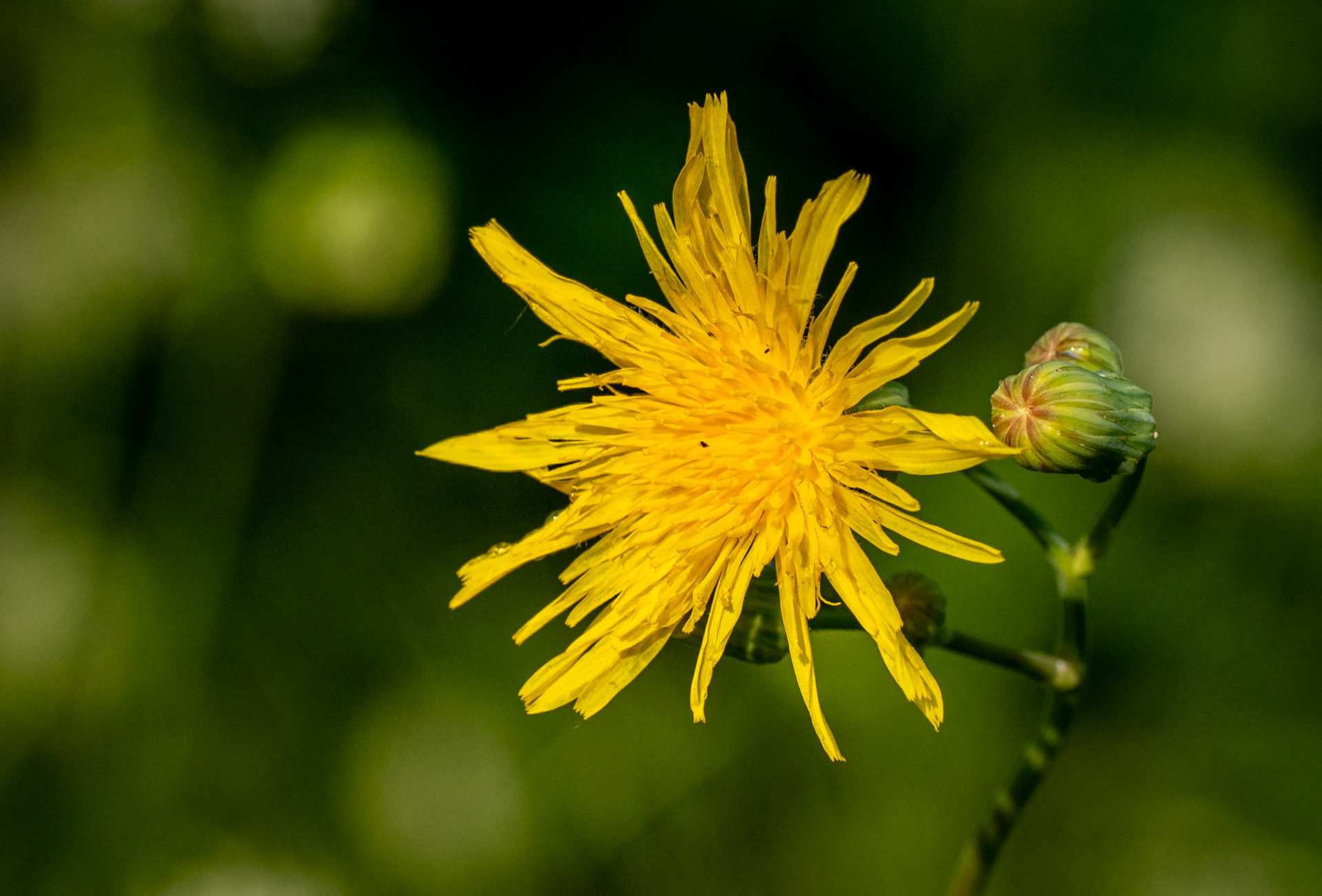
sowthistle
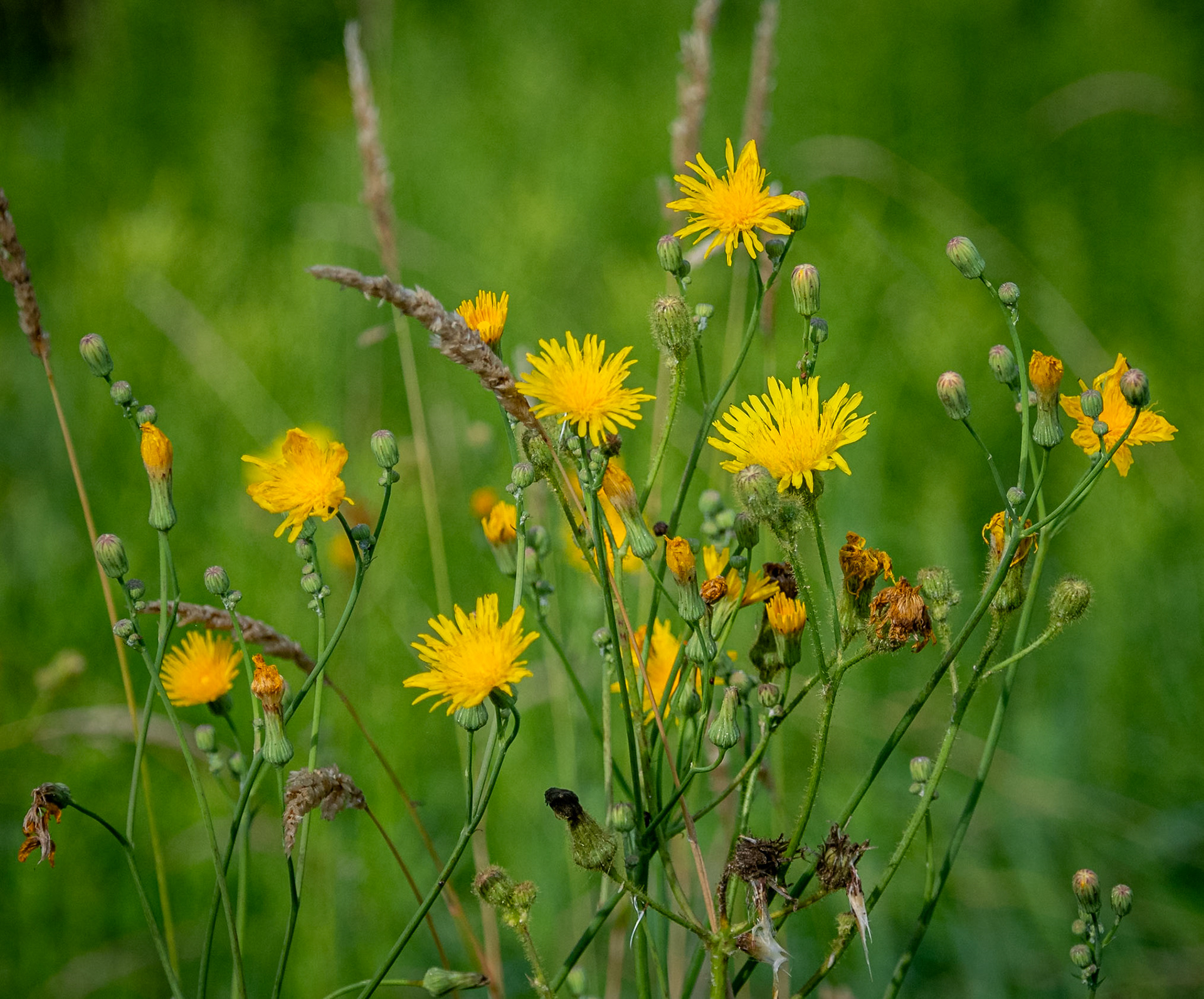
sowthistle clump
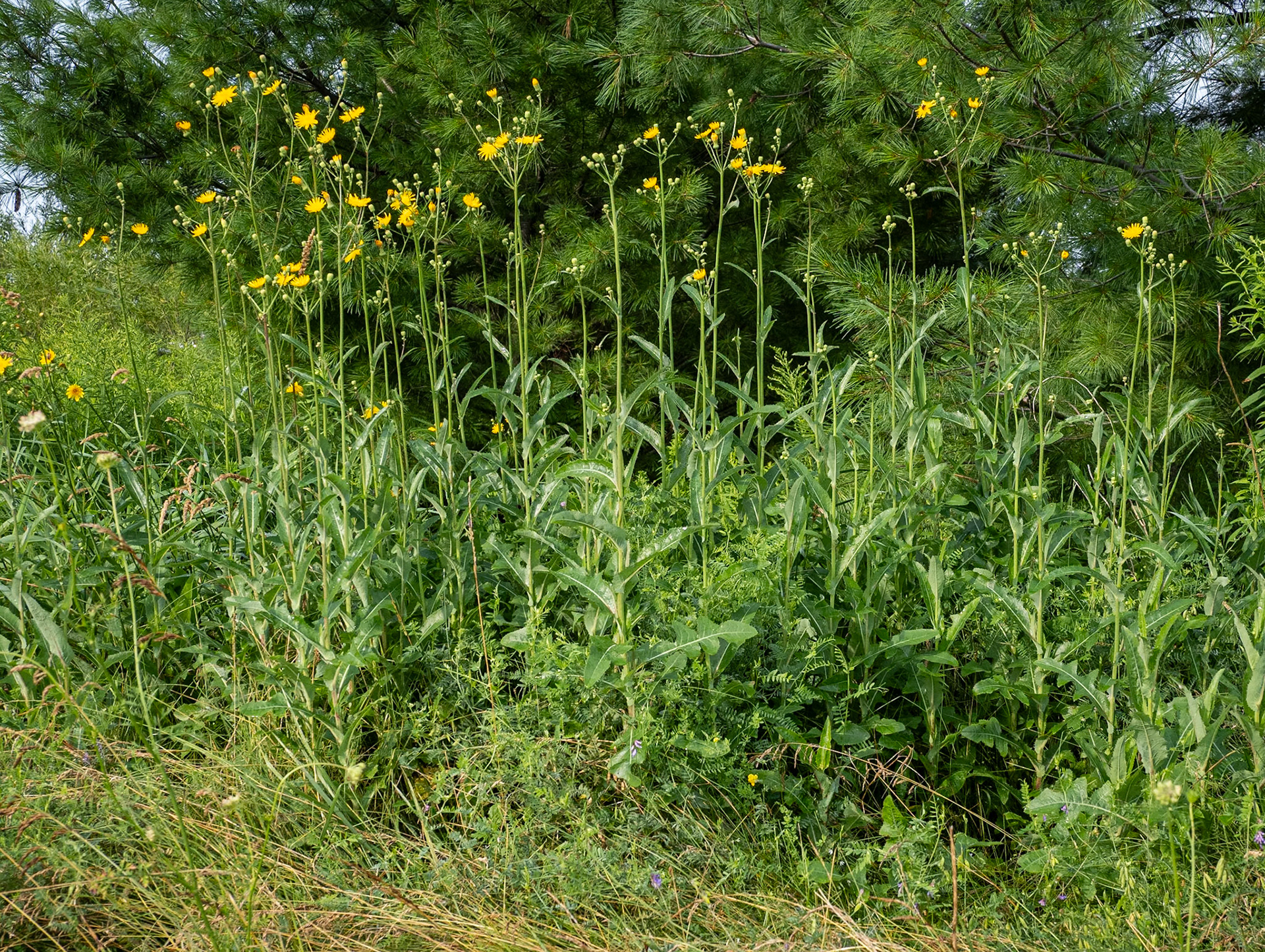
sowthistle clump growing tall
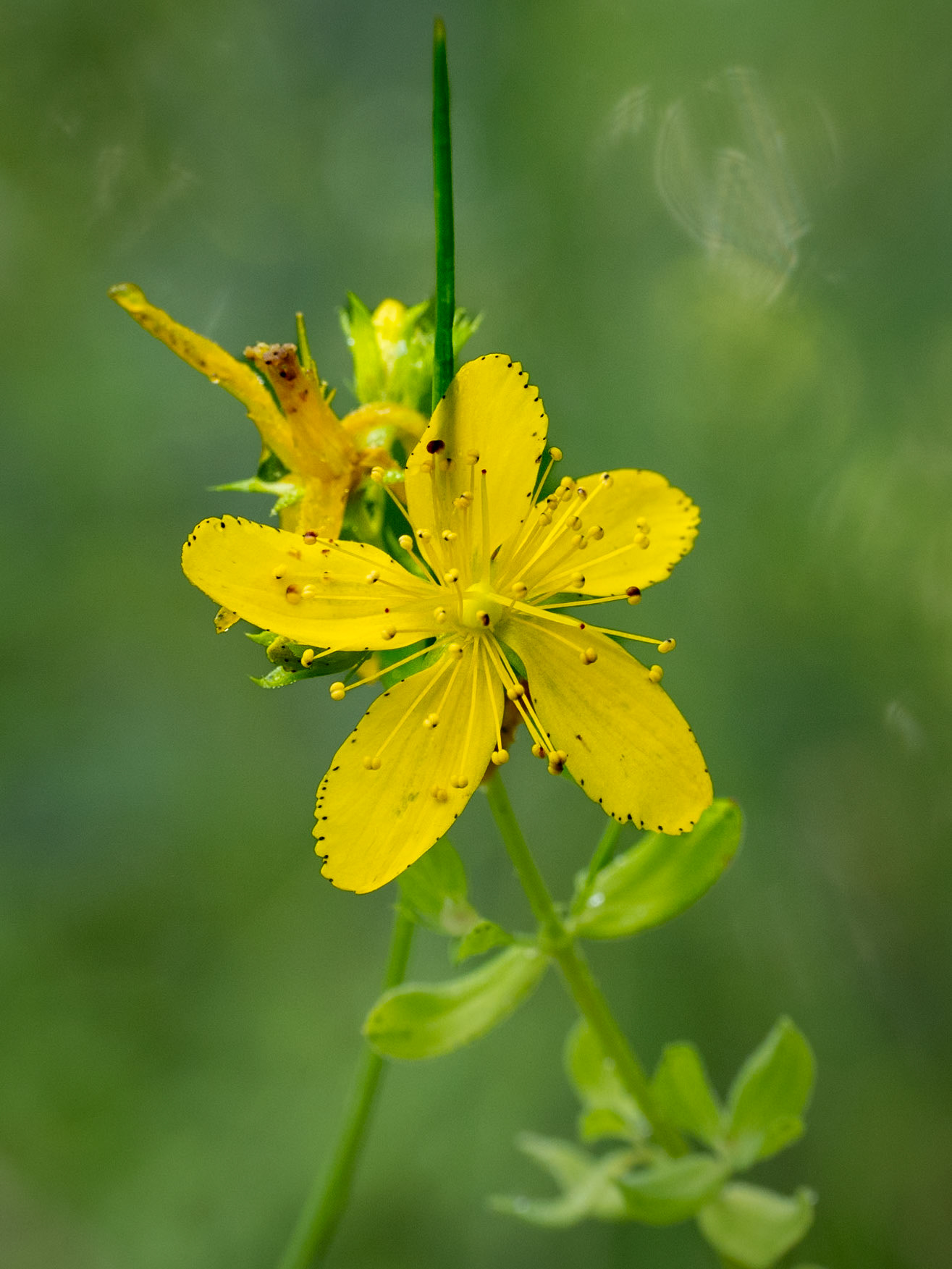
St John's wort
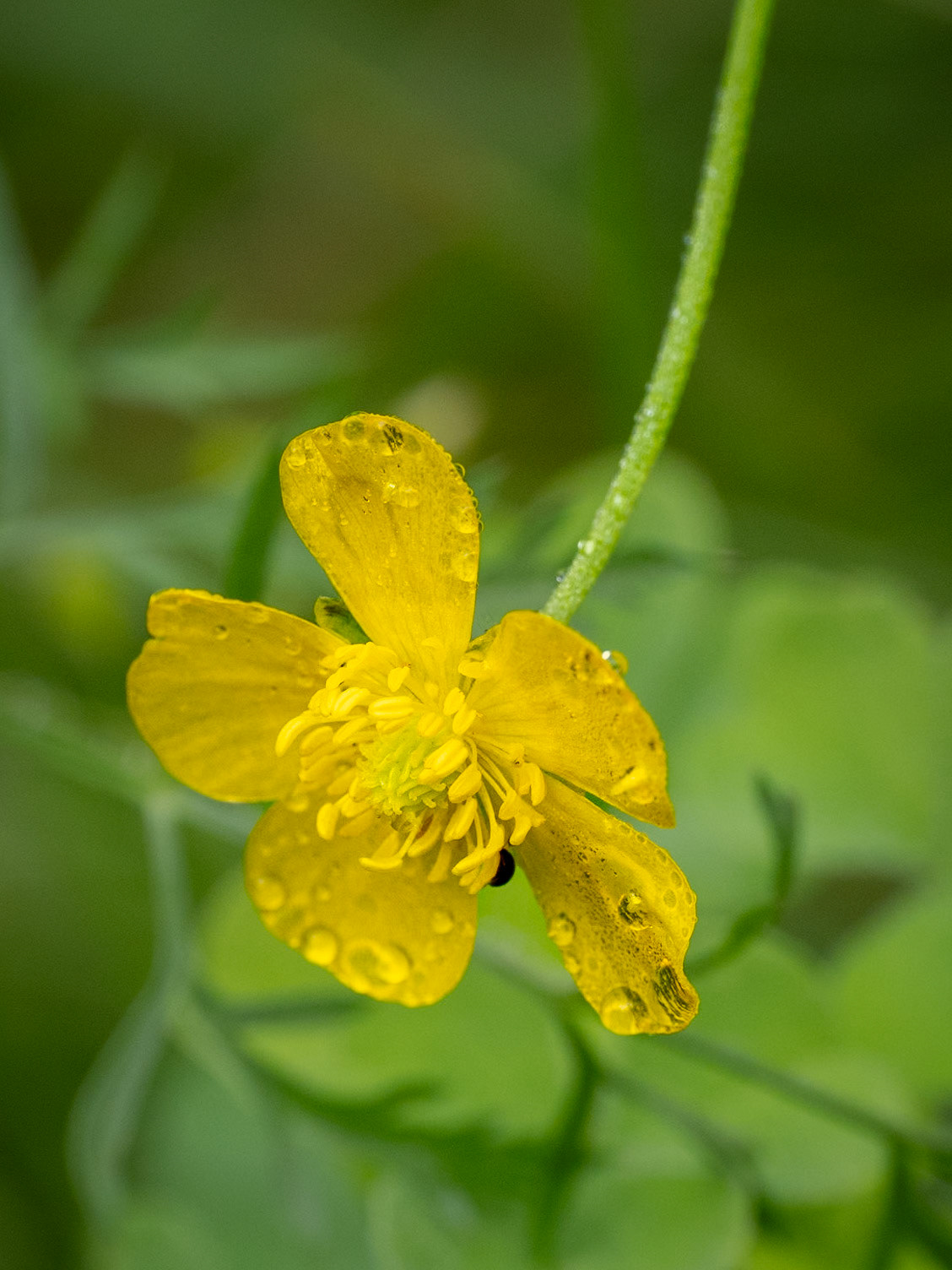
meadow buttercup
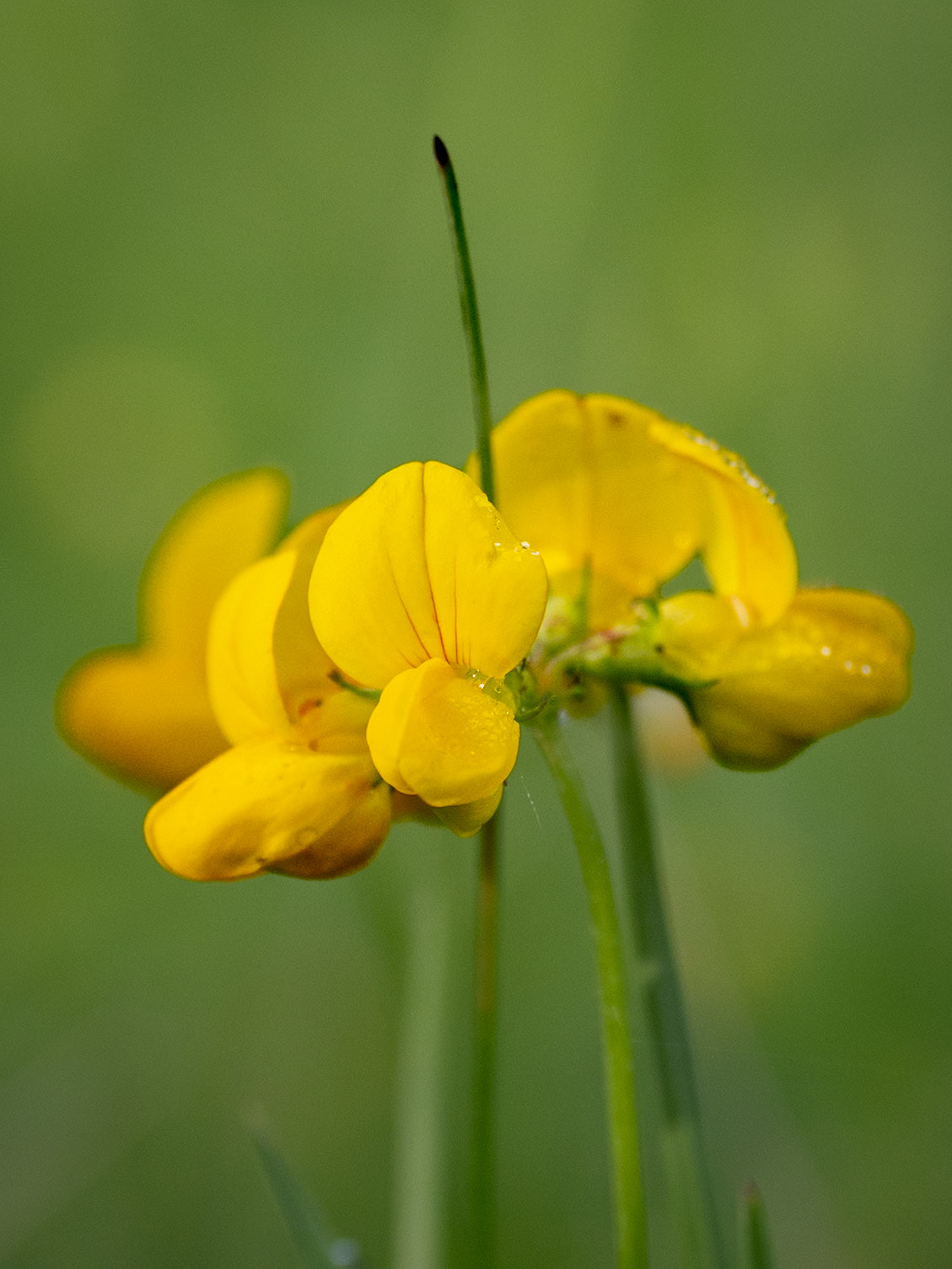
bird's foot trefoil
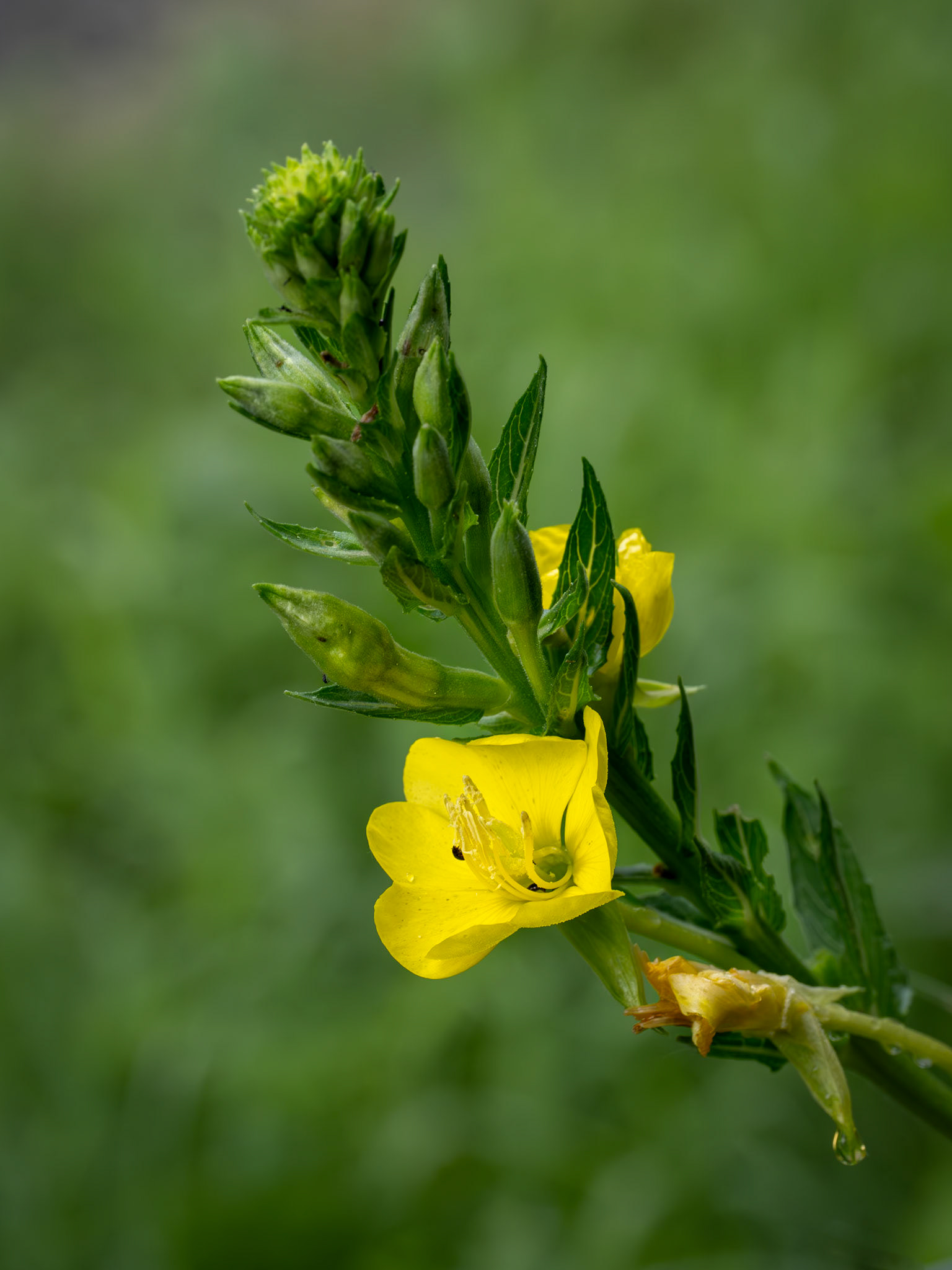
evening primrose
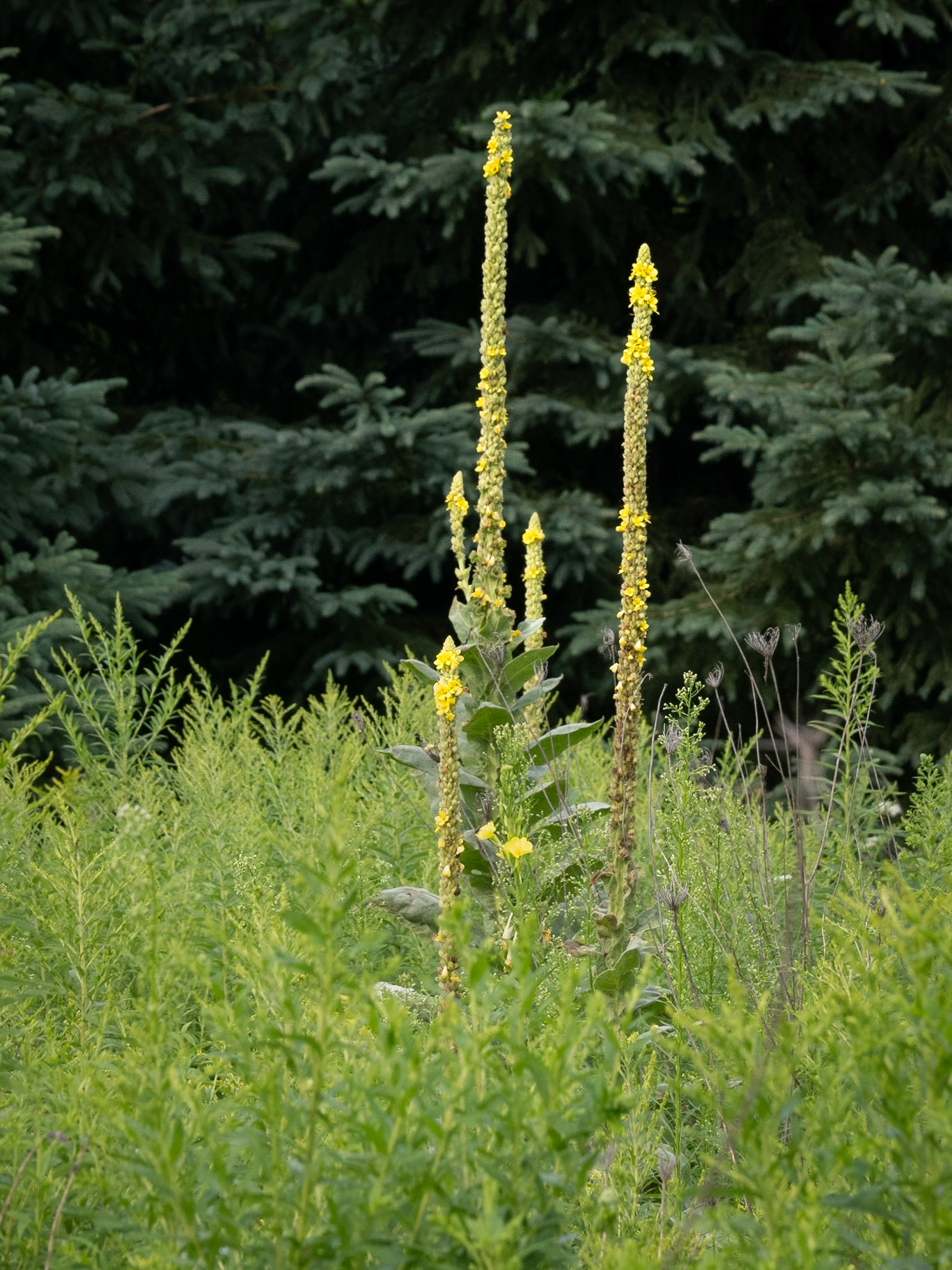
mullein
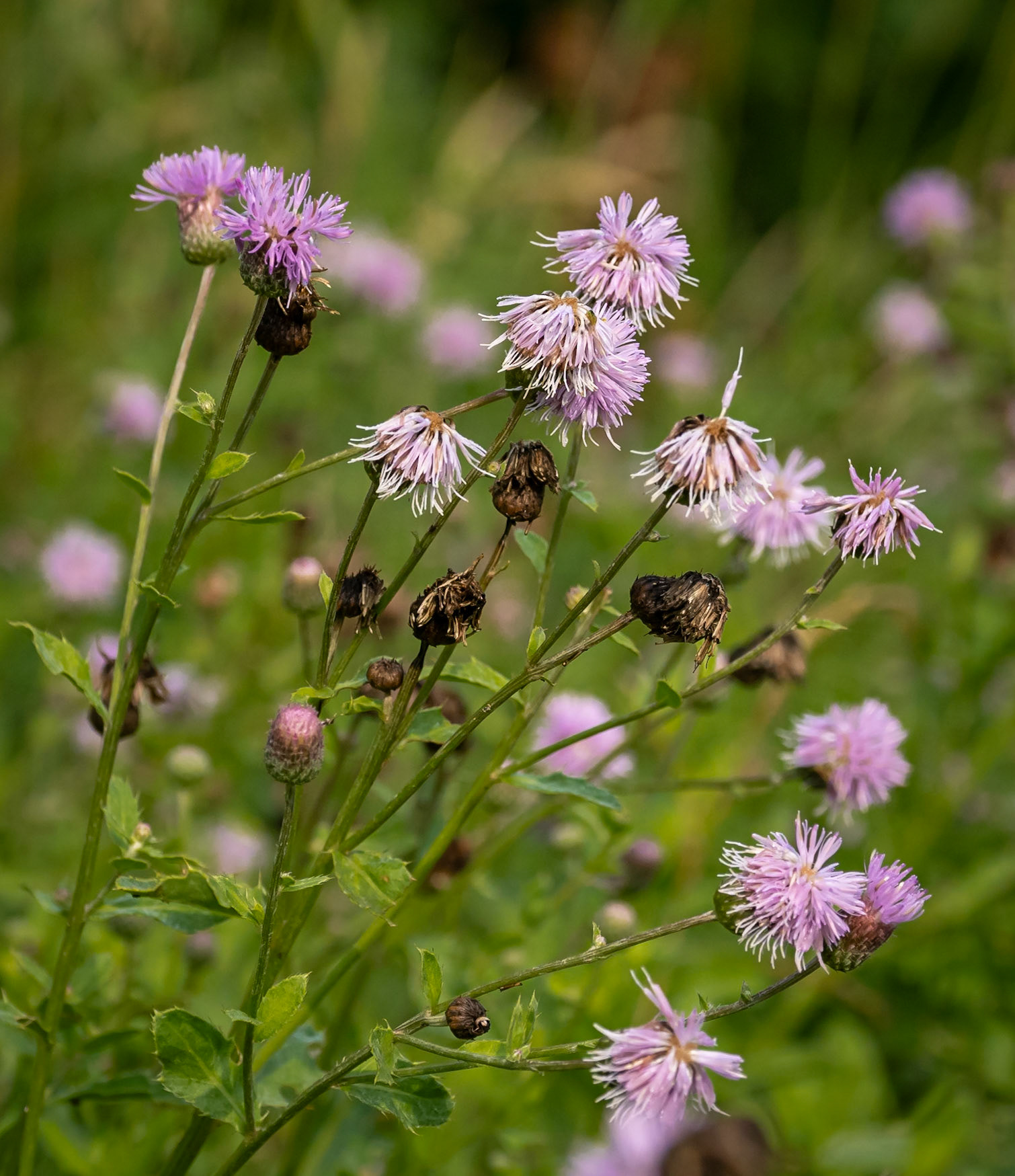
Canada thistle
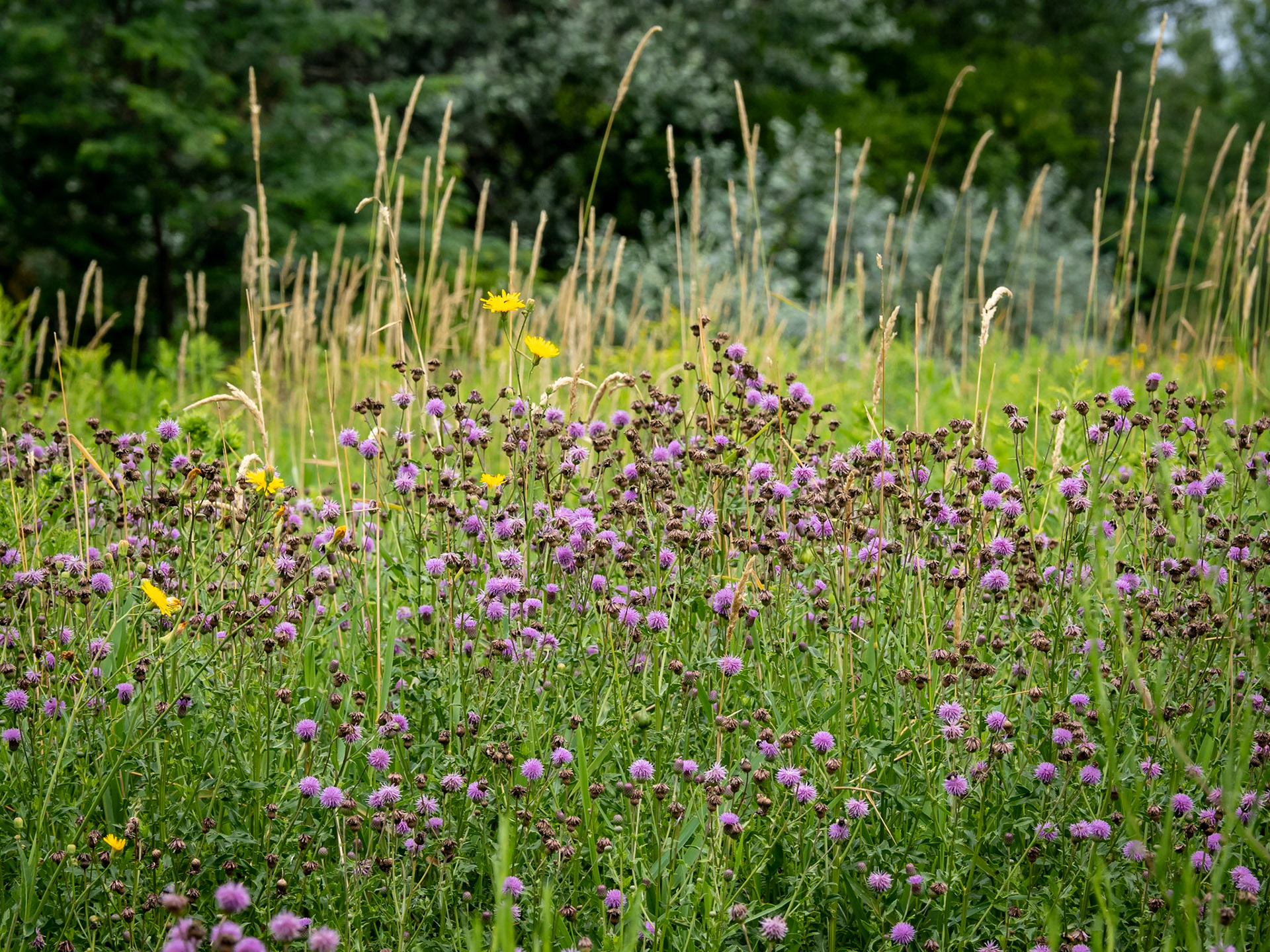
Canada thistle clump
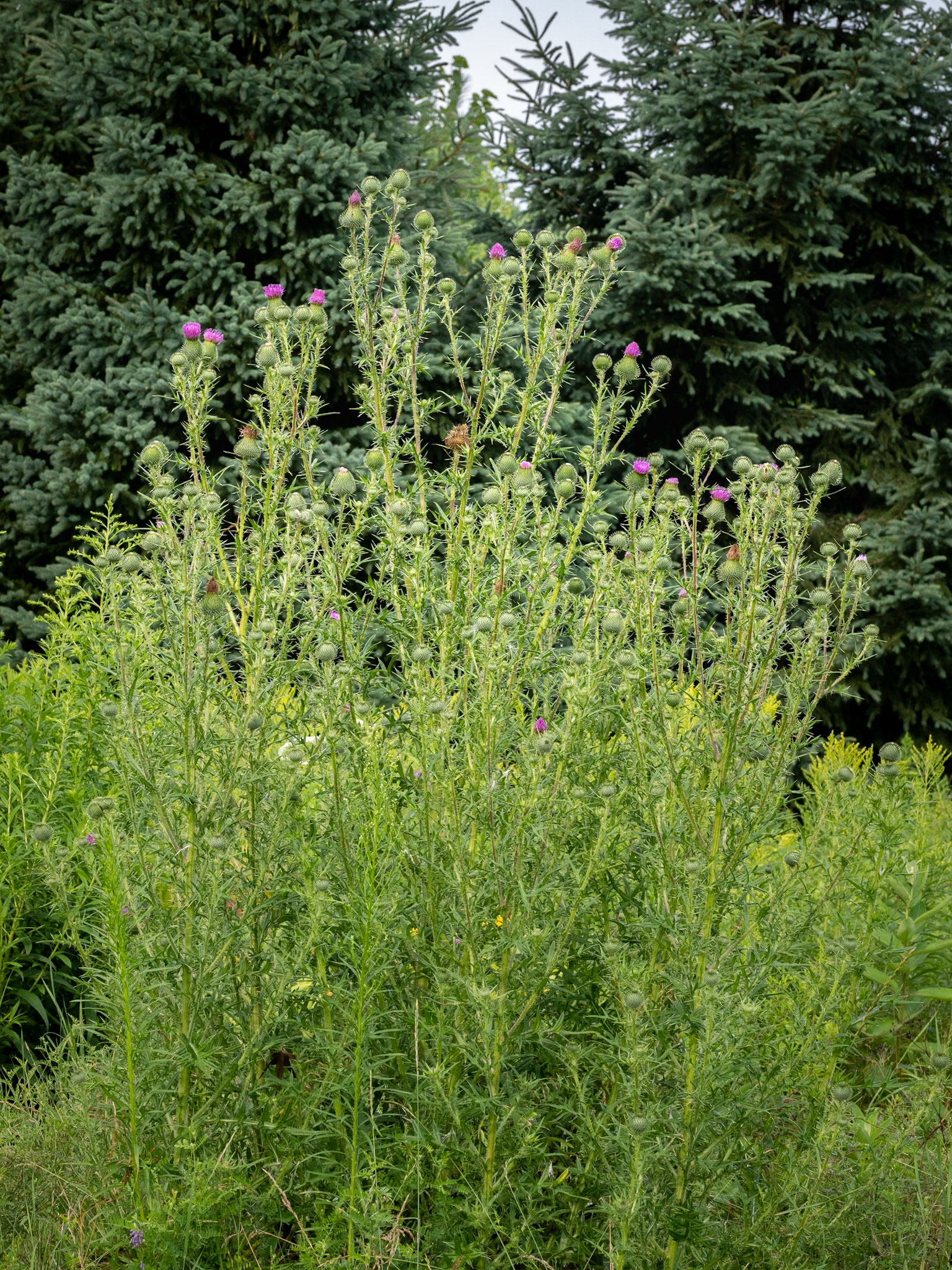
bull thistle stand
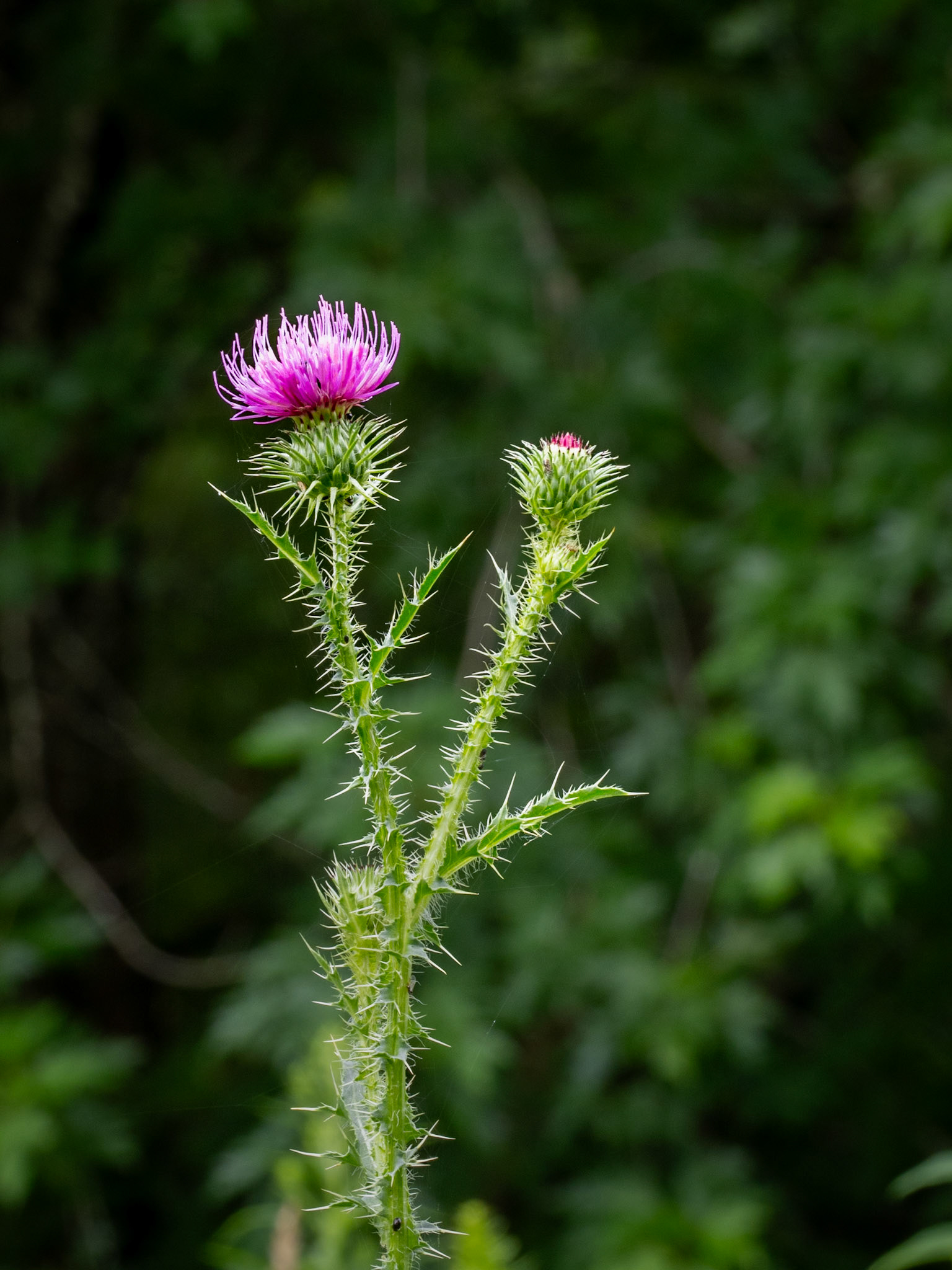
bull thistle
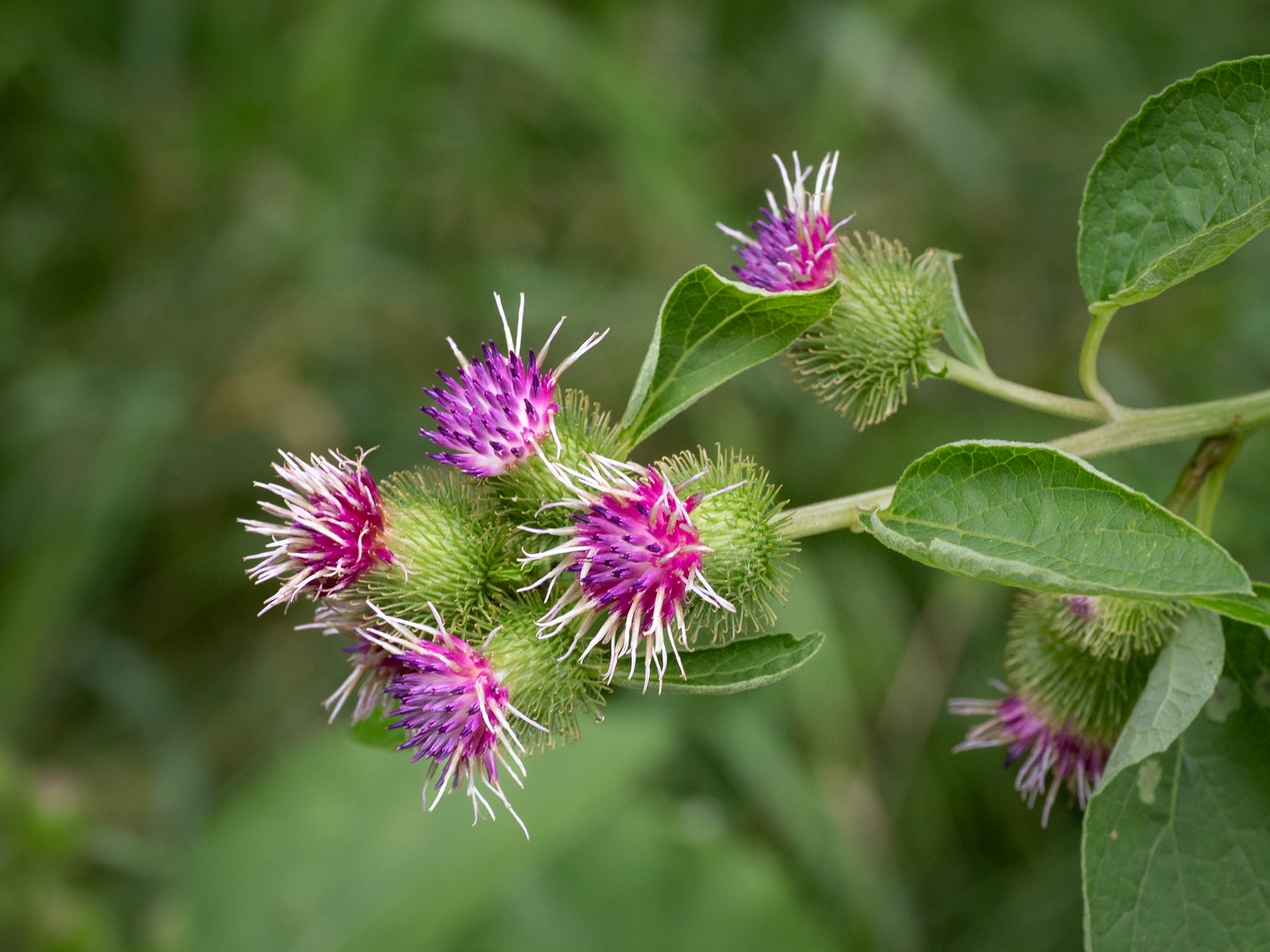
burdock
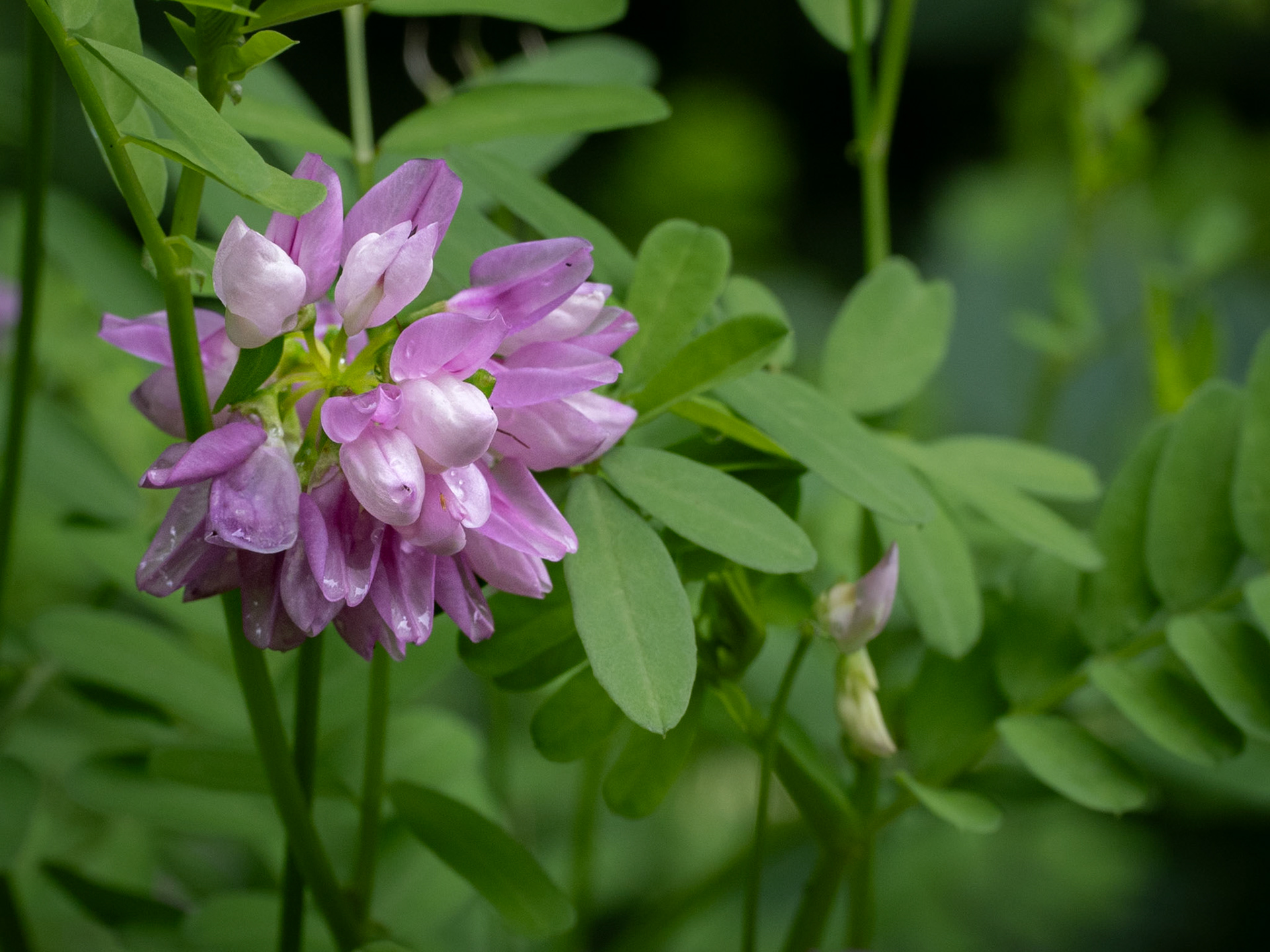
crown vetch
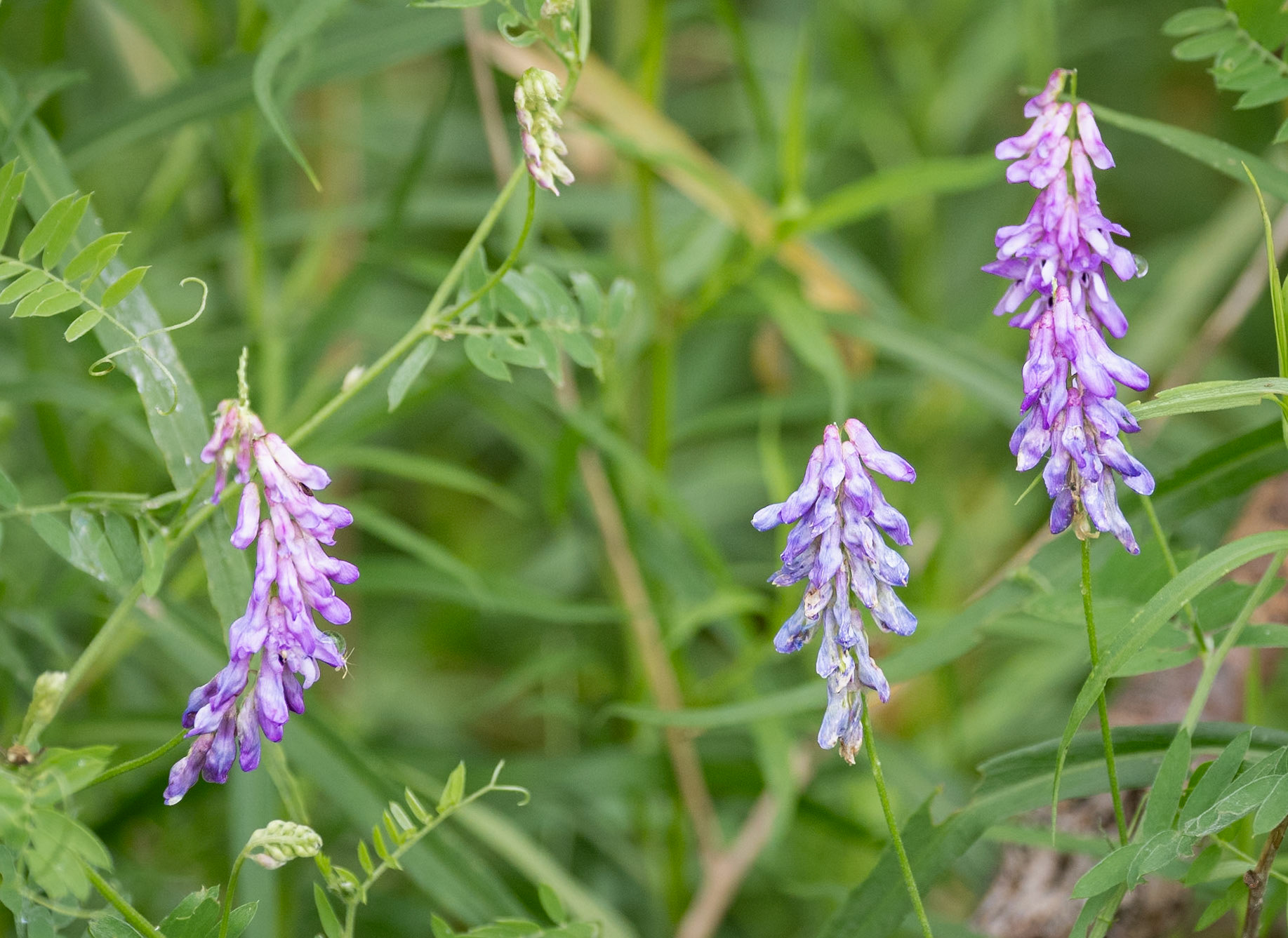
tufted vetch
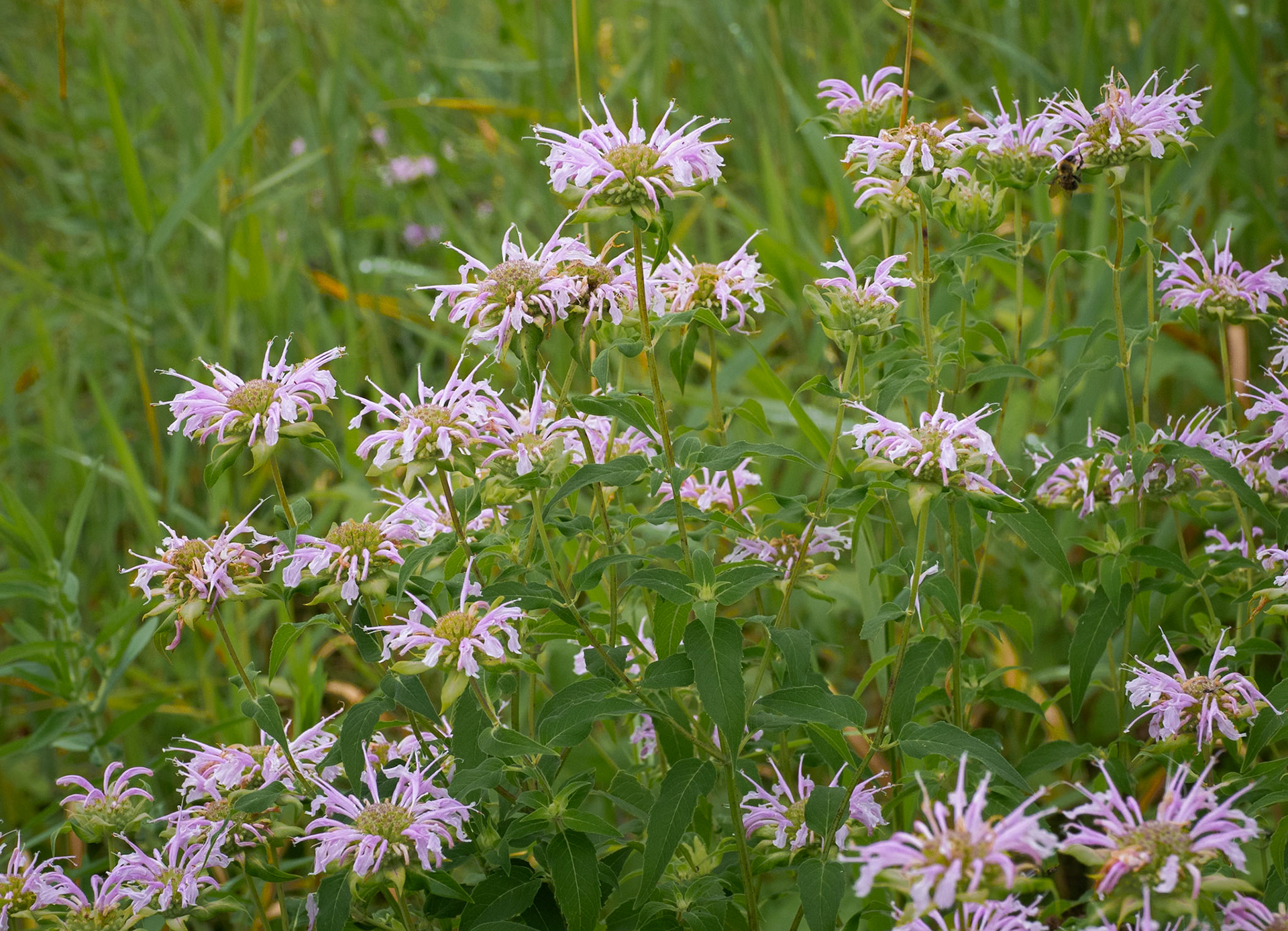
wild bergamot
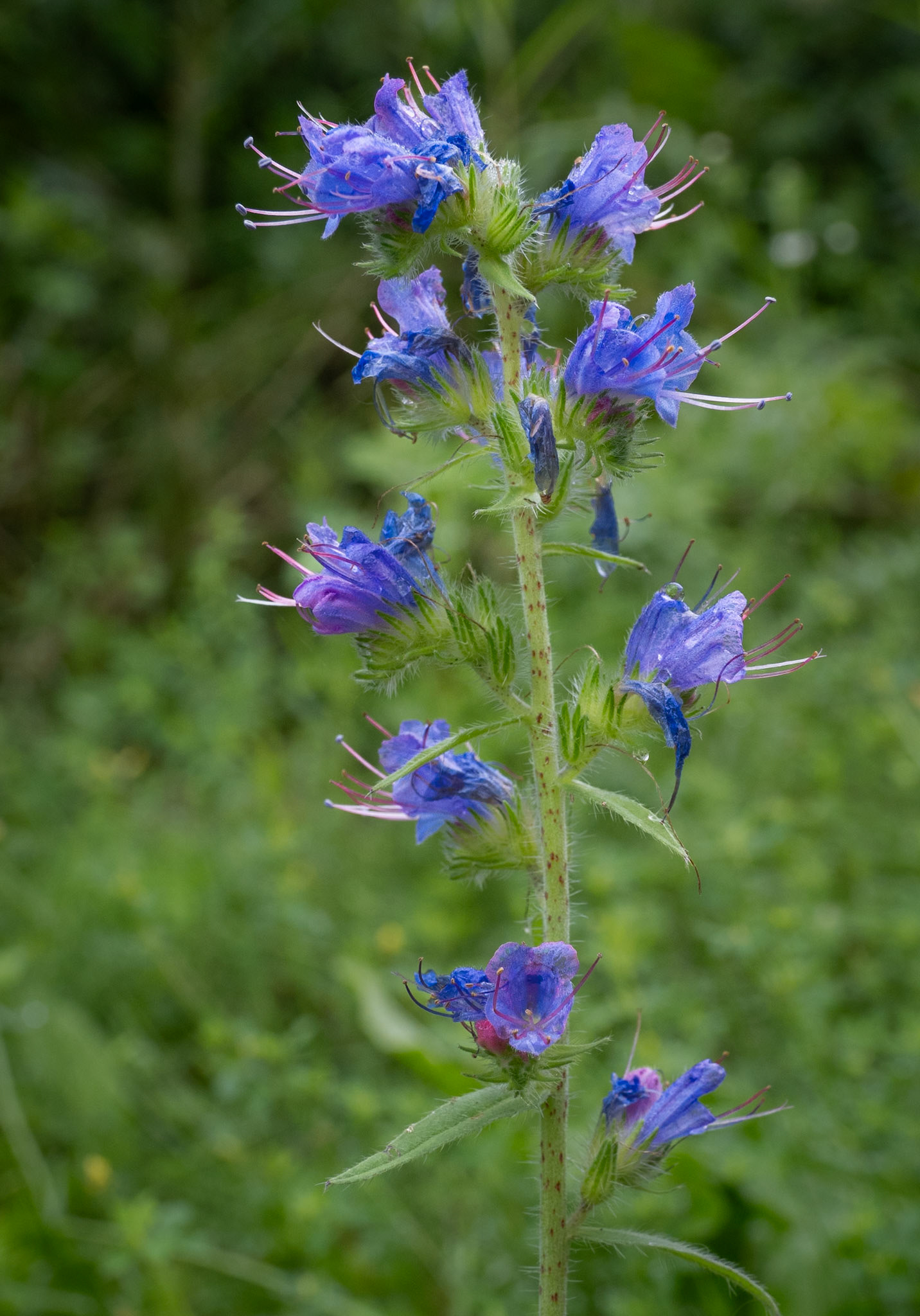
vipers bugloss
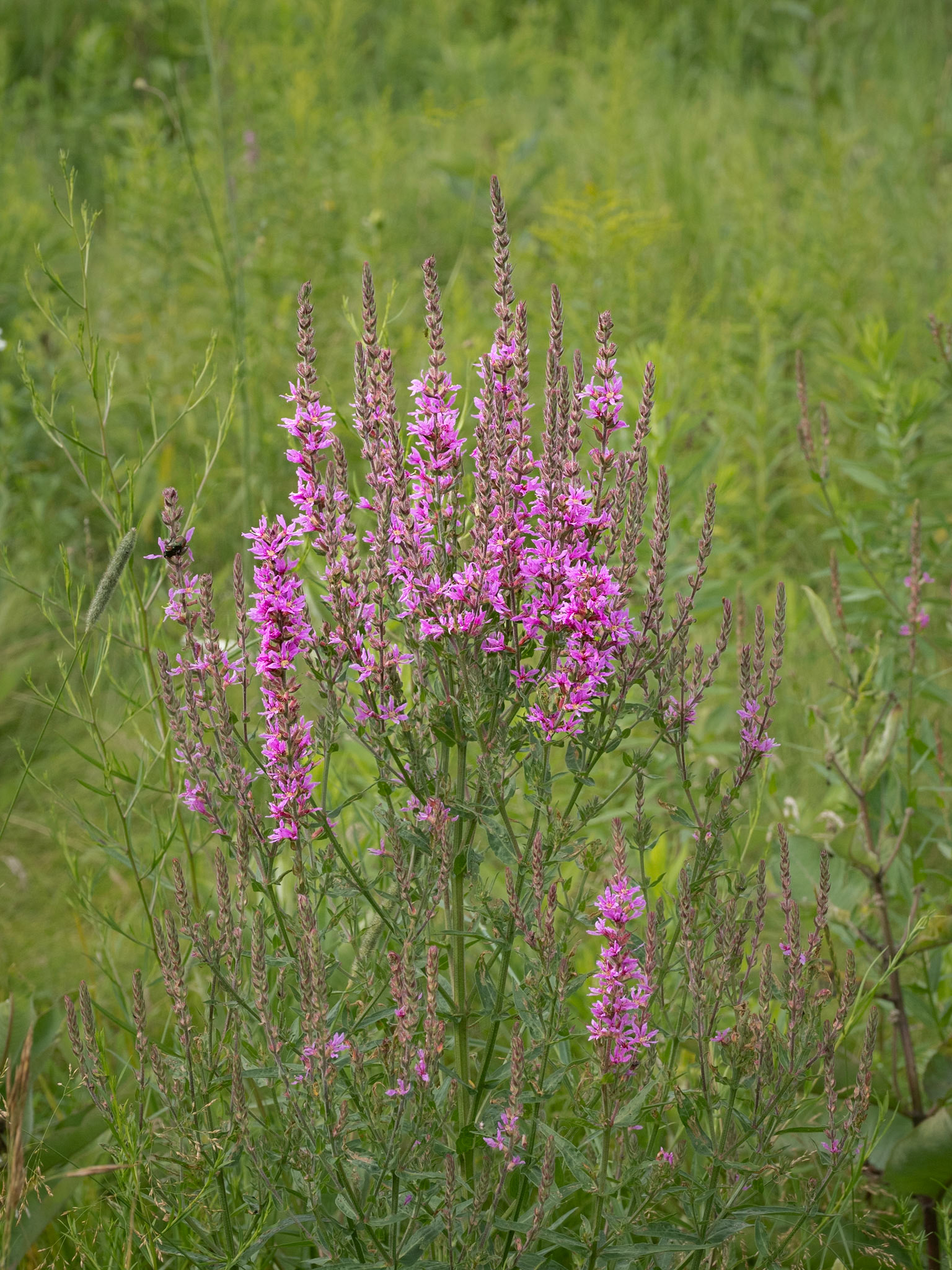
purple loosestrife
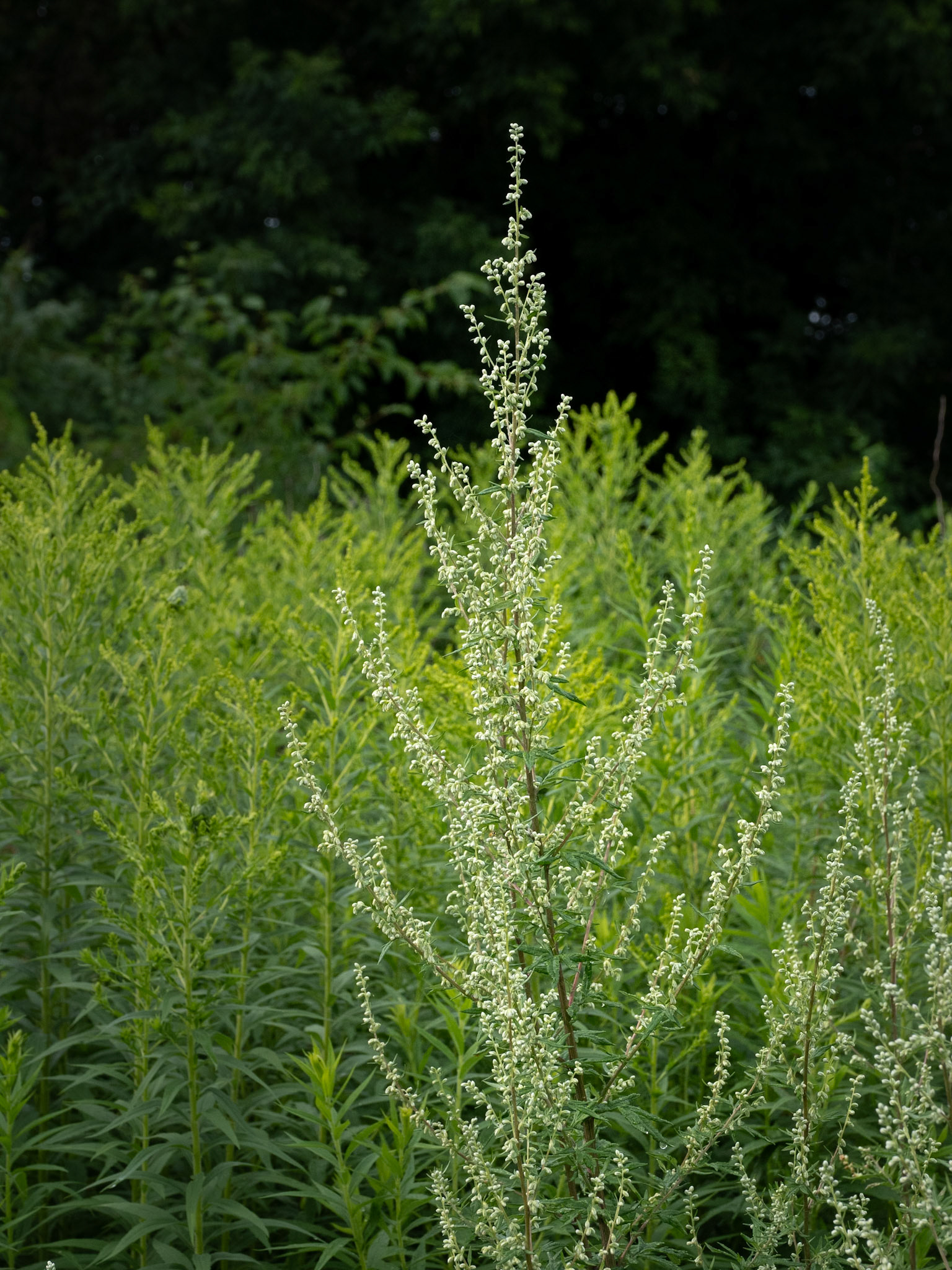
white sweet-clover
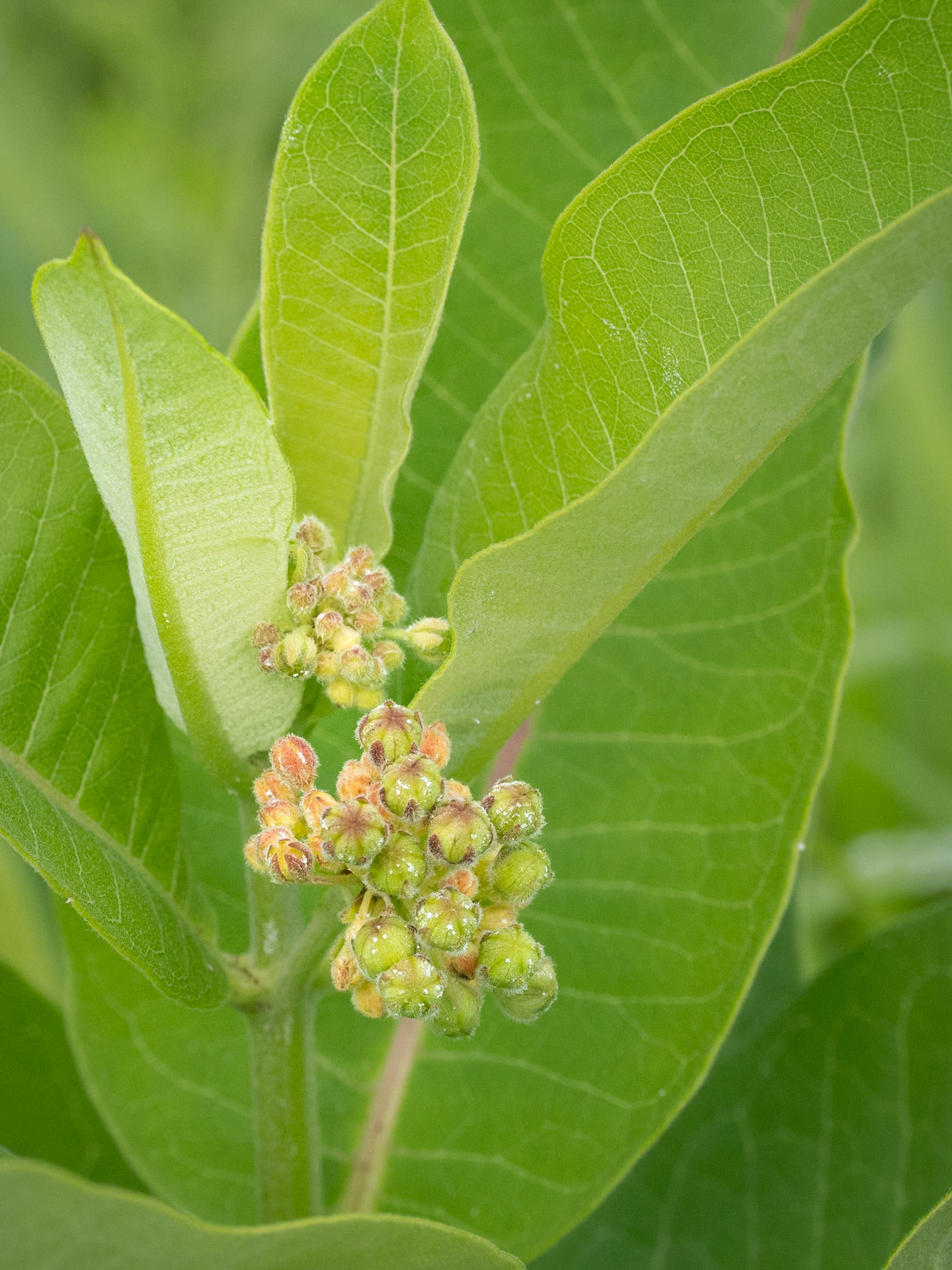
Milkweed (in bud)
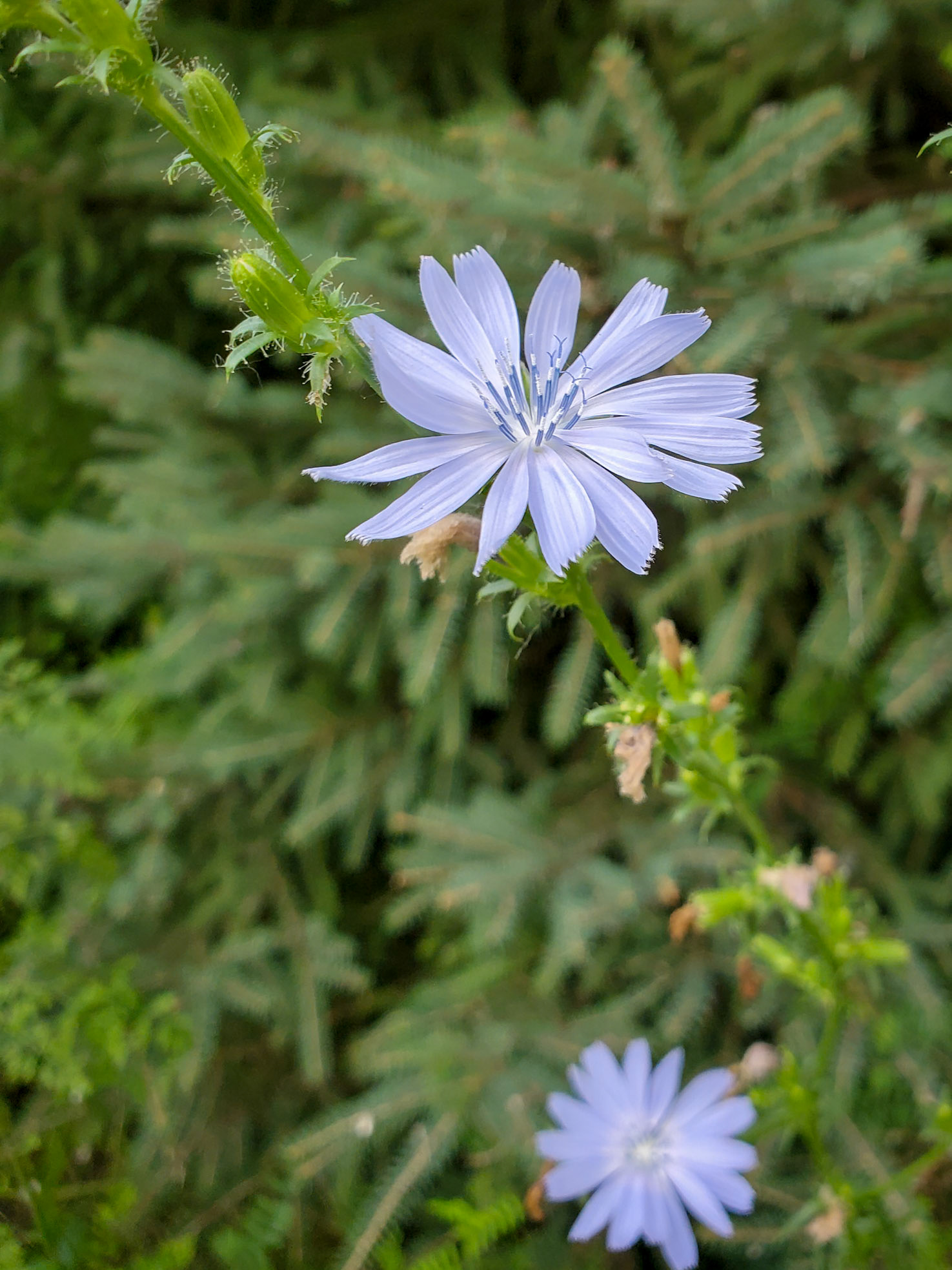
chicory
Two blossoms looked a bit different: a green infused black-eyed susan and a Queen Anne's lace whose individual blooms were more spaced
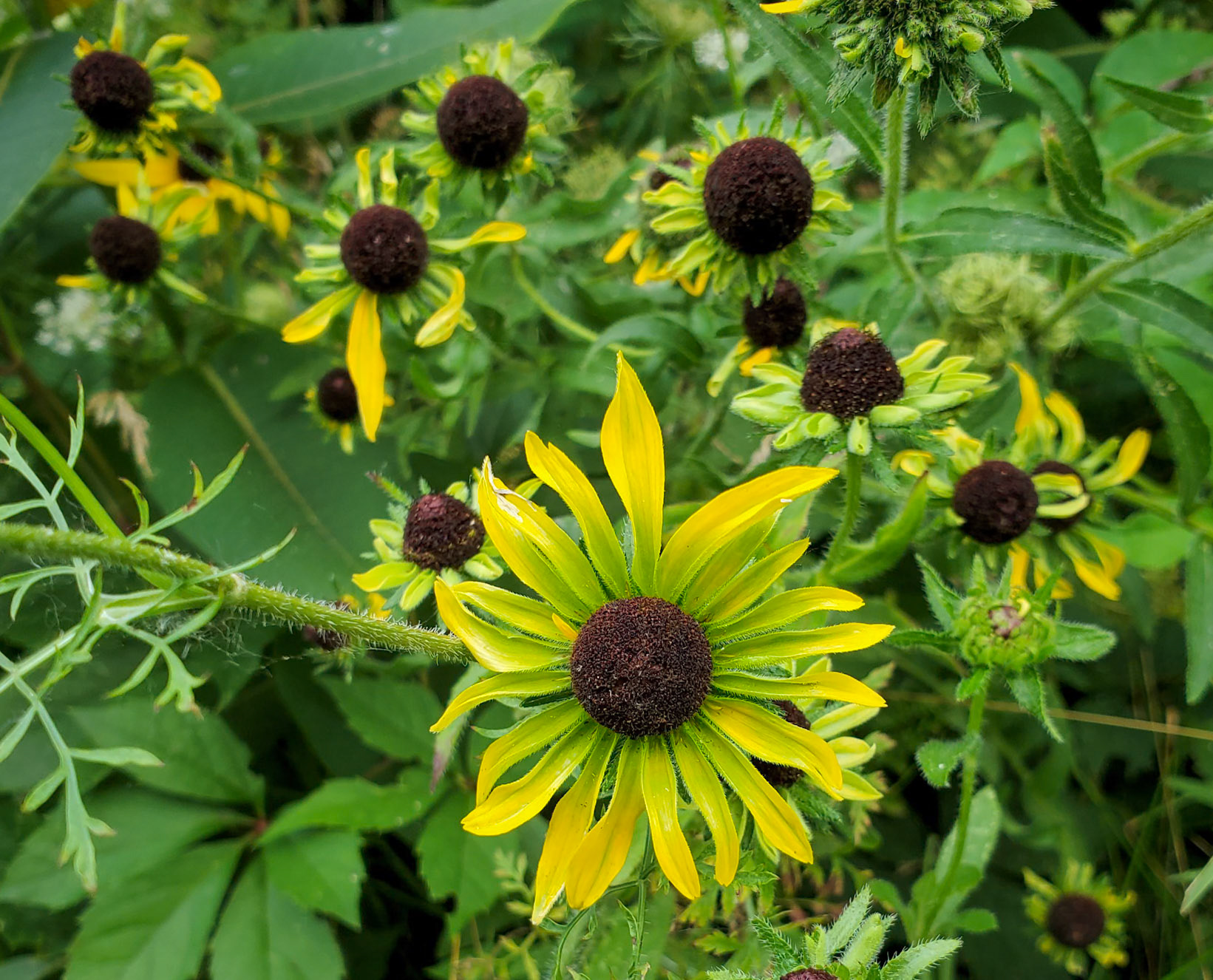
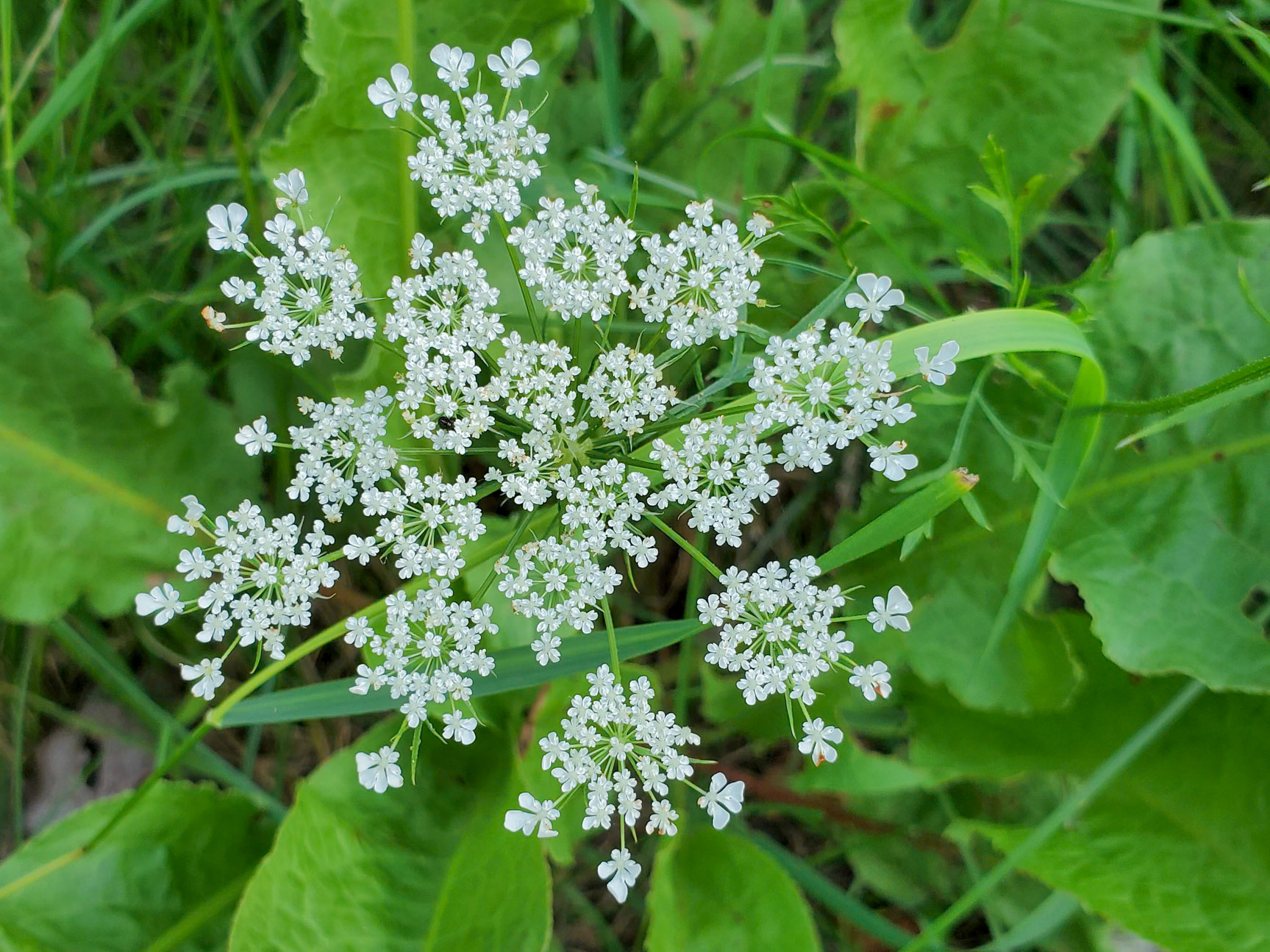
Some of the vegetation had progressed to seed stage. (Scroll over for ID)
The smooth sumac was a new one to me
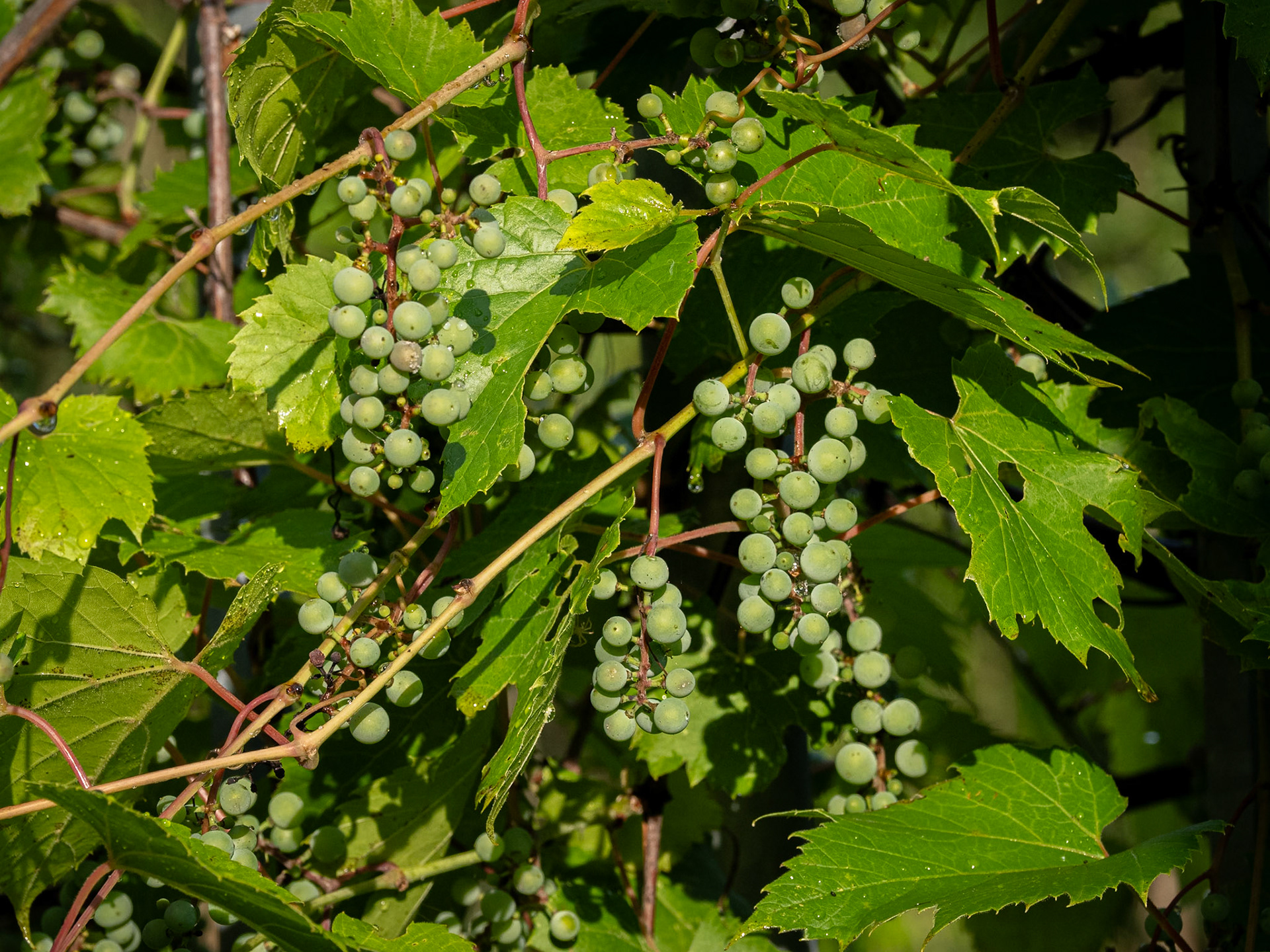
grapes
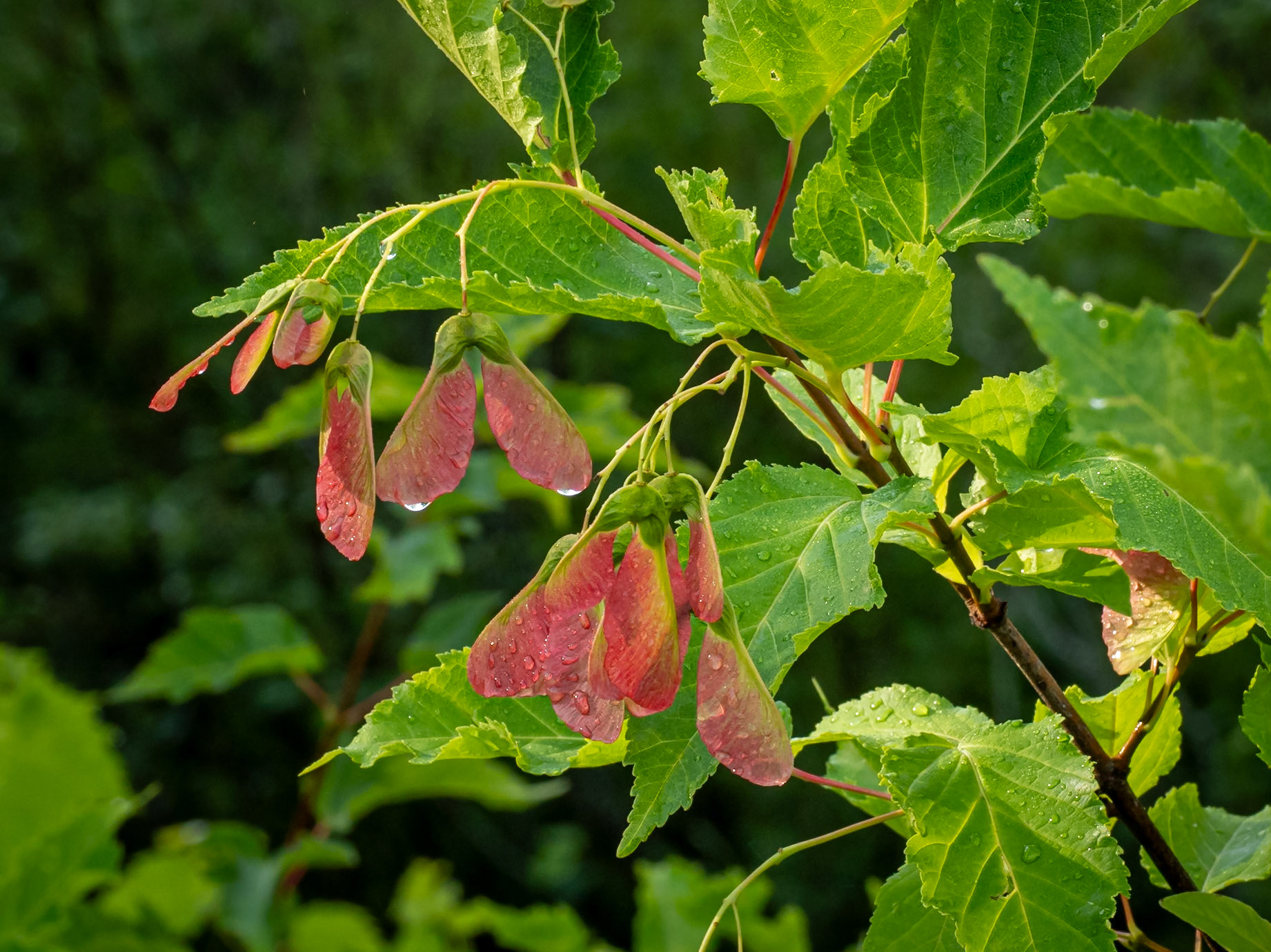
Maple seeds
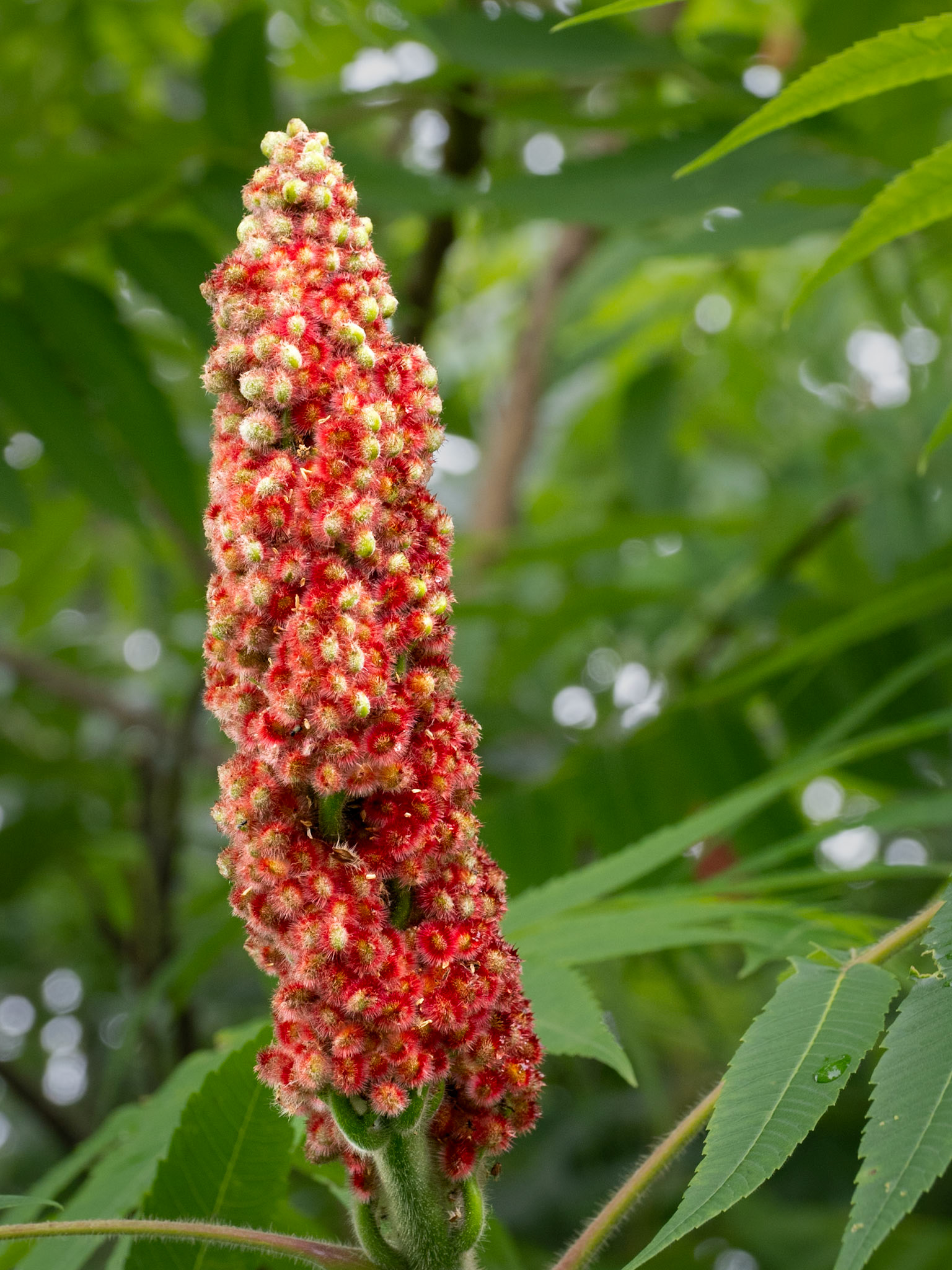
staghorn sumac
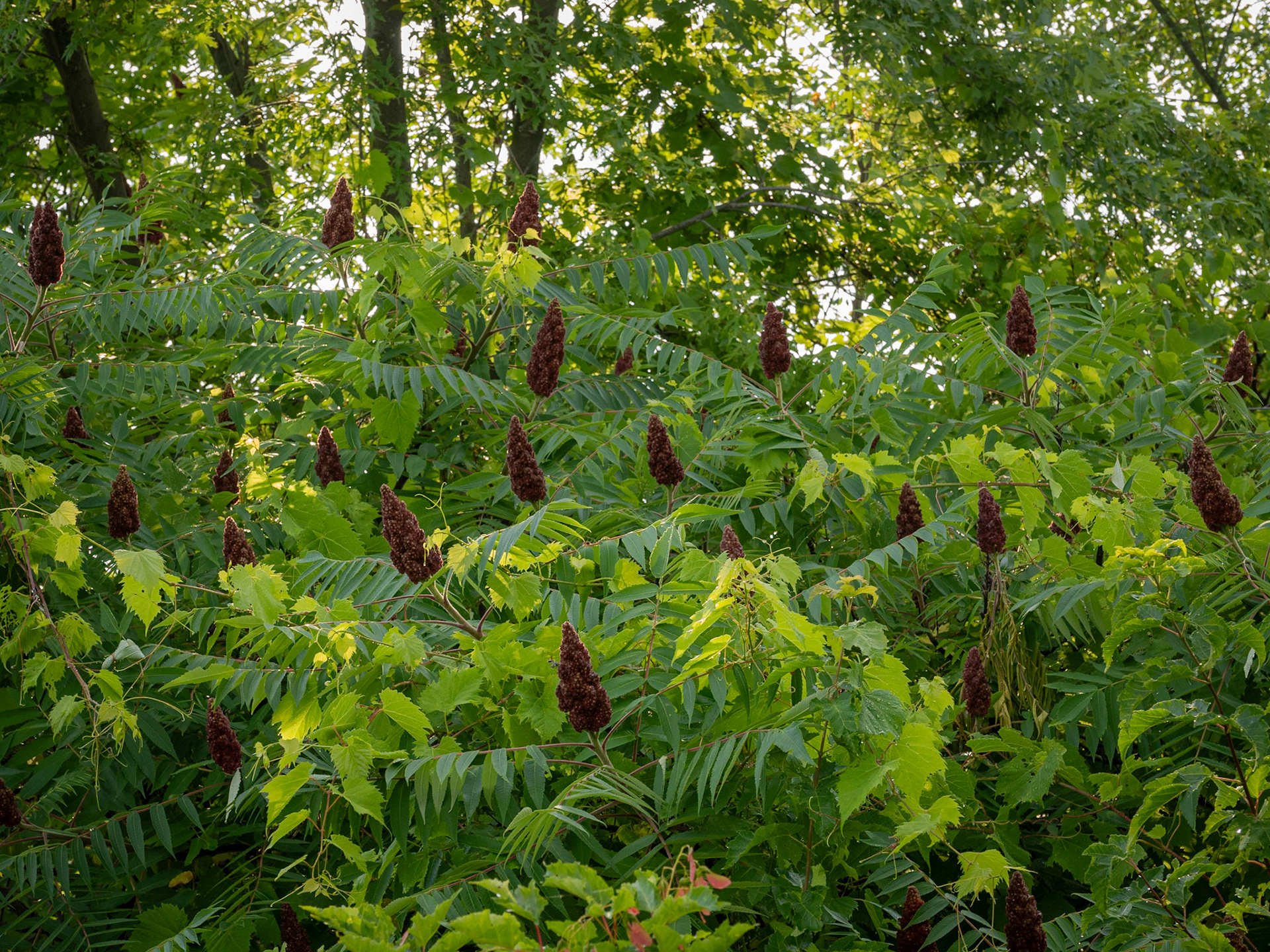
staghorn sumac
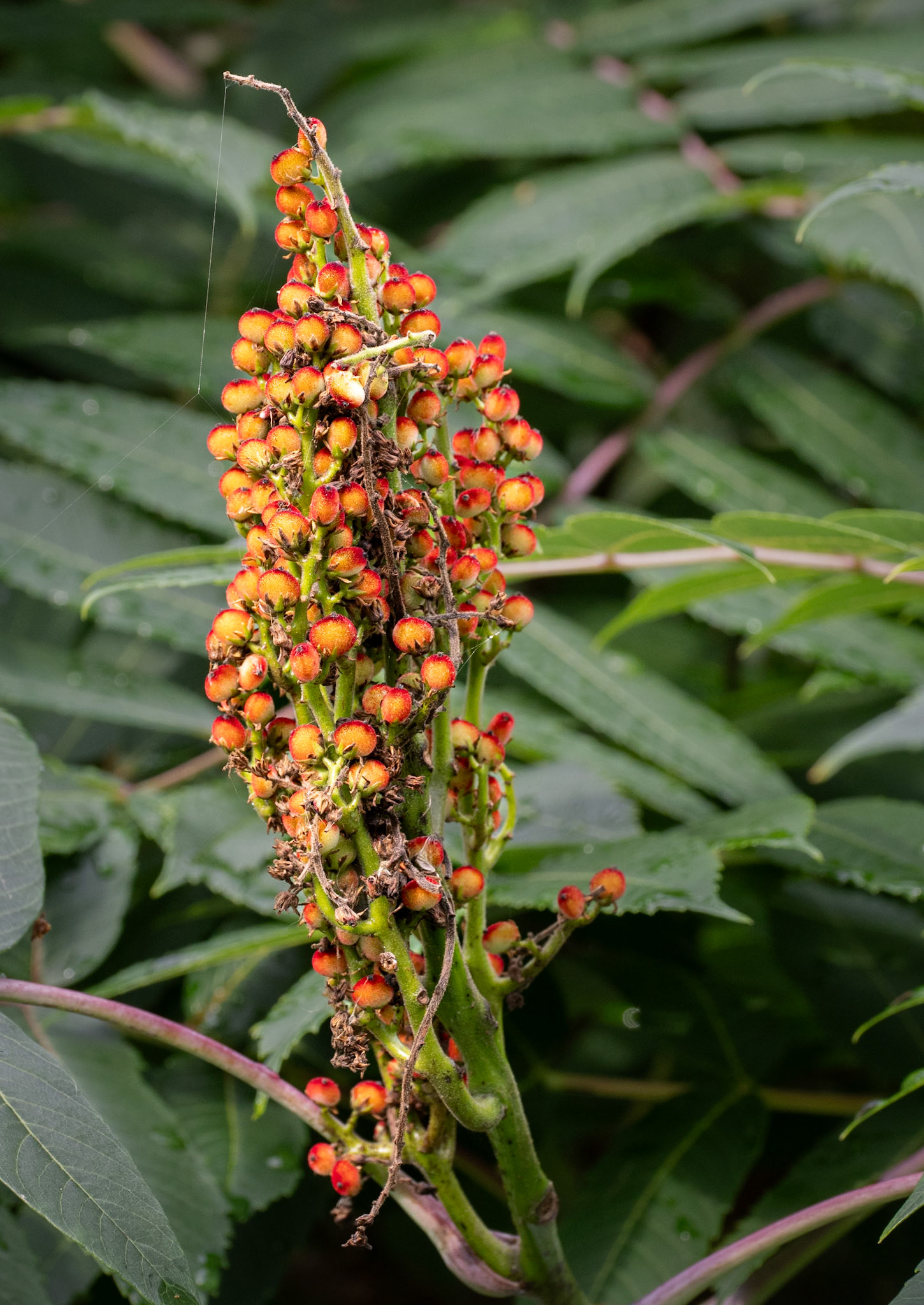
smooth sumac
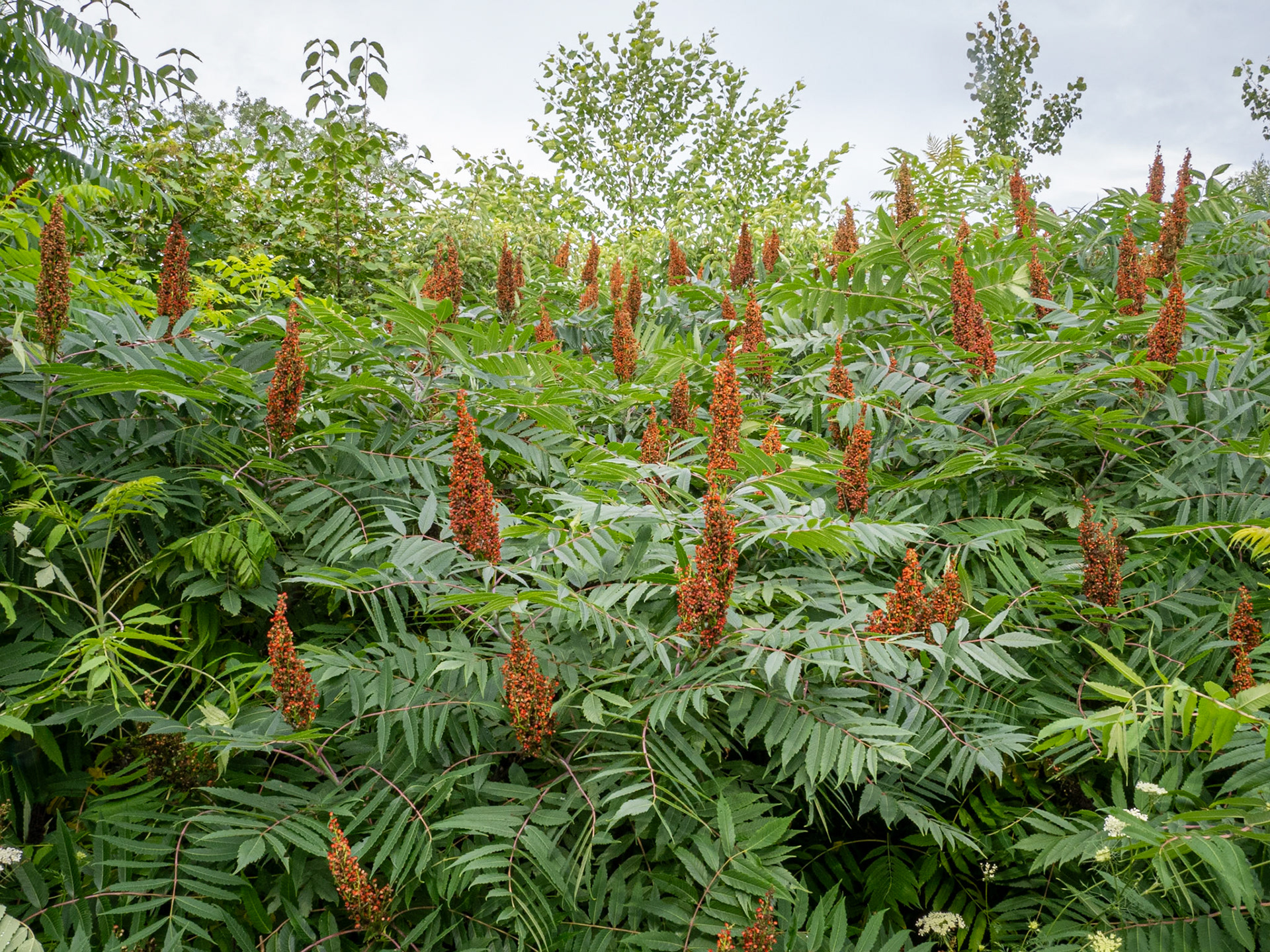
smooth sumac
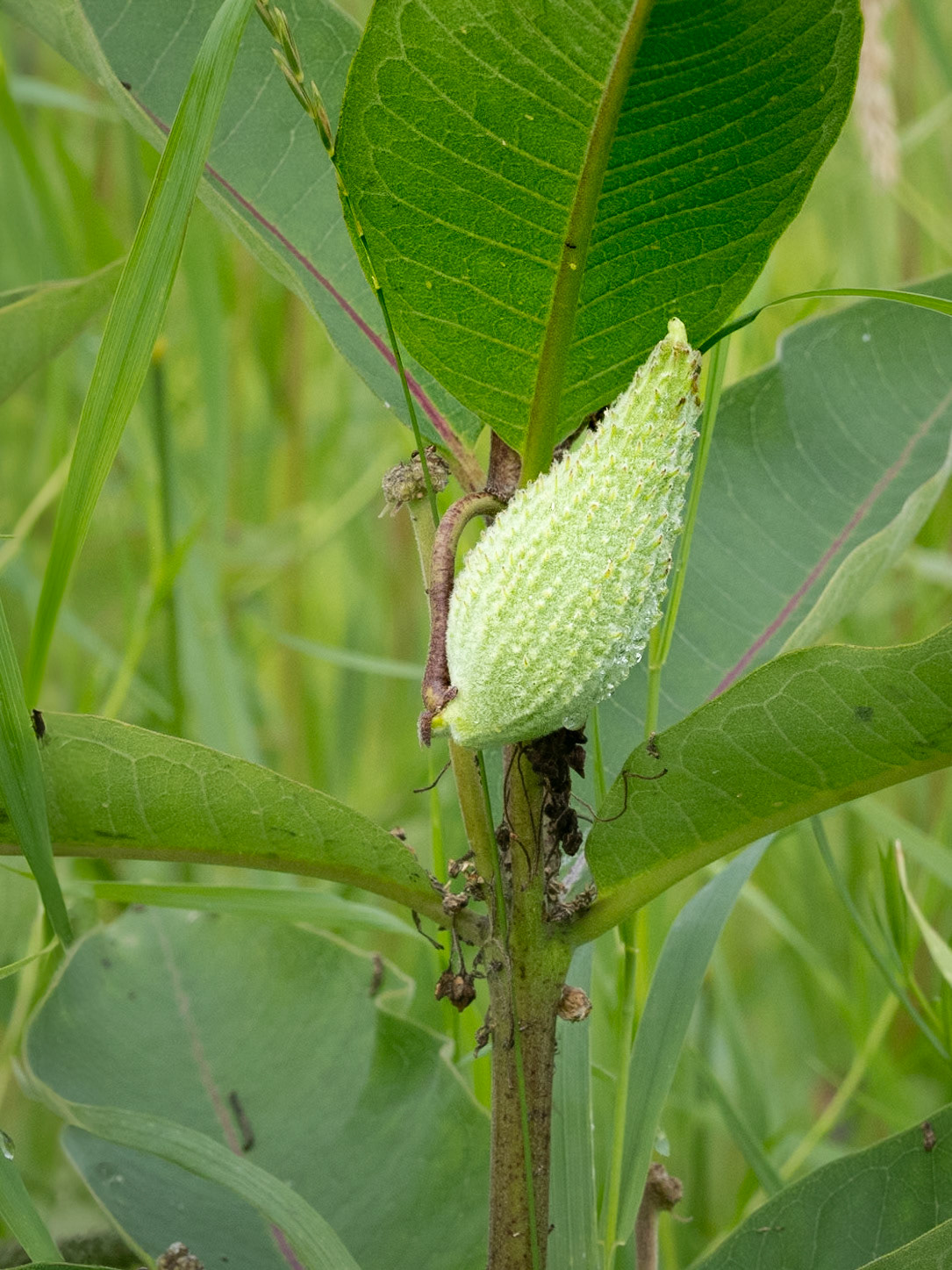
milkweed seed pod
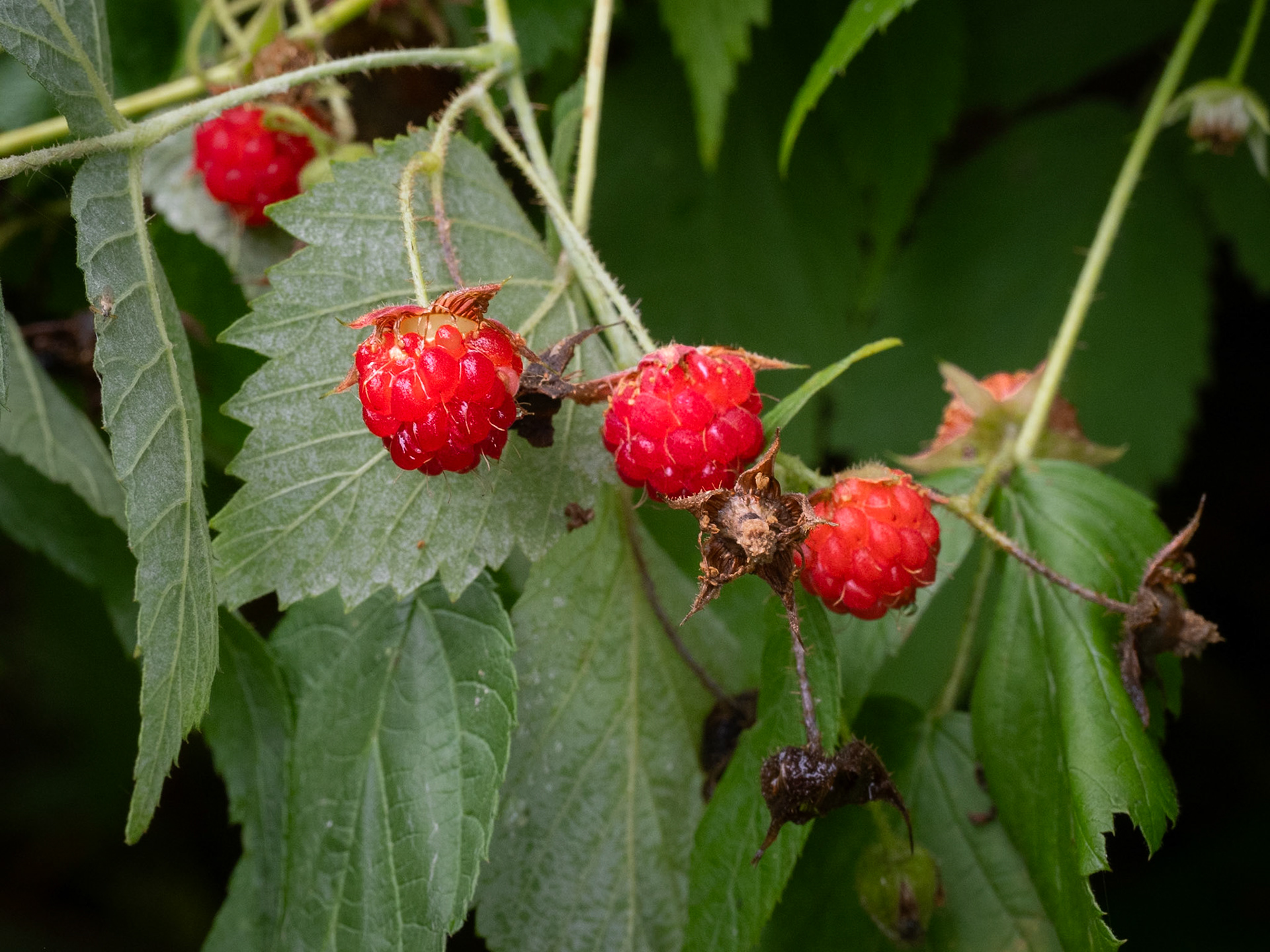
raspberries
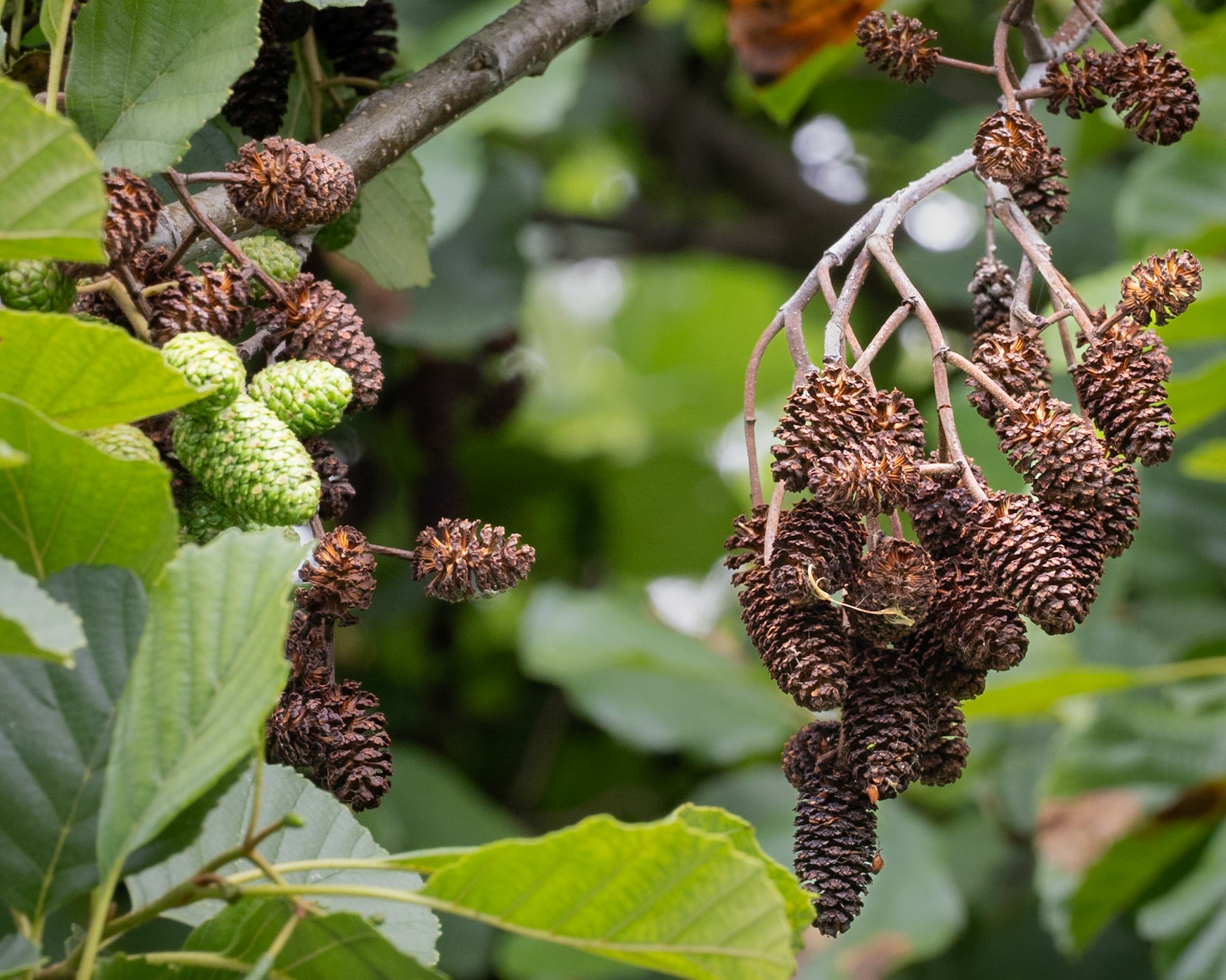
alder
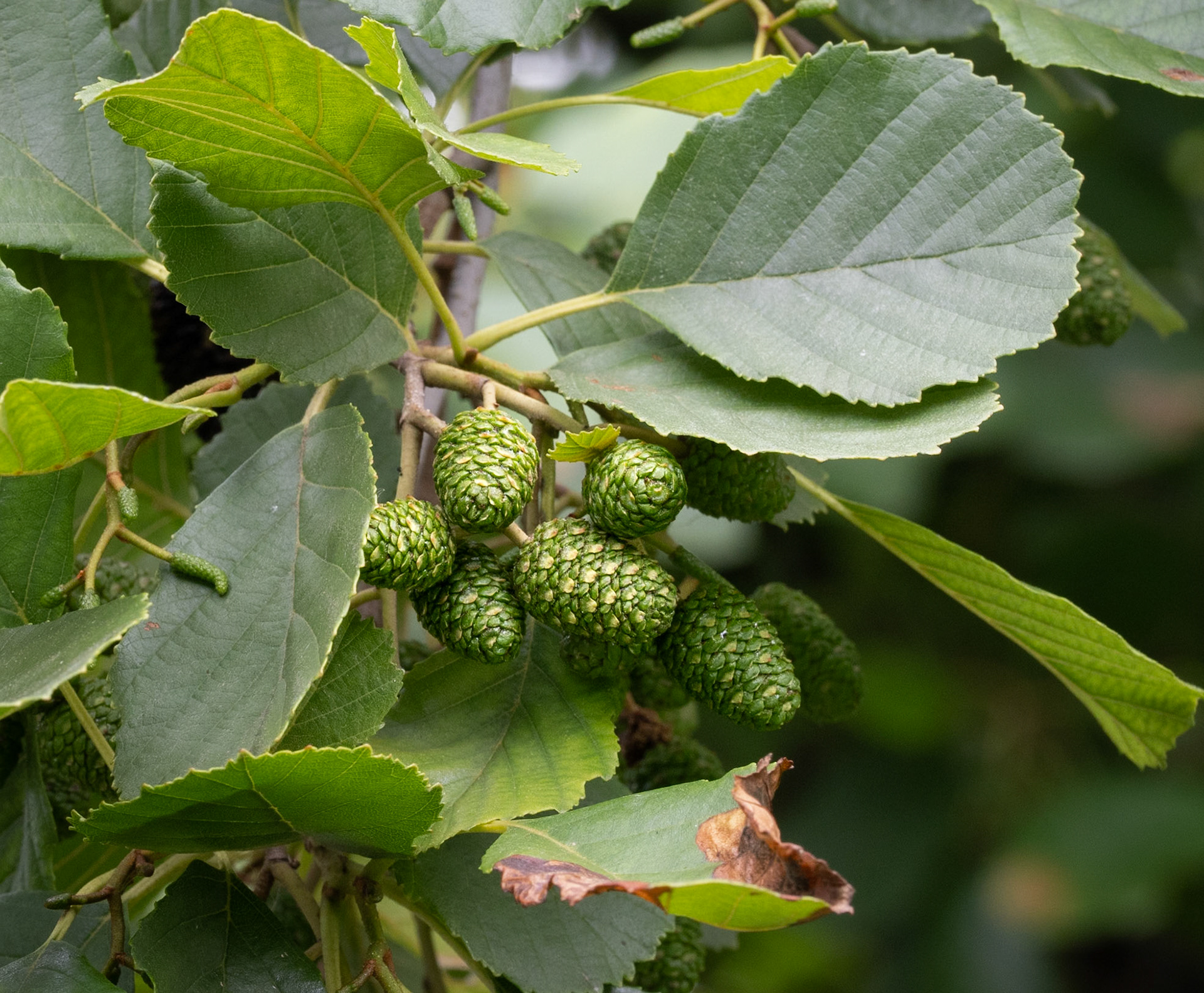
alder
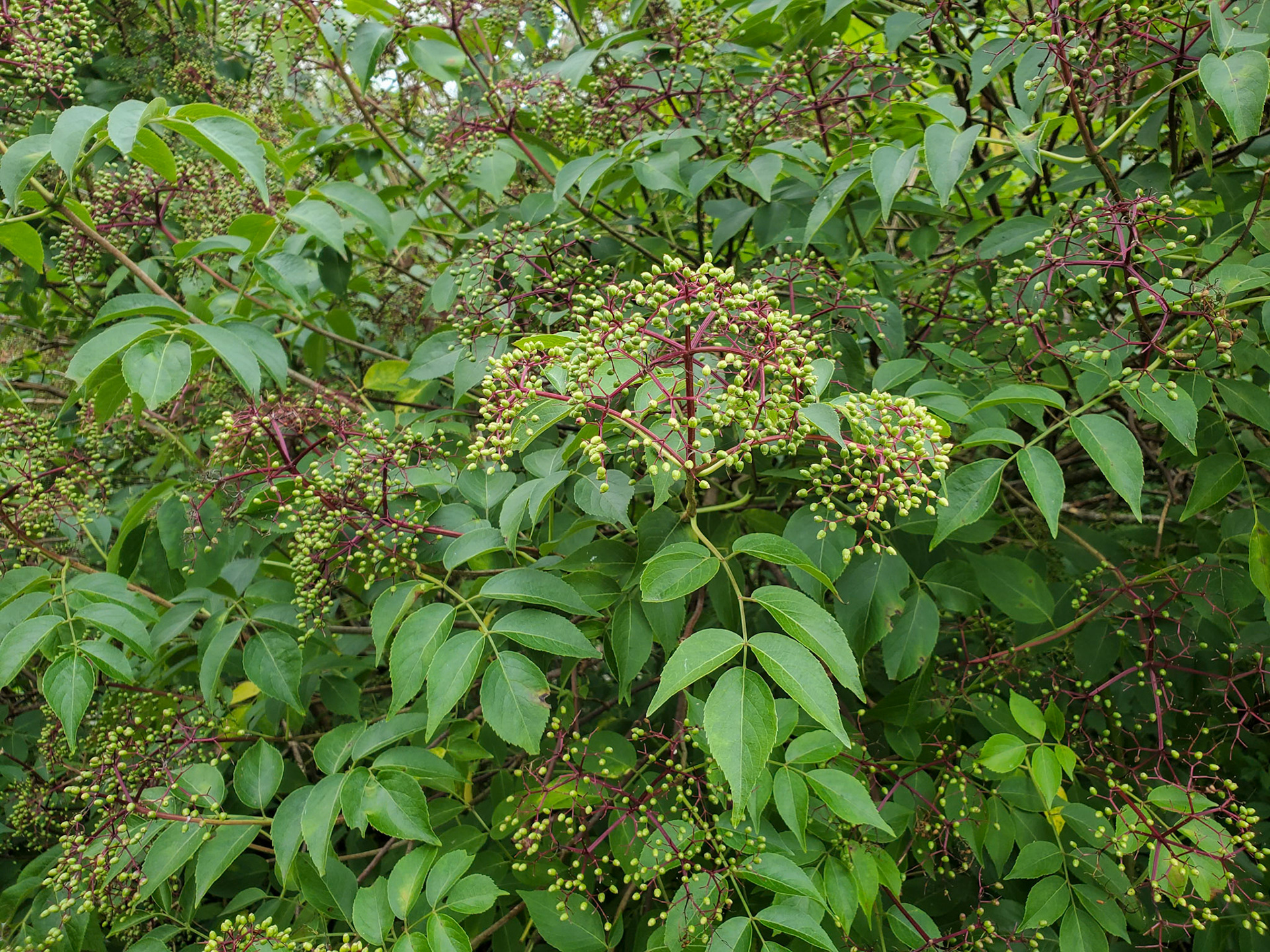
elderberry

Canada thistle
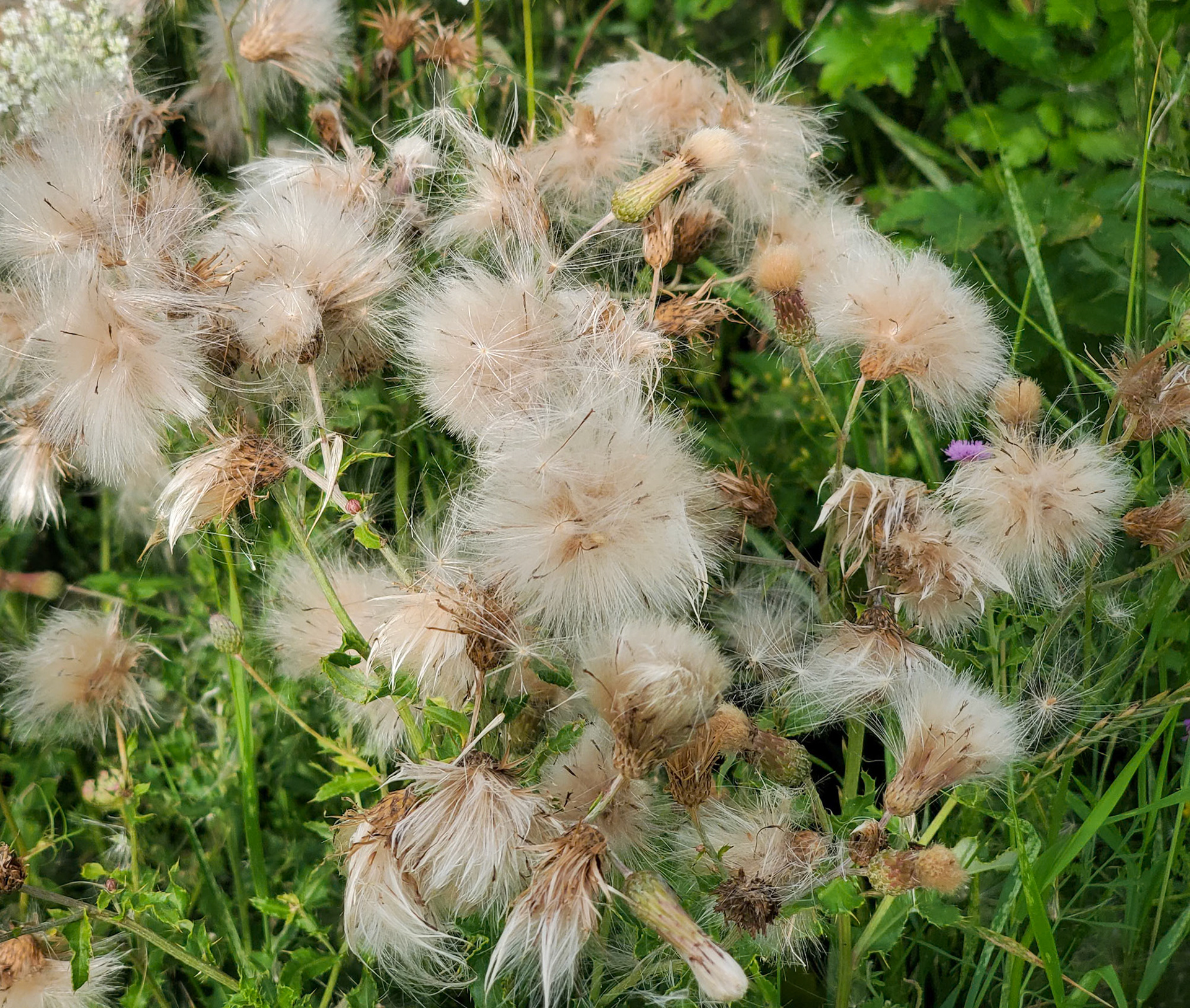
Canada thistle
Staghorn and smooth sumac growing side by side
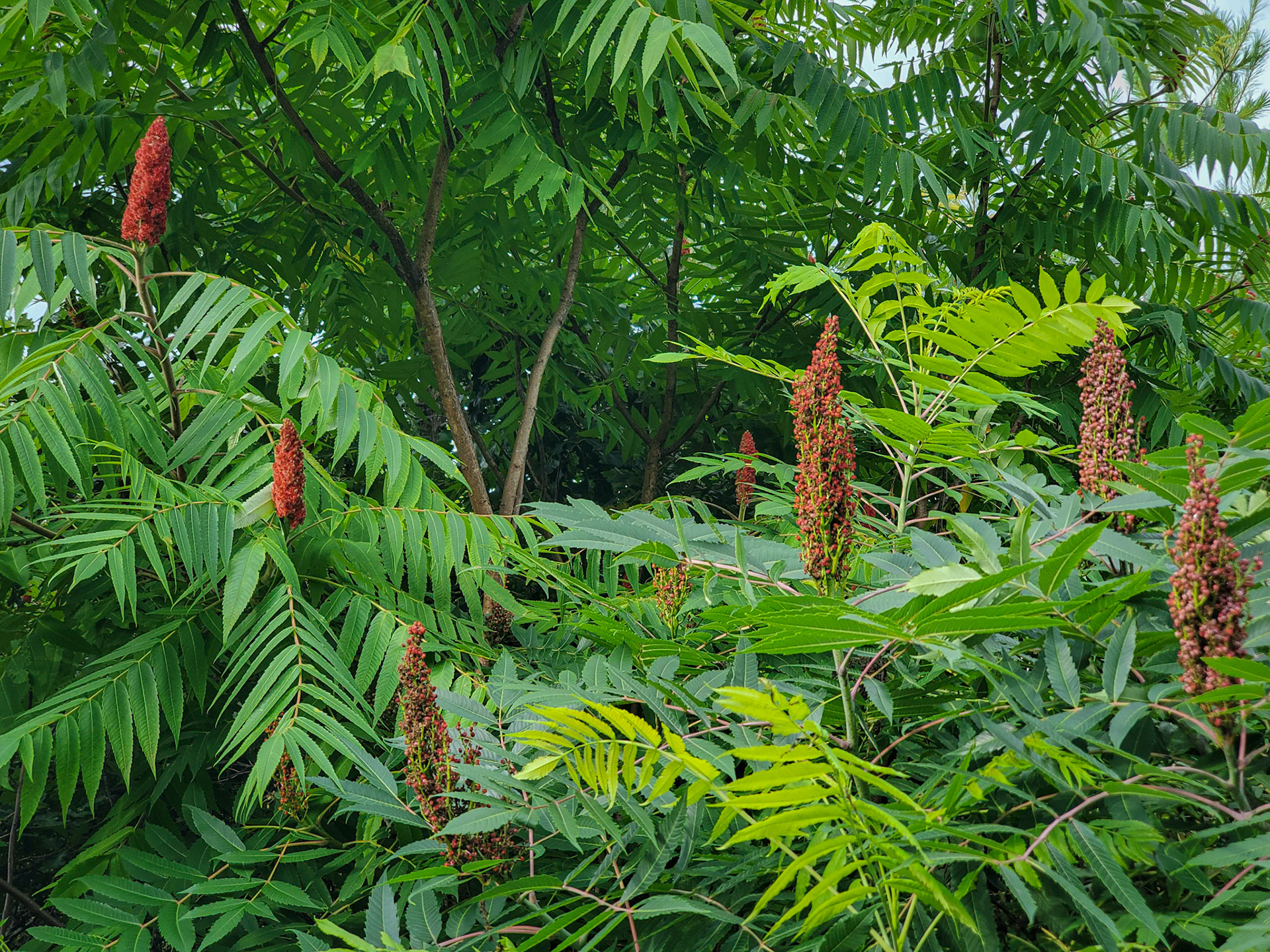
The dill plants were over 6 feet tall in some areas. One area was covered with 6-7 foot tall reed grass

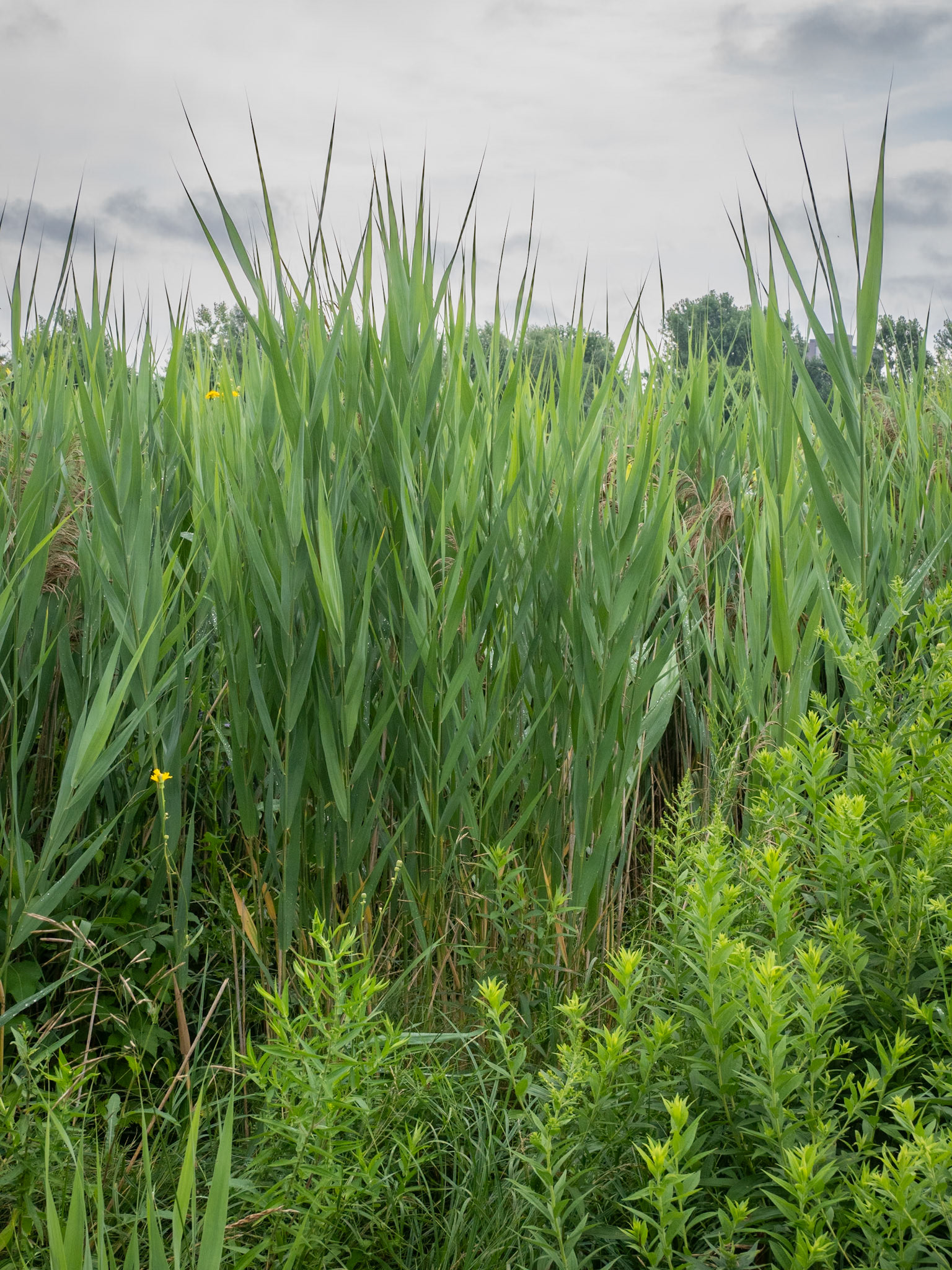
There was a single Norway maple tree in amongst the the other trees. The colour pattern on the Norway maple stood out
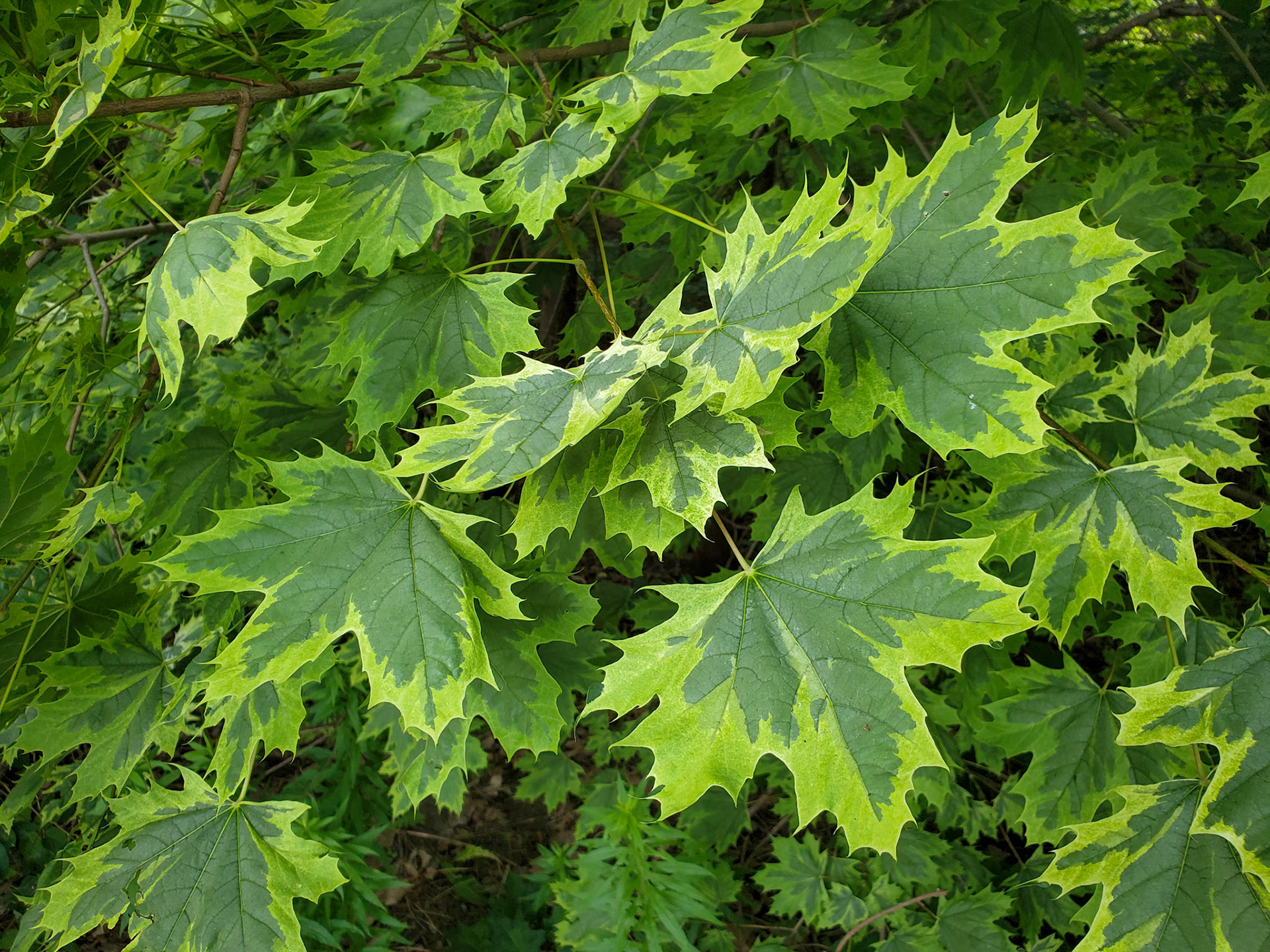
The find of the morning was a hummingbird clearwing moth in amongst the wild bergamot
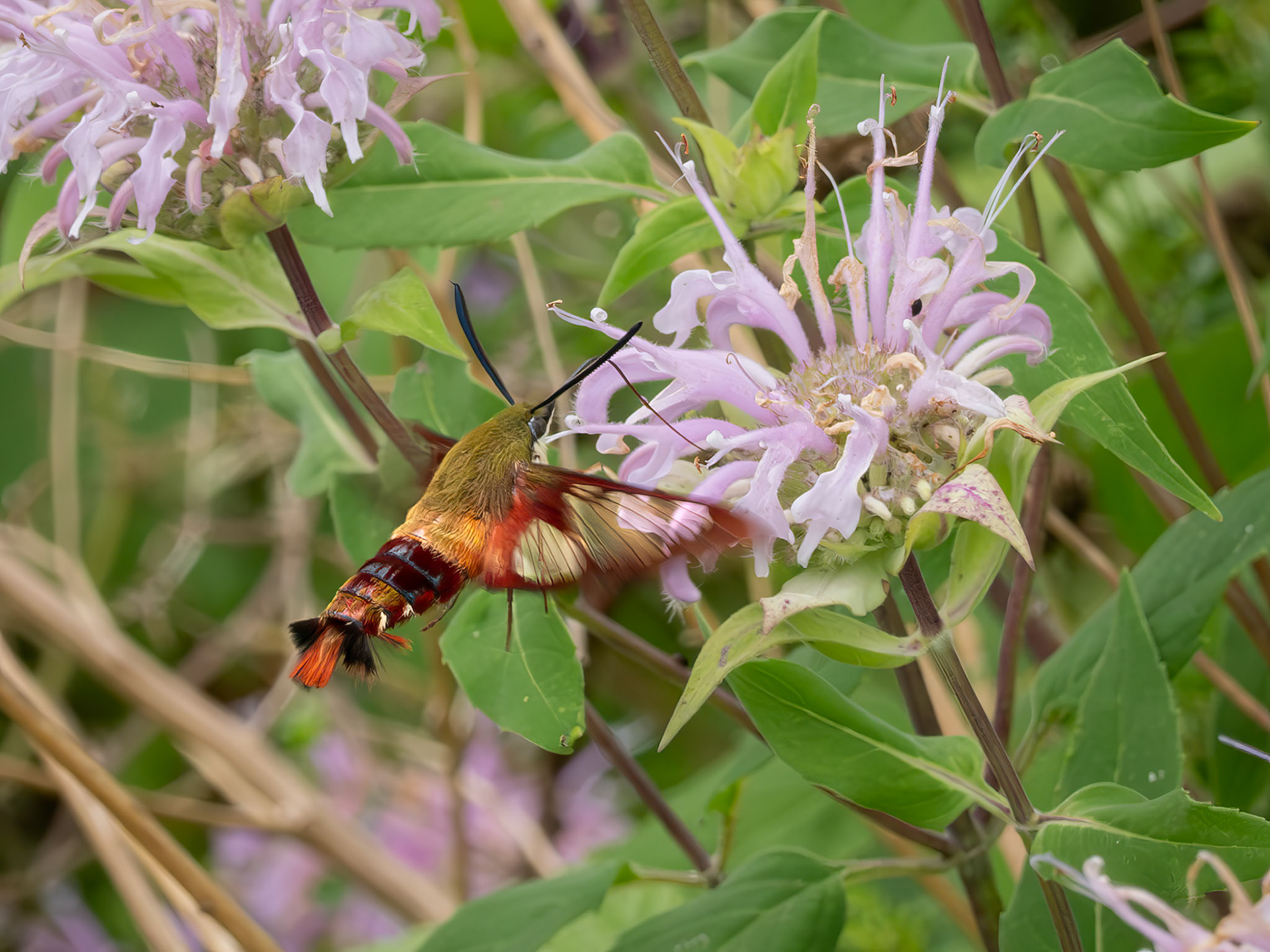
More insects (Scroll over for ID)
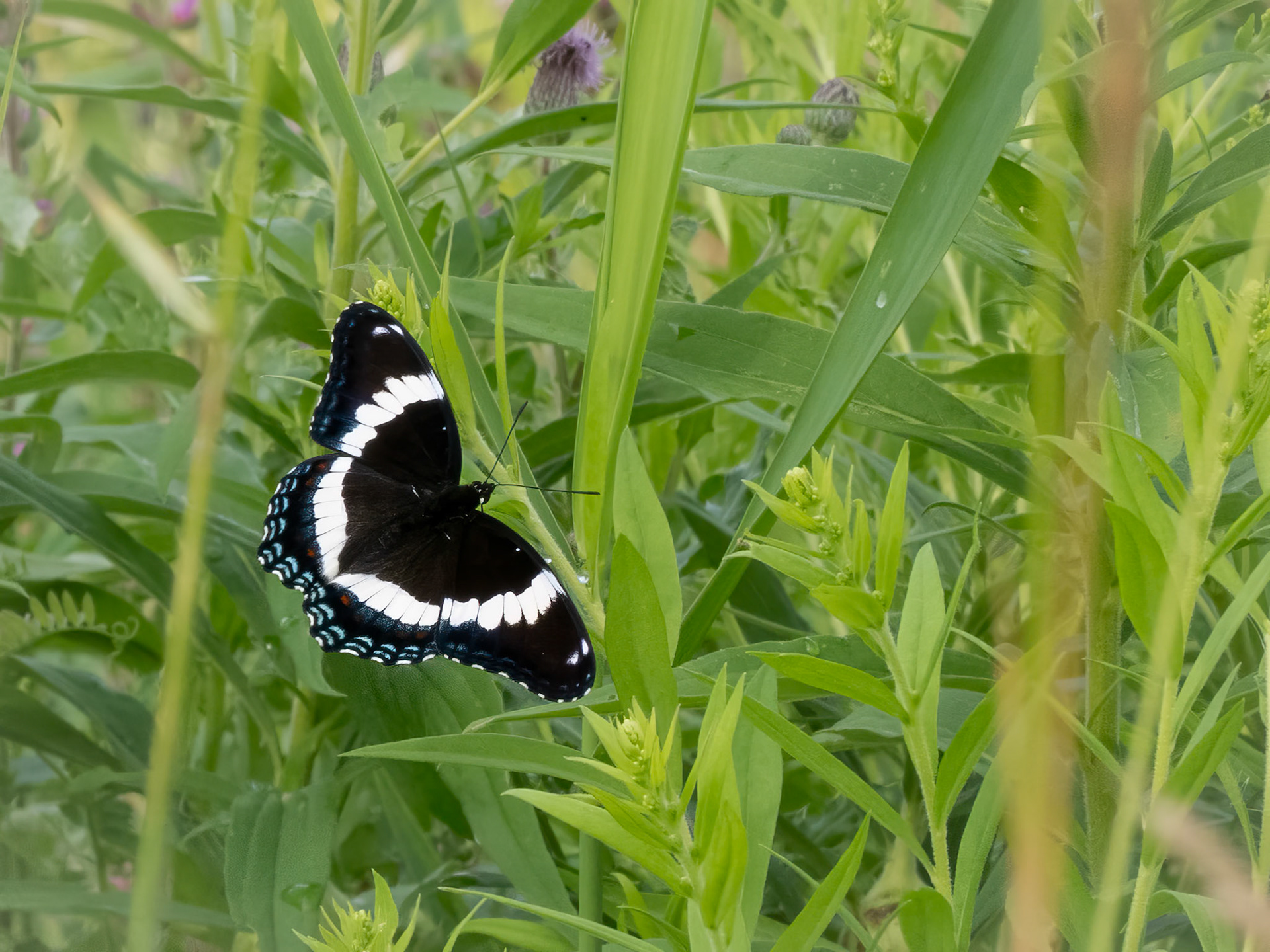
red-spotted admiral butterfly
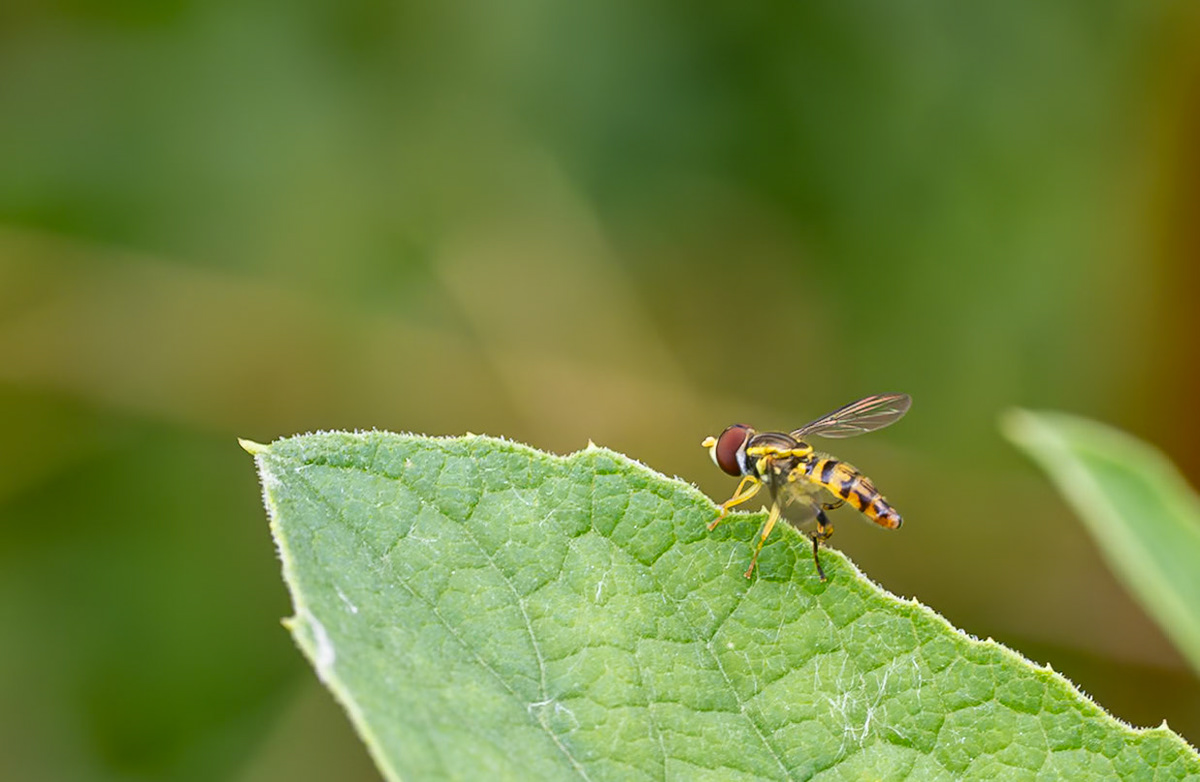
hoverfly
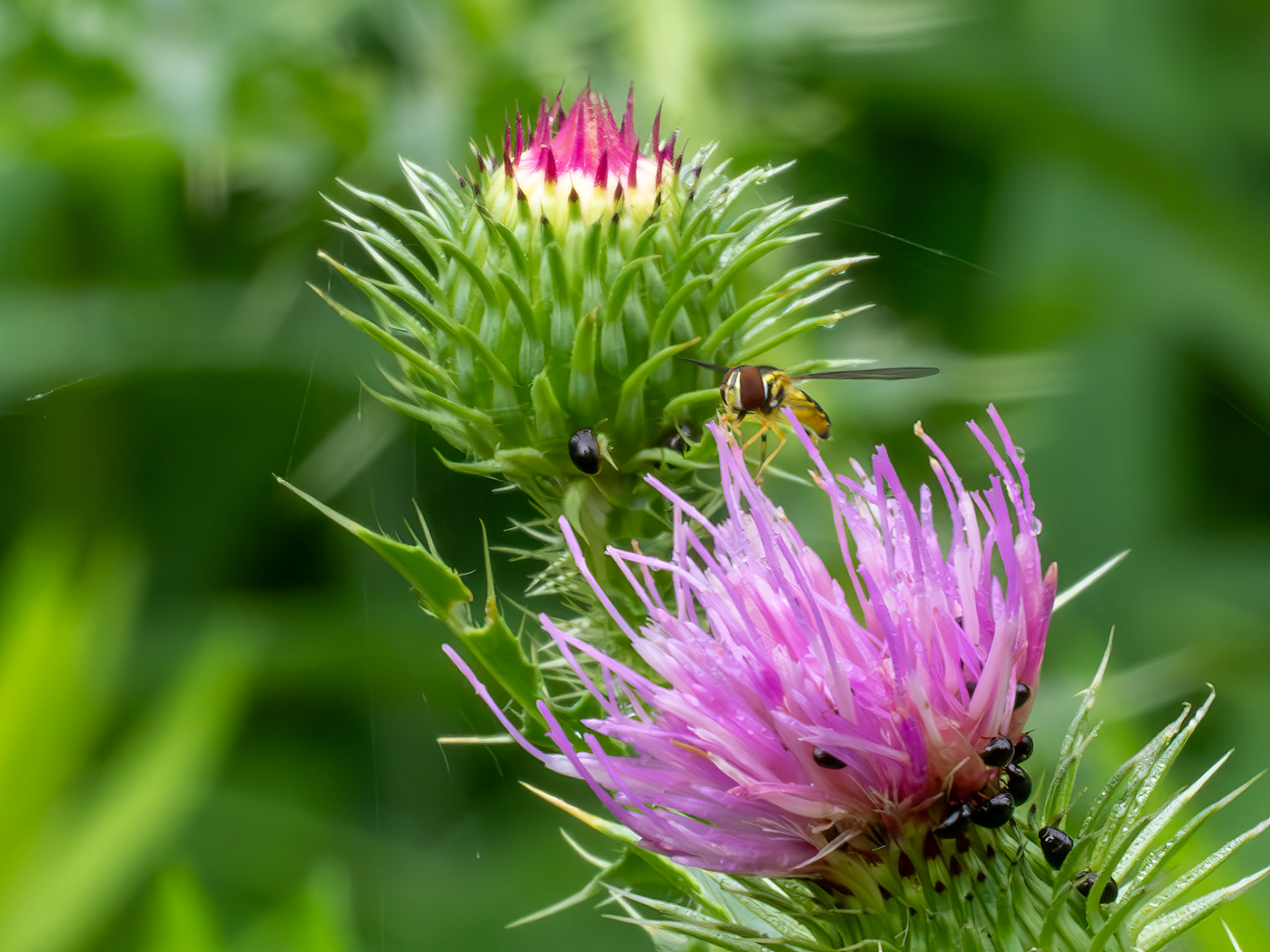
hoverfly
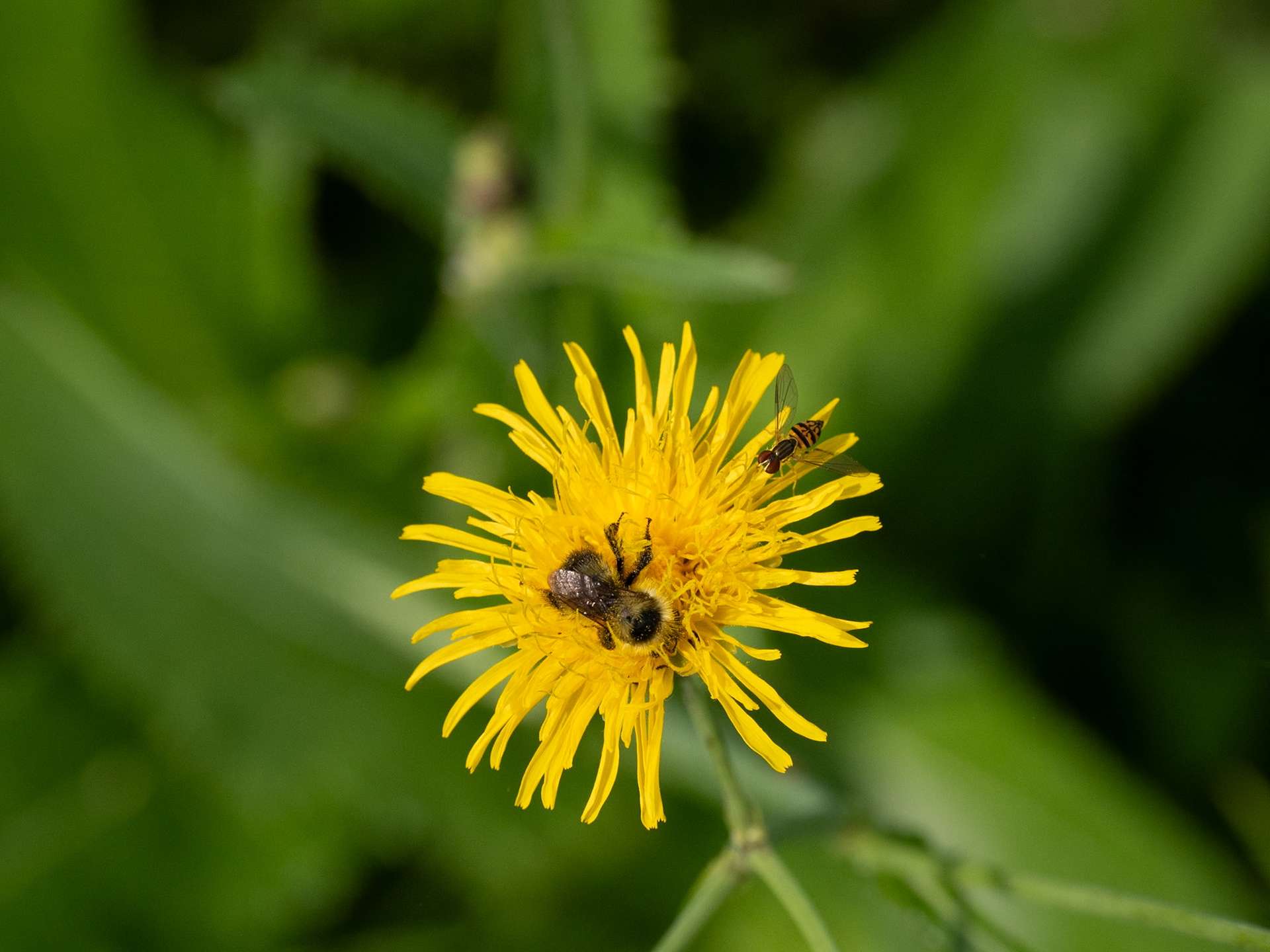
hoverfly and bee
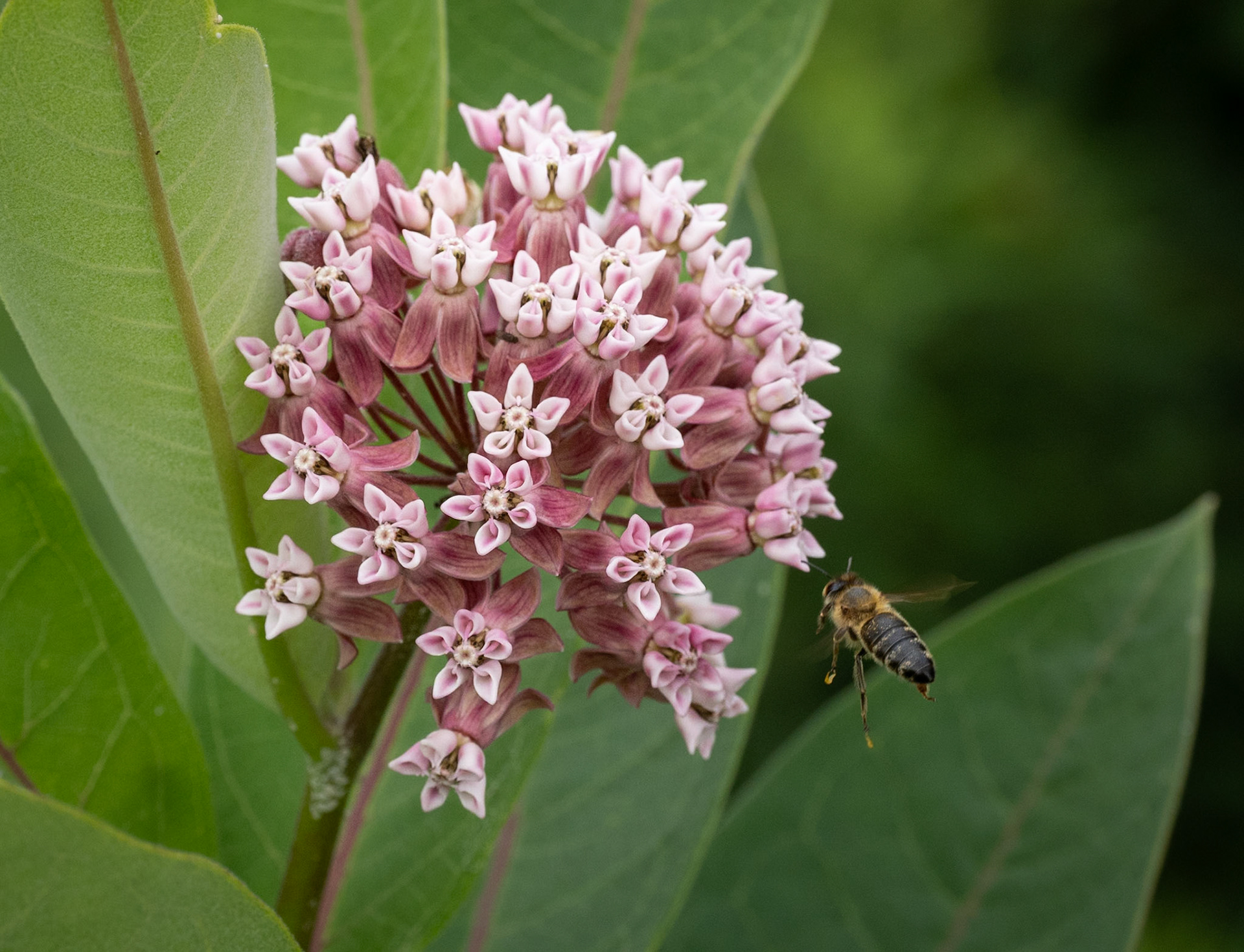
honey(?) bee

red-belted bumble bee
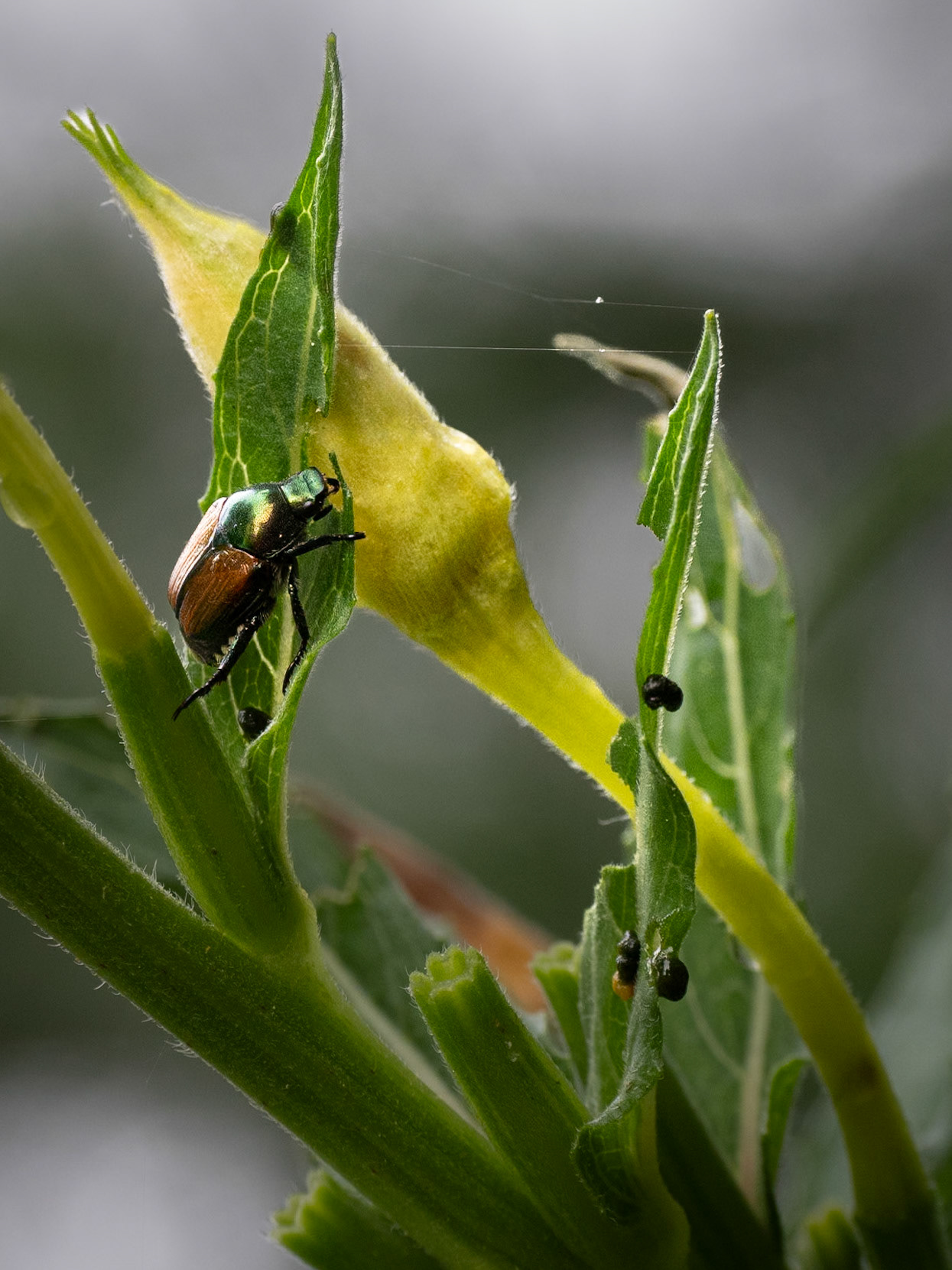
Japanese beetles
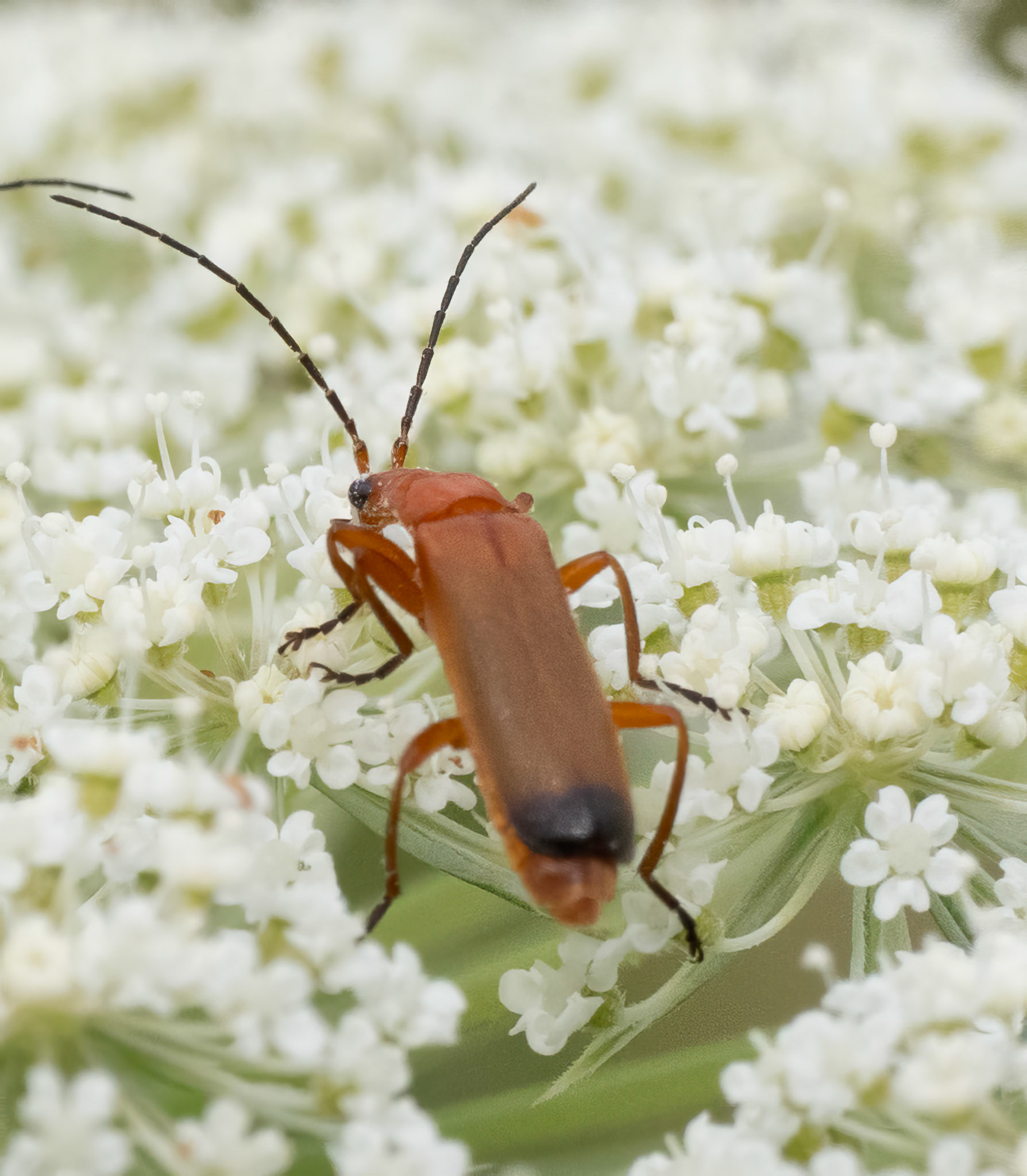
common red soldier beetle
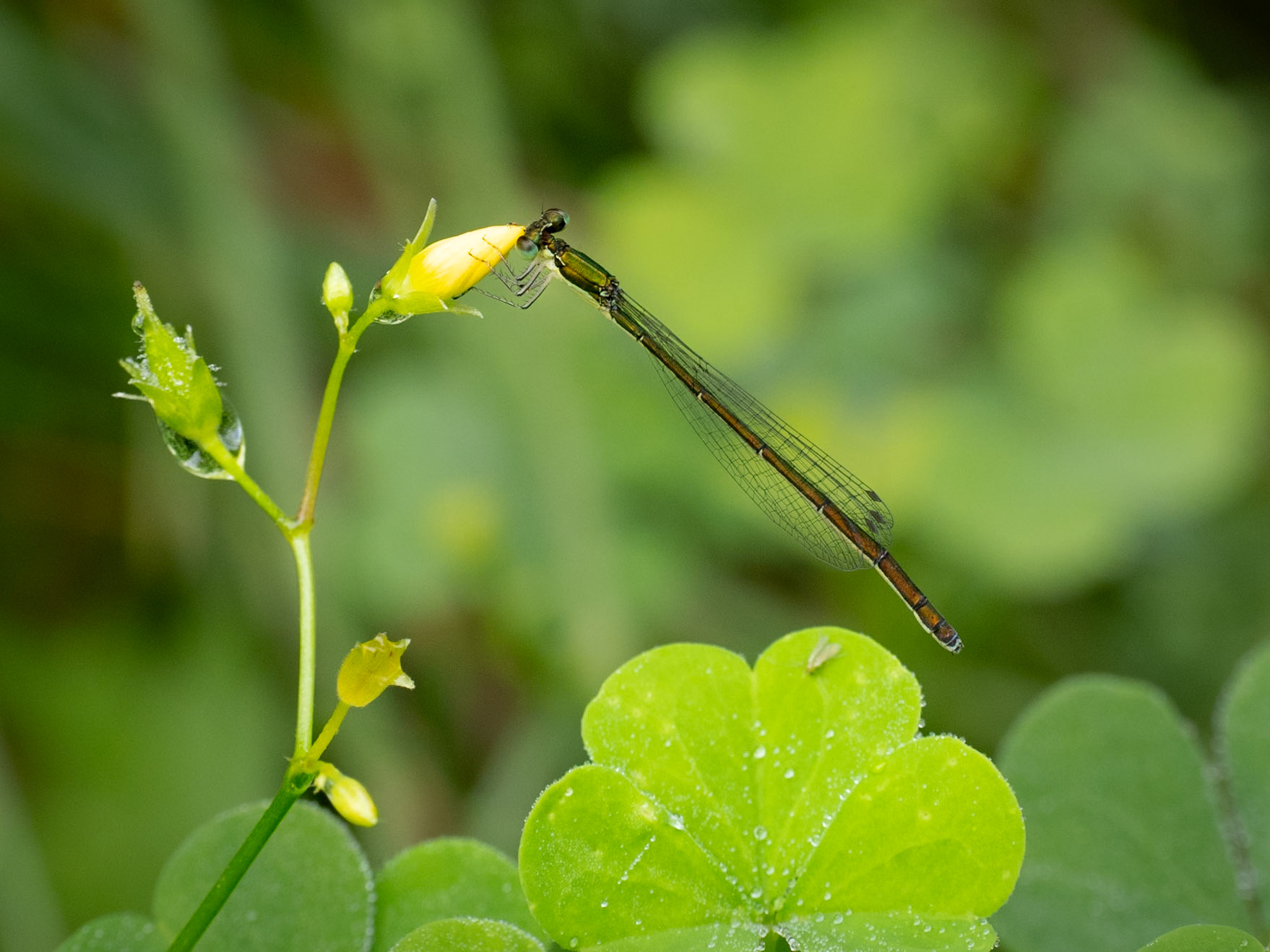
(sprite?) damselfly
I almost missed the snail and the (quarter) inch worm on the daily blossoms
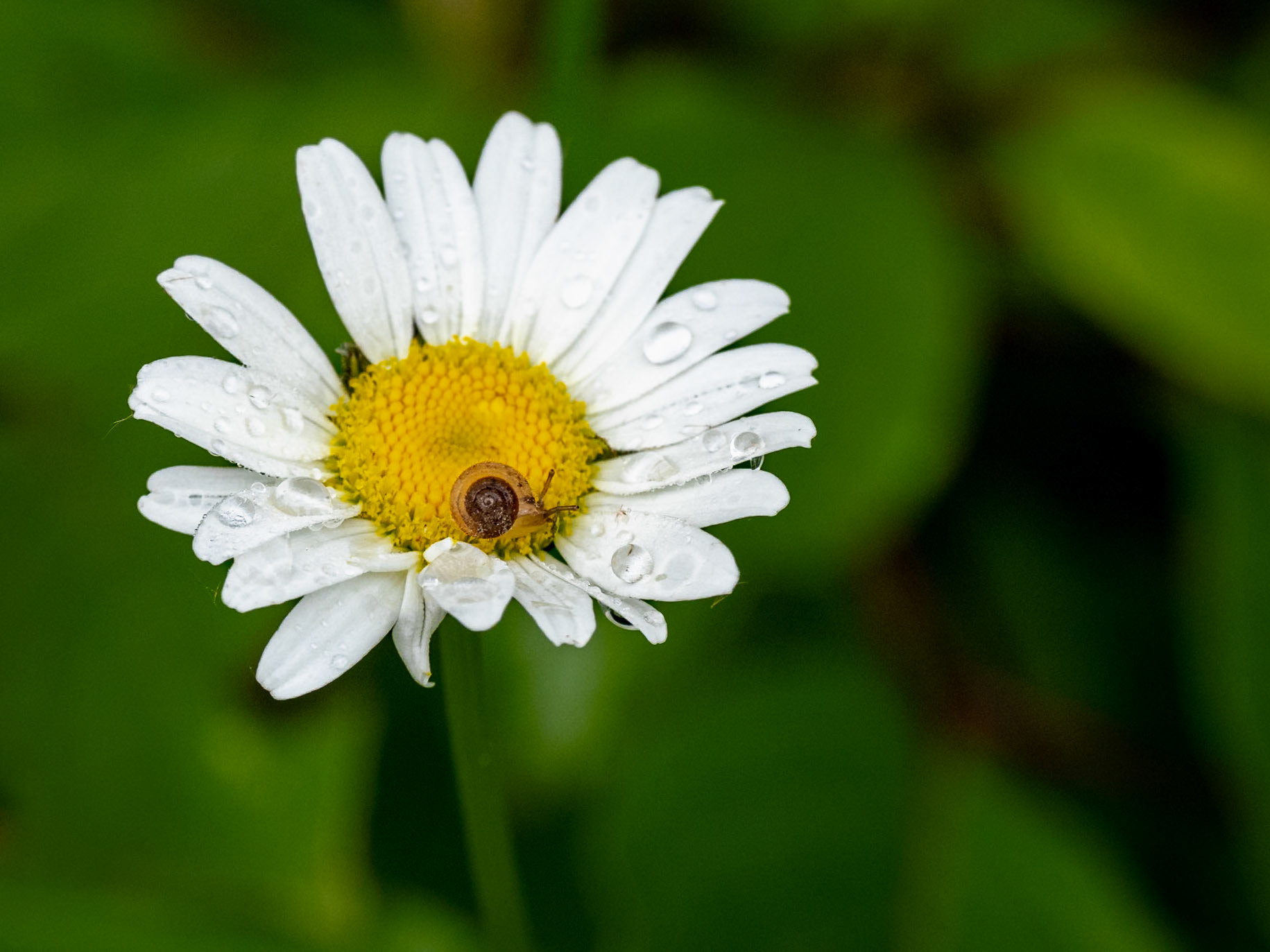
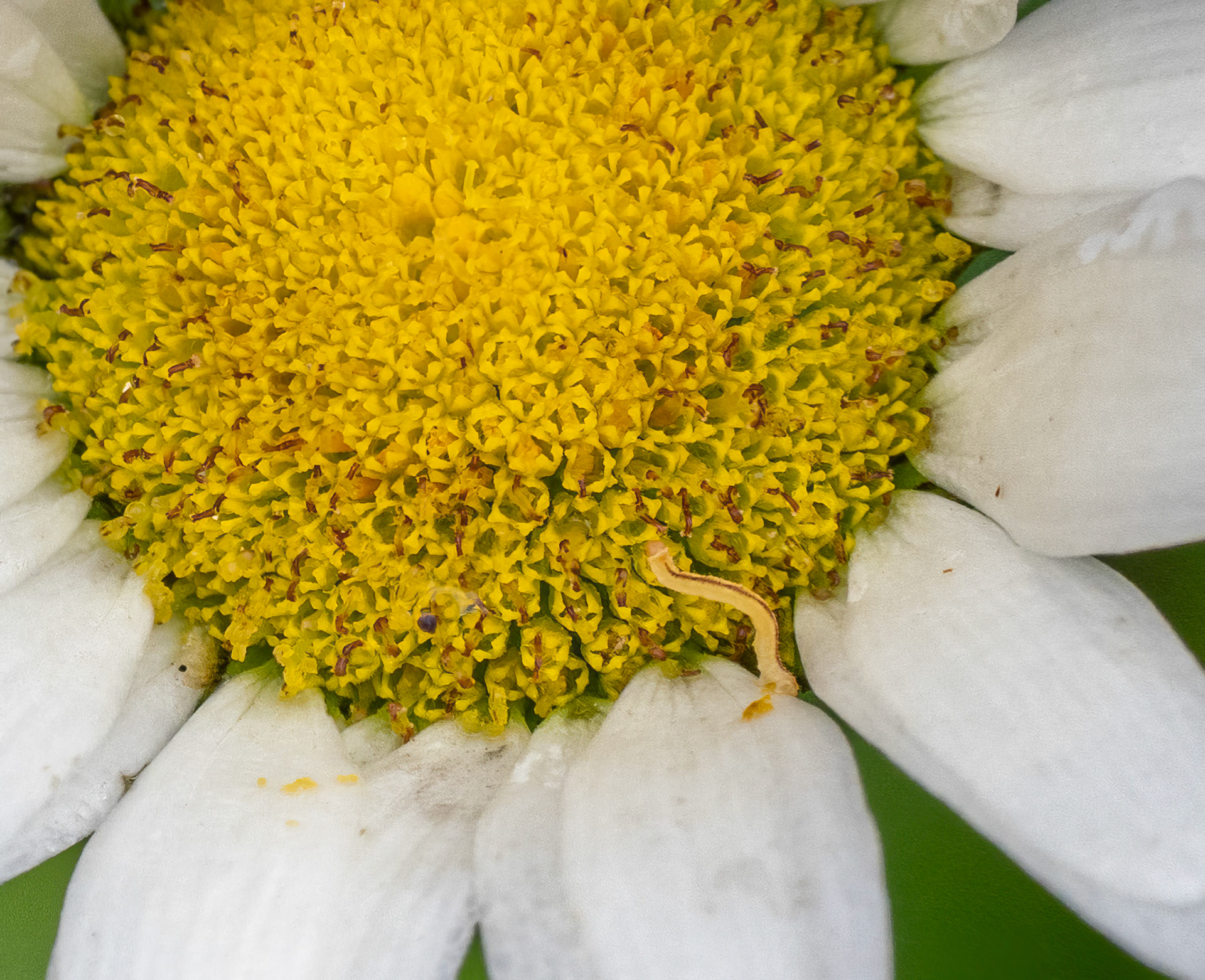
There were a few very large anthills, hidden in the deep grass, to be avoided. Insects had burrowed into the goldenrod stems and formed galls.
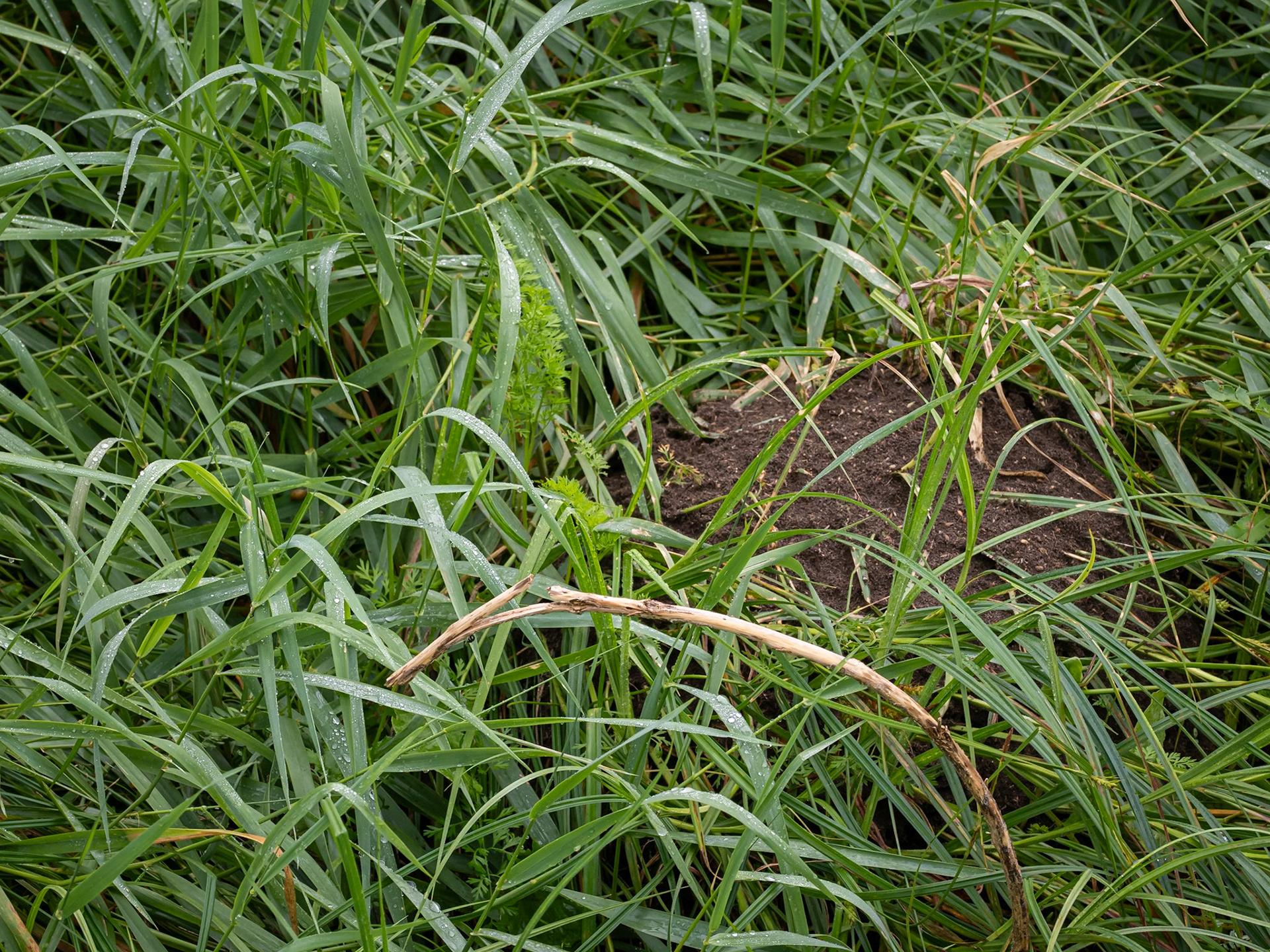
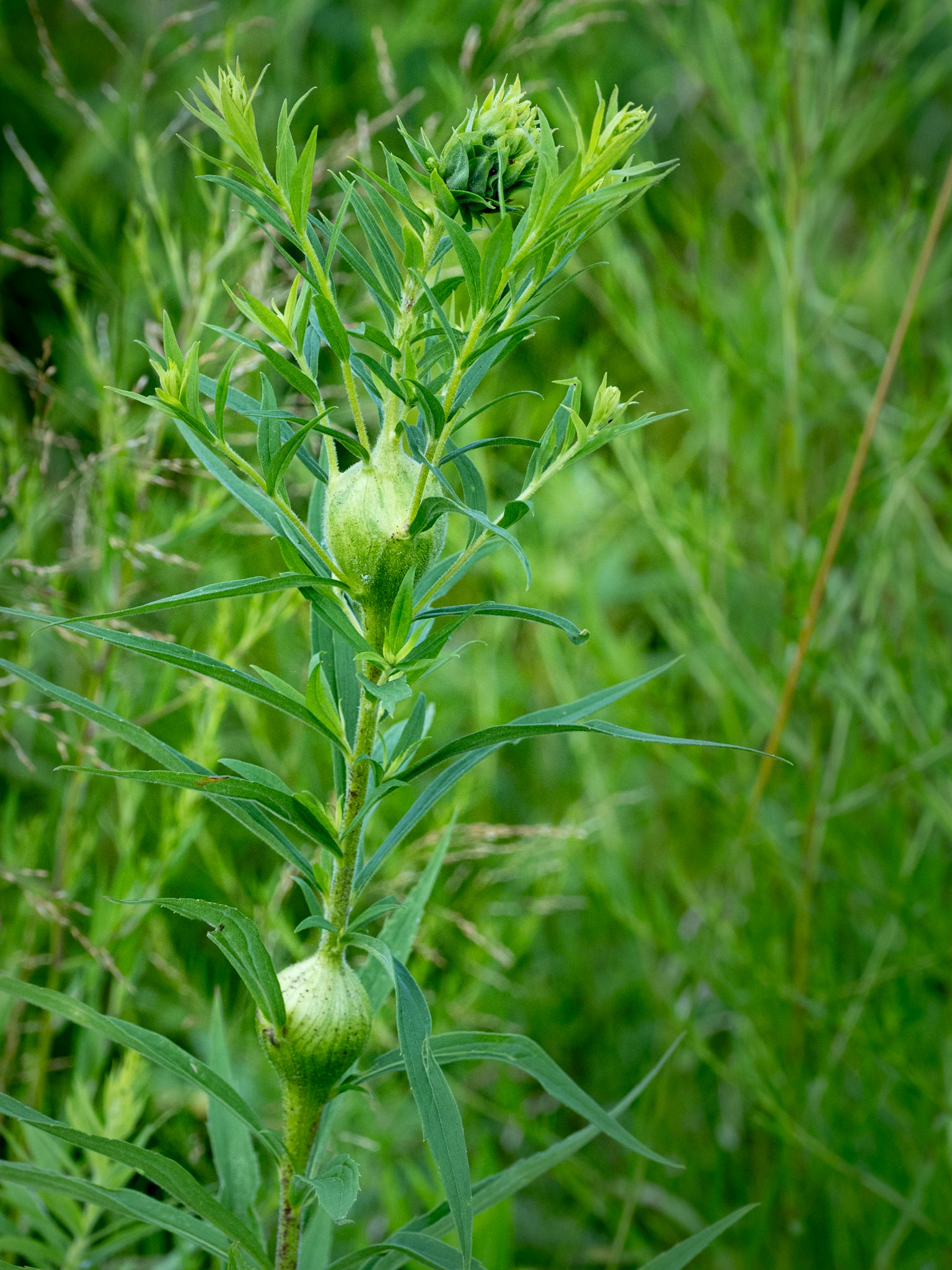
It had rained the evening before with no breeze overnight so there was an abundance of raindrops to soak the clothes and shoes
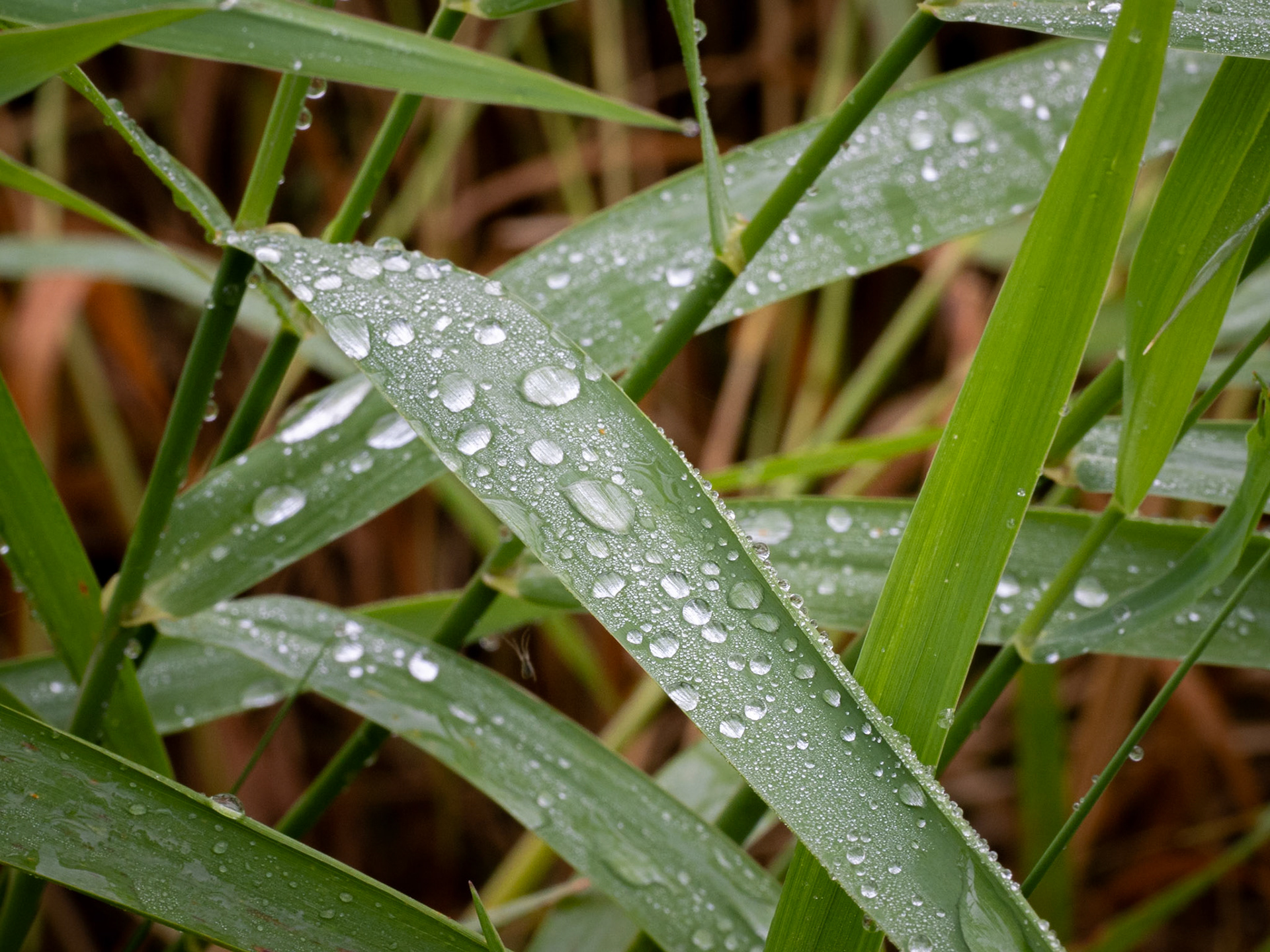
I'm of mixed minds on this photo. There were several snapping turtle nests that had been protected from predation. Yes it is difficult to hear that 99% of the eggs laid do not produce baby turtles that reach the water. Raccoons etc dig up the eggs, or herons, gulls grab the babies as they make their way to the water's edge.
But that is nature's way. The number of eggs laid/predated provide a balance in the number of snappers. More snappers mean less baby ducks . Do the nest protectors think their actions all the way through?
